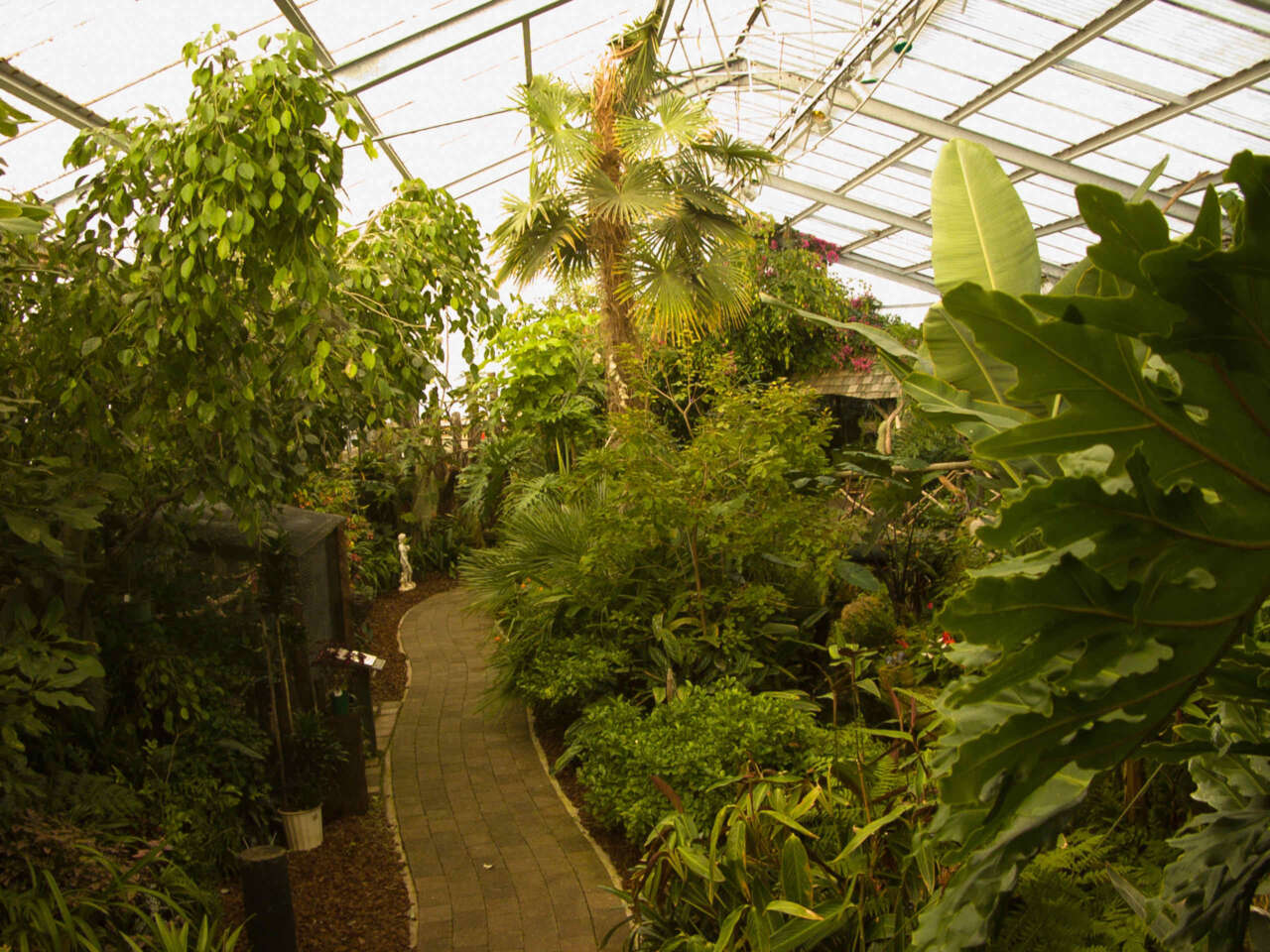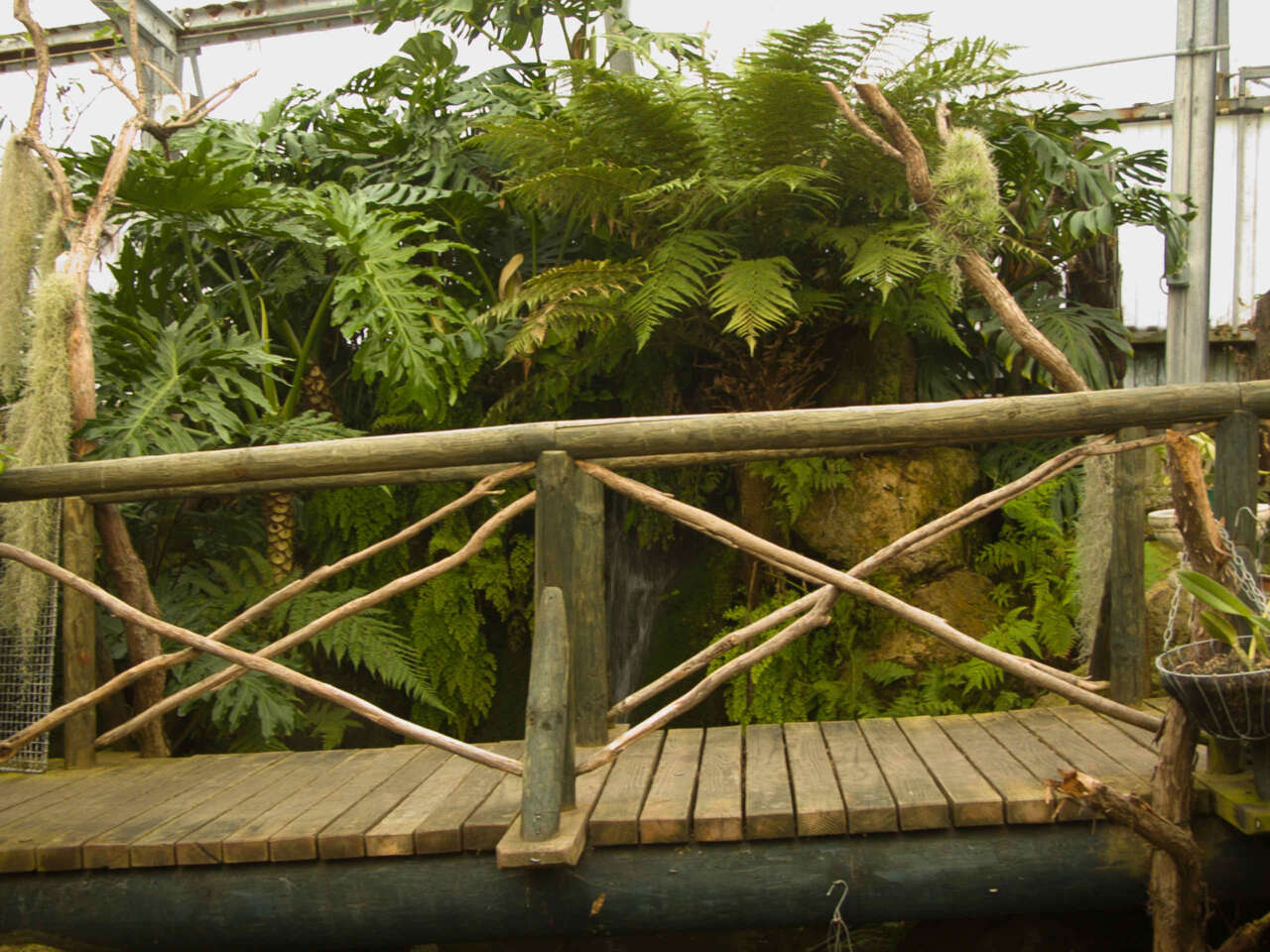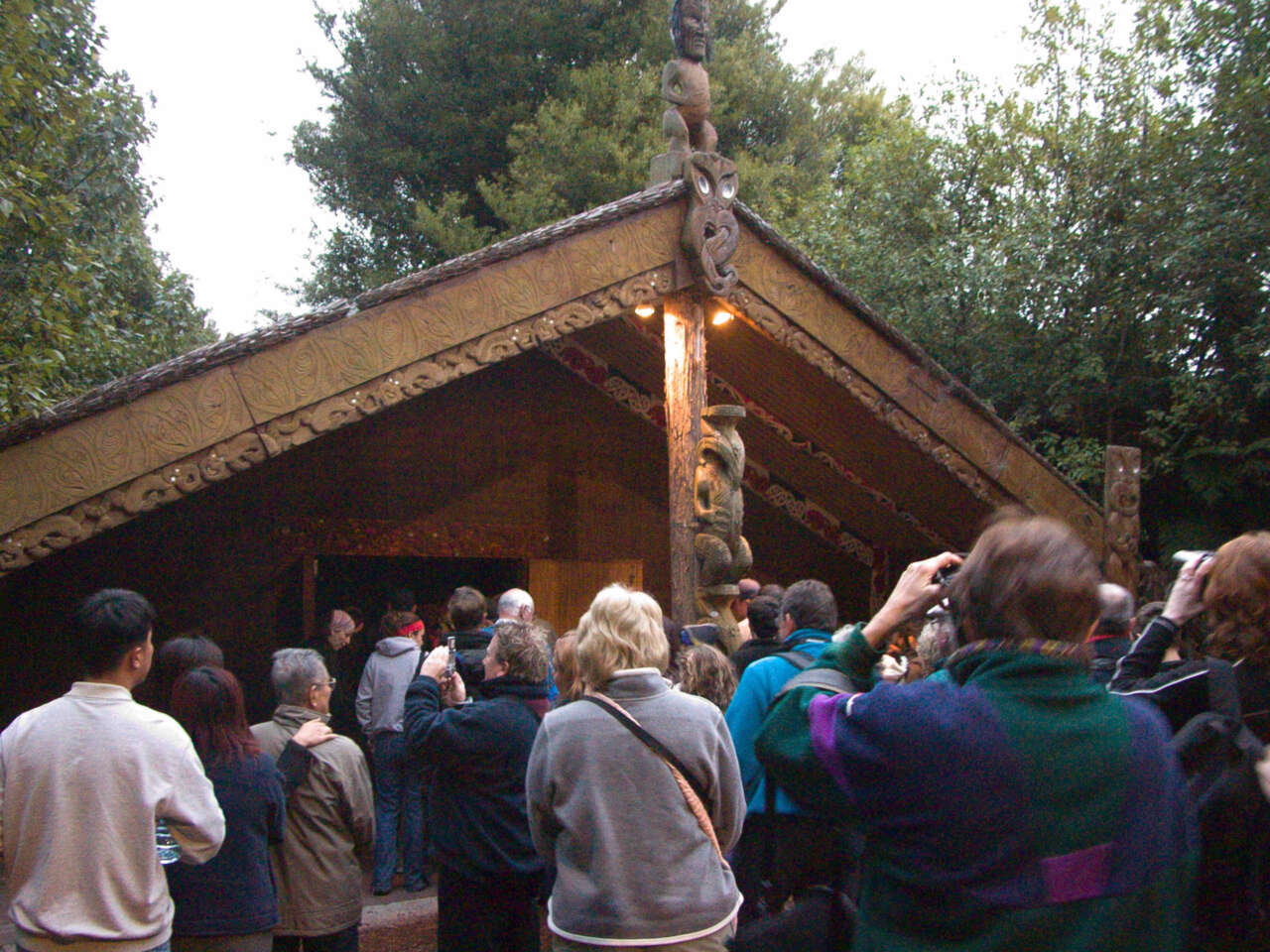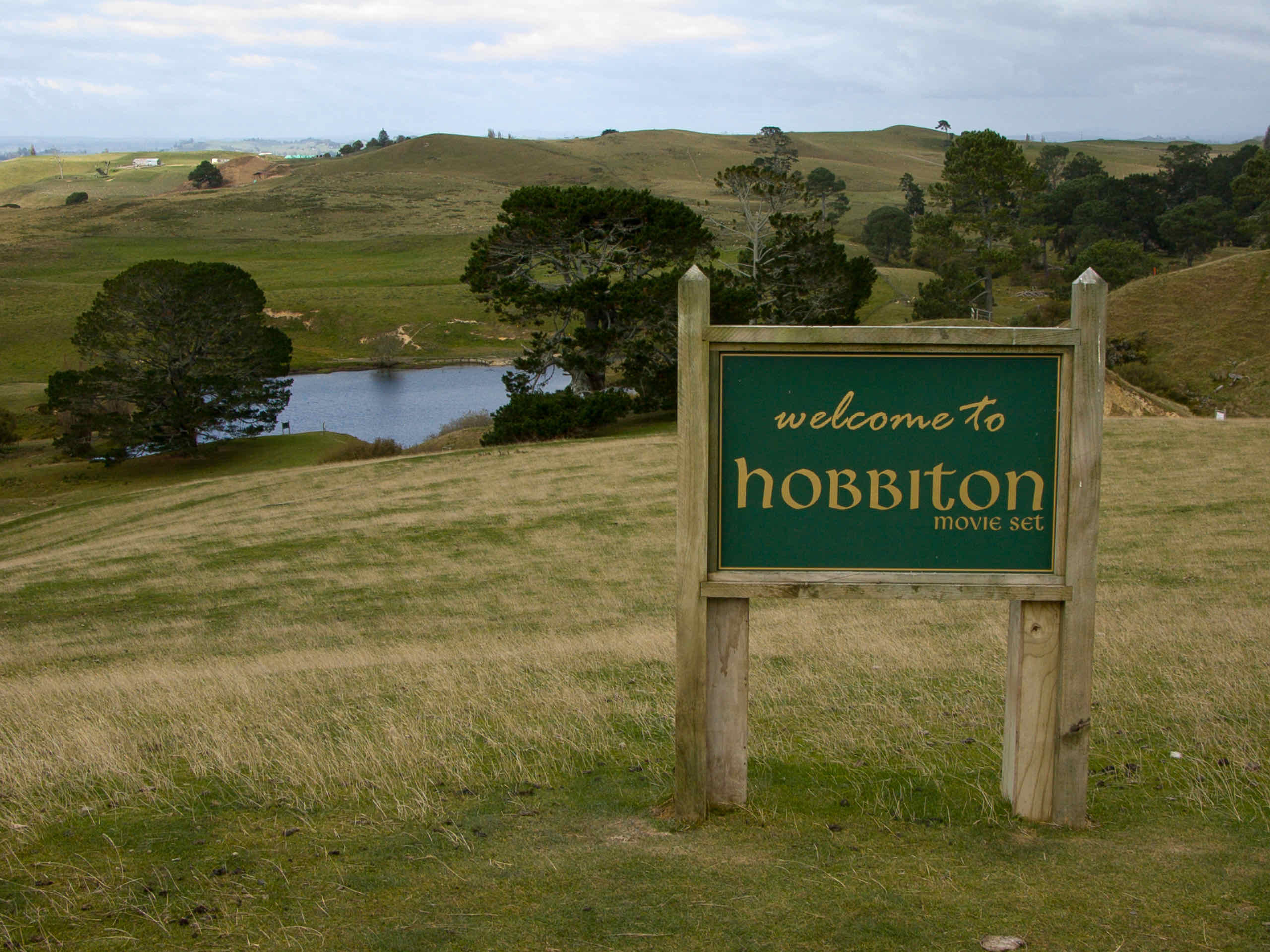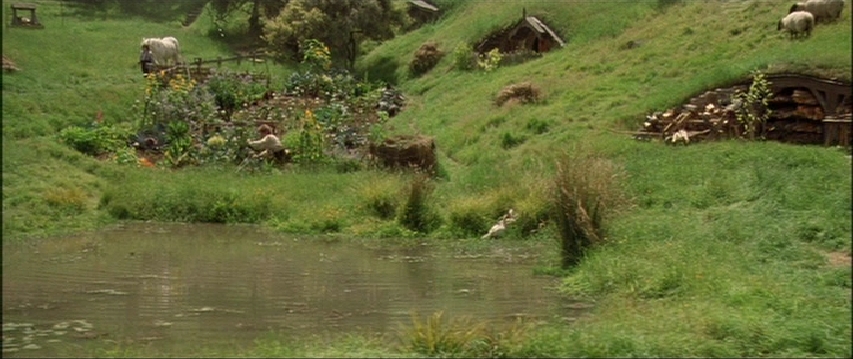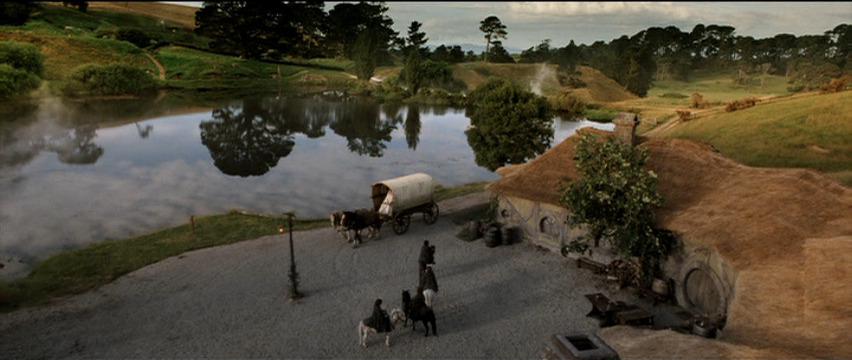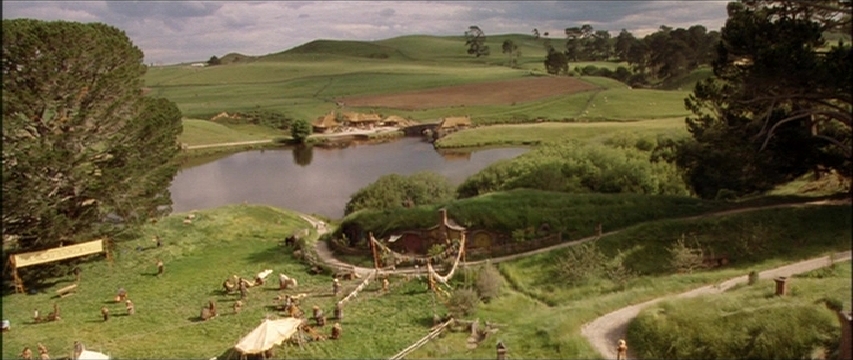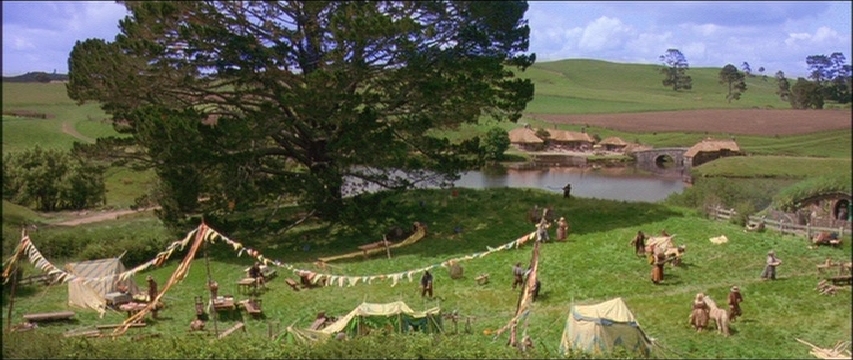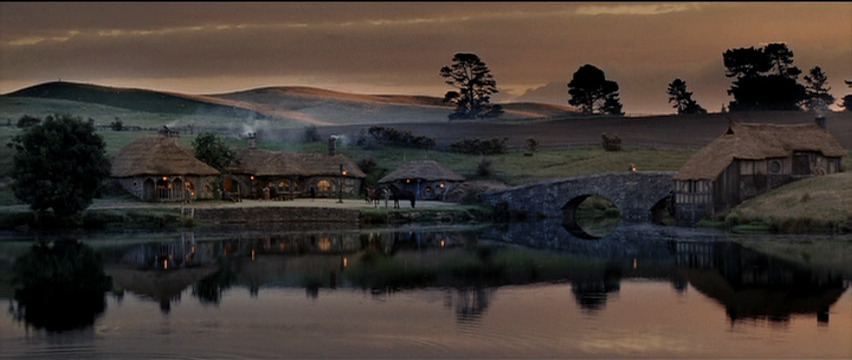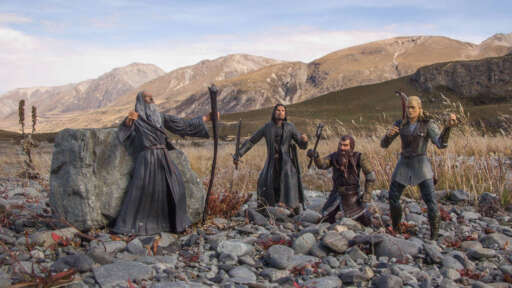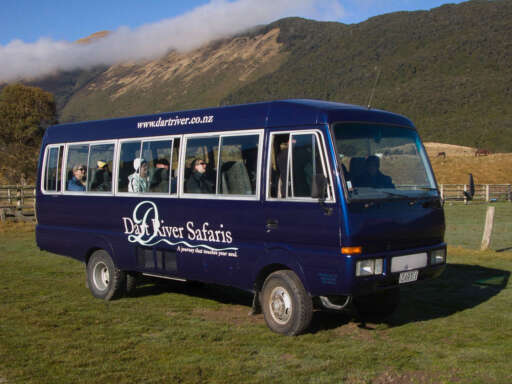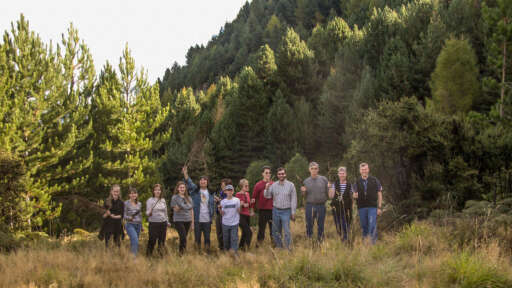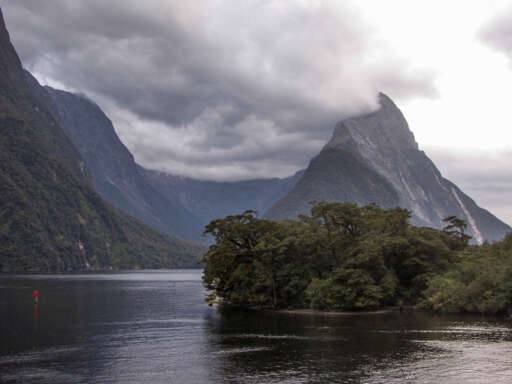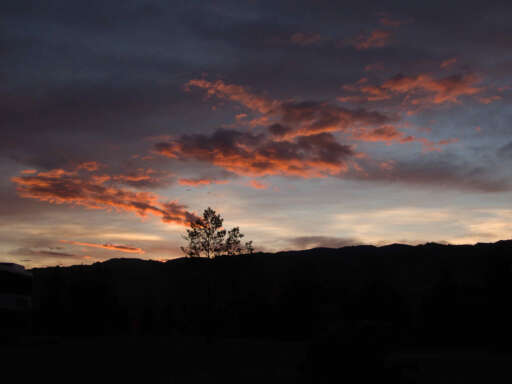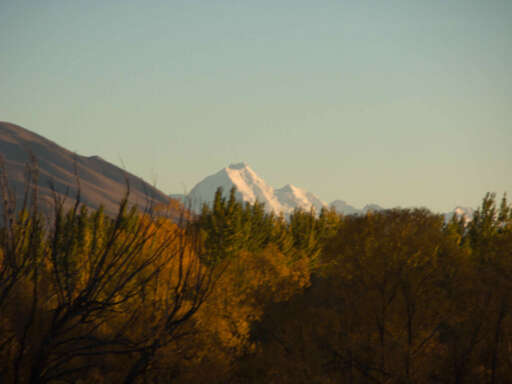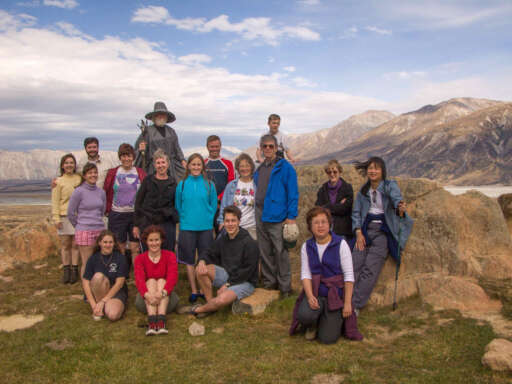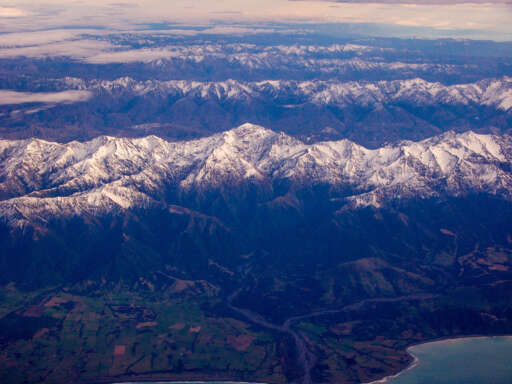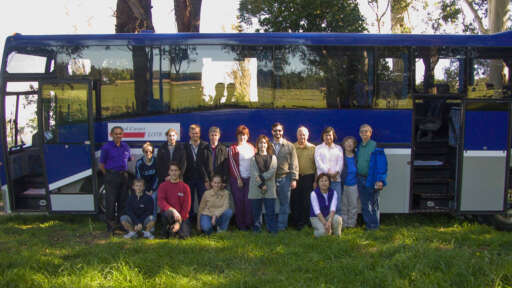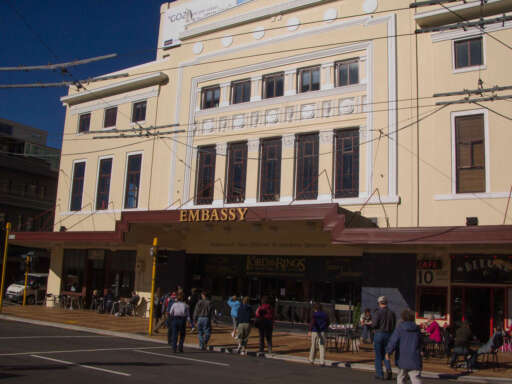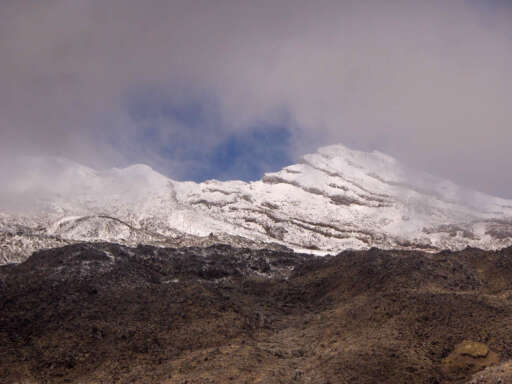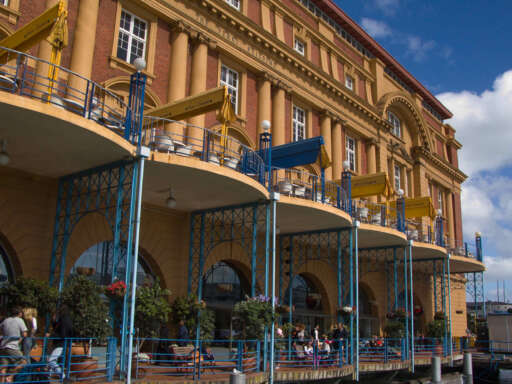This is it! The first day of the tour. We left early and headed down South across Auckland city into the Waikato region. We stopped by at the Hobbiton Movie Set, and then stopped overnight at the tourist town of Rotorua where we experienced a traditional Maori welcome, concert and Hangi dinner at the Tamaki Maori Village.
Matamata (Hobbiton)
We boarded the bus that will take us around the North Island:
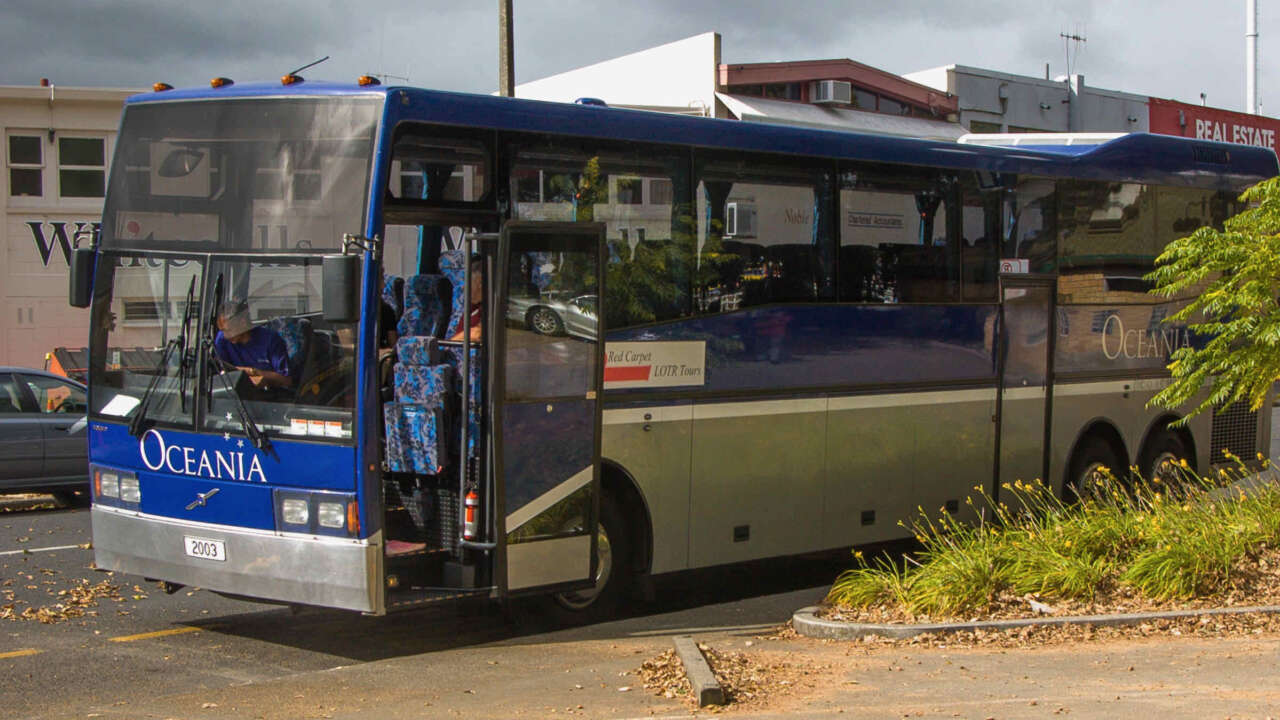
We boarded the bus that will take us around the North Island
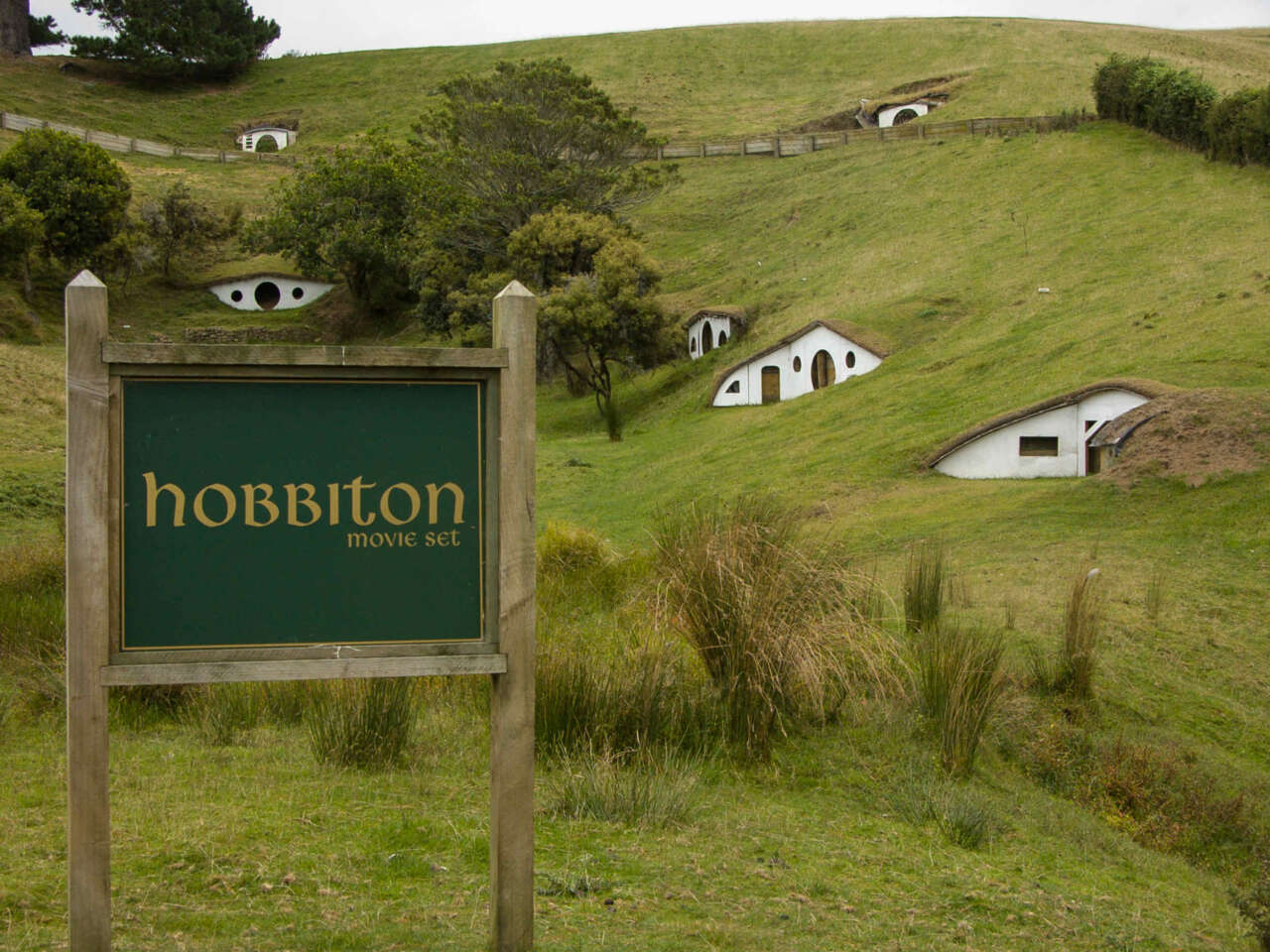
The Hobbiton Movie Set is located on a sheep farm close to the town of Matamata.
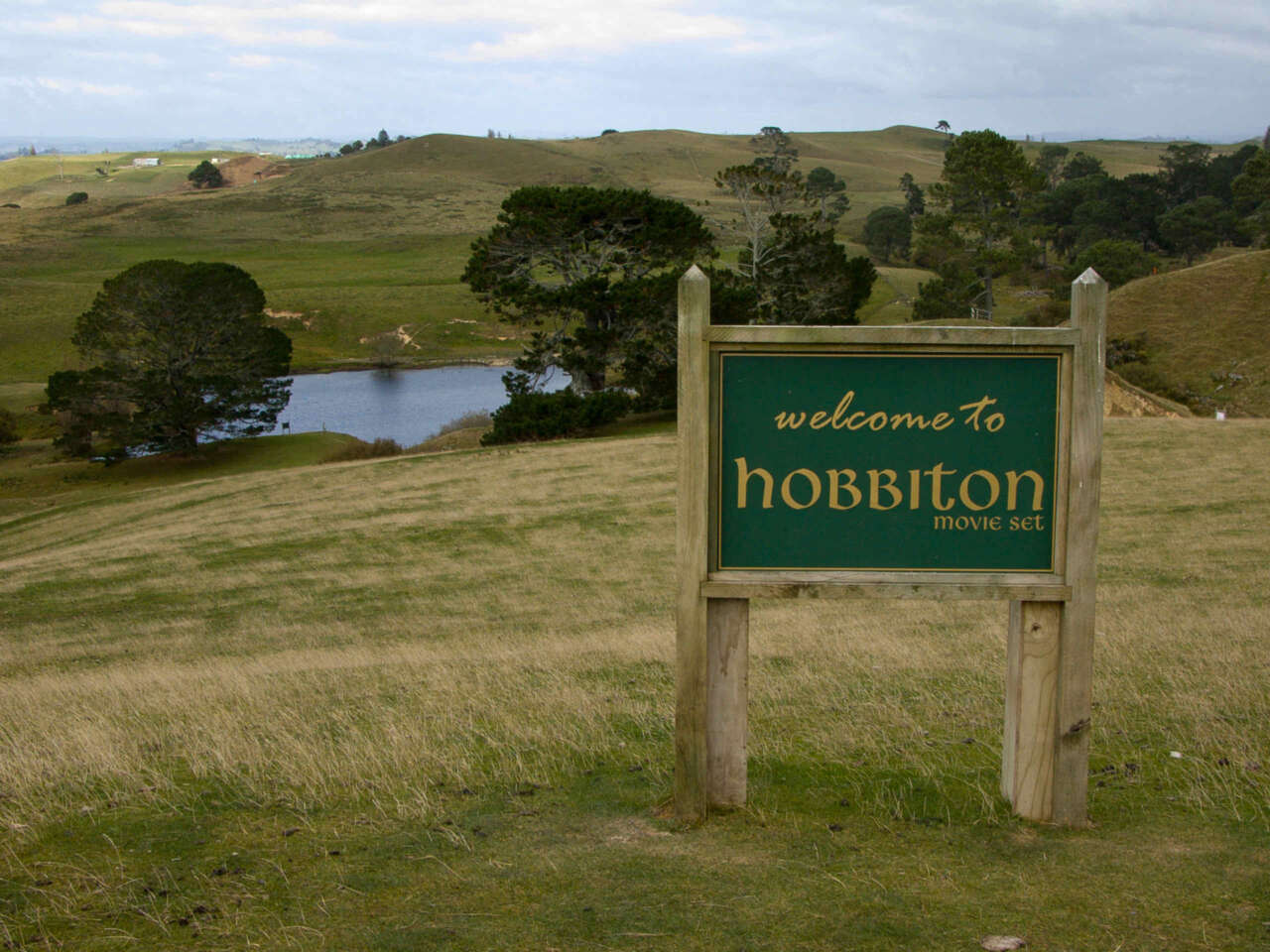
The “sign” proclaiming the site of the movie set for Hobbiton, with the Party Tree in the background (it’s the one on the left). The hobbit holes are on the side of the hill facing the lake.
Some scenes from the films:
The location scouts chose this site because of the symmetry and size of the Party Tree.
“One morning the hobbits woke to find the large field, south of Bilbo’s front door, covered with ropes and poles for tents and pavilions. A special entrance was cut into the bank leading to the road, and wide steps and a large white gate were built there.”
(LOTR, Book I, Chapter I, page 38)
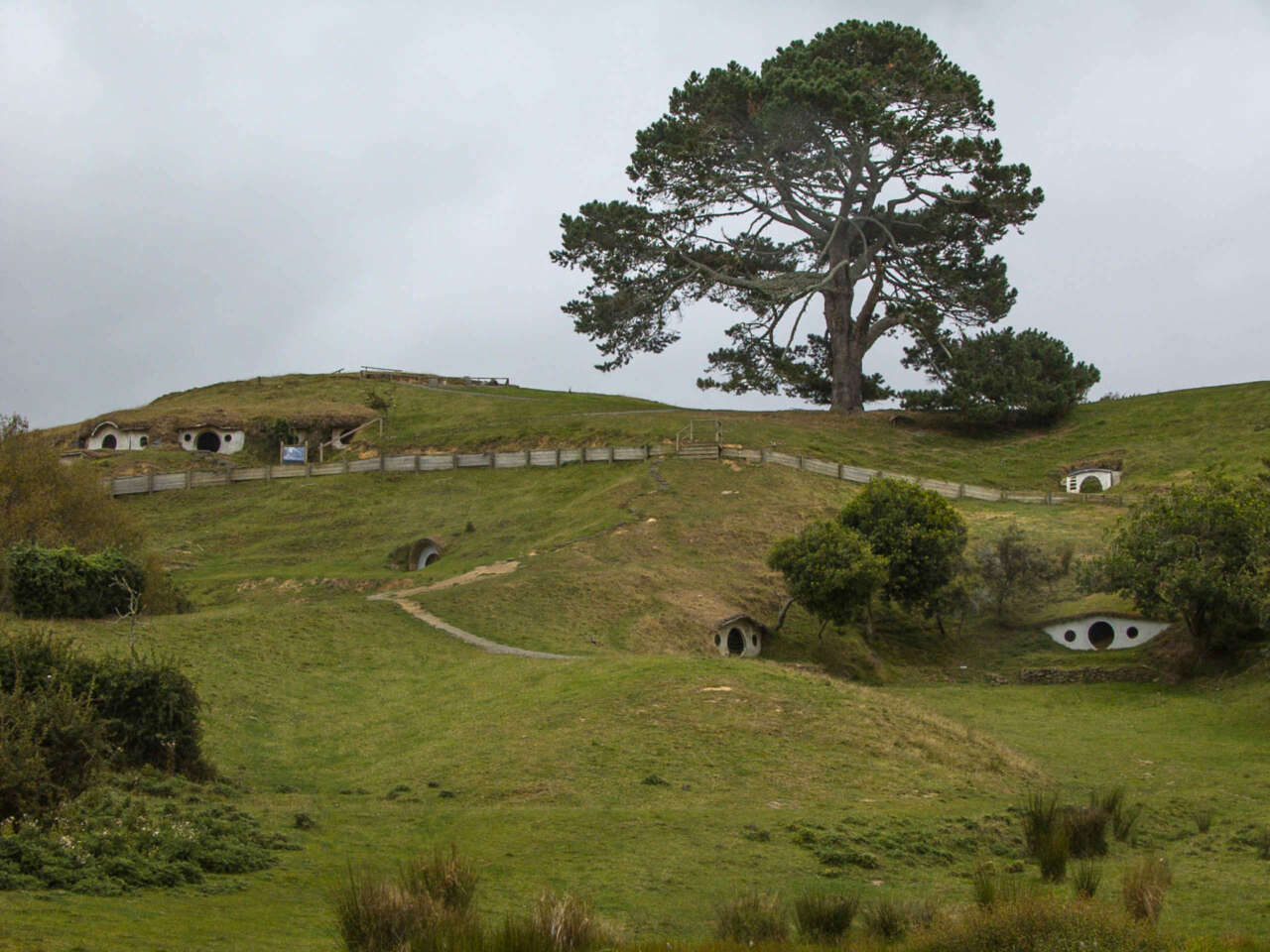
The Party Tree and hobbit holes.
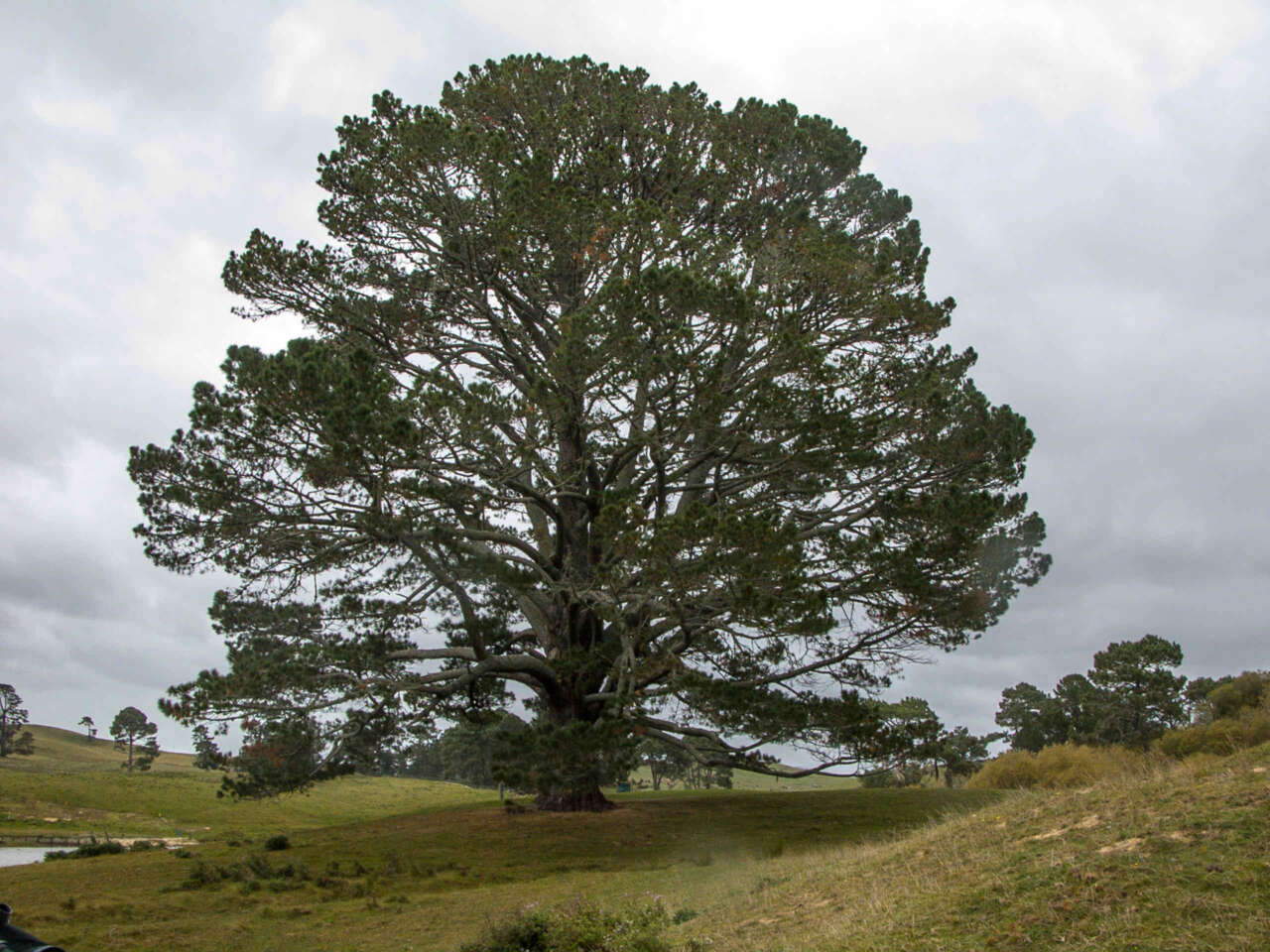
The Party Tree in full glory. It was not altered during filming.
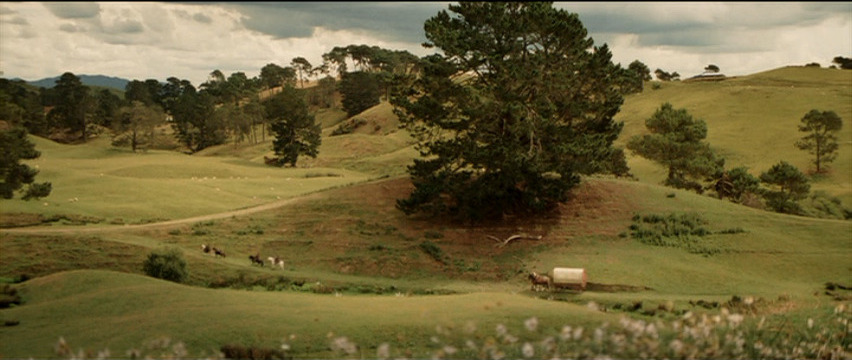
Scene from film.
“There was a specially large pavilion, so big that the tree that grew in the field was right inside it, and stood proudly near one end, at the head of the chief table. Lanterns were hung on all its branches.”
(LOTR, Book I, Chapter I, page 38)
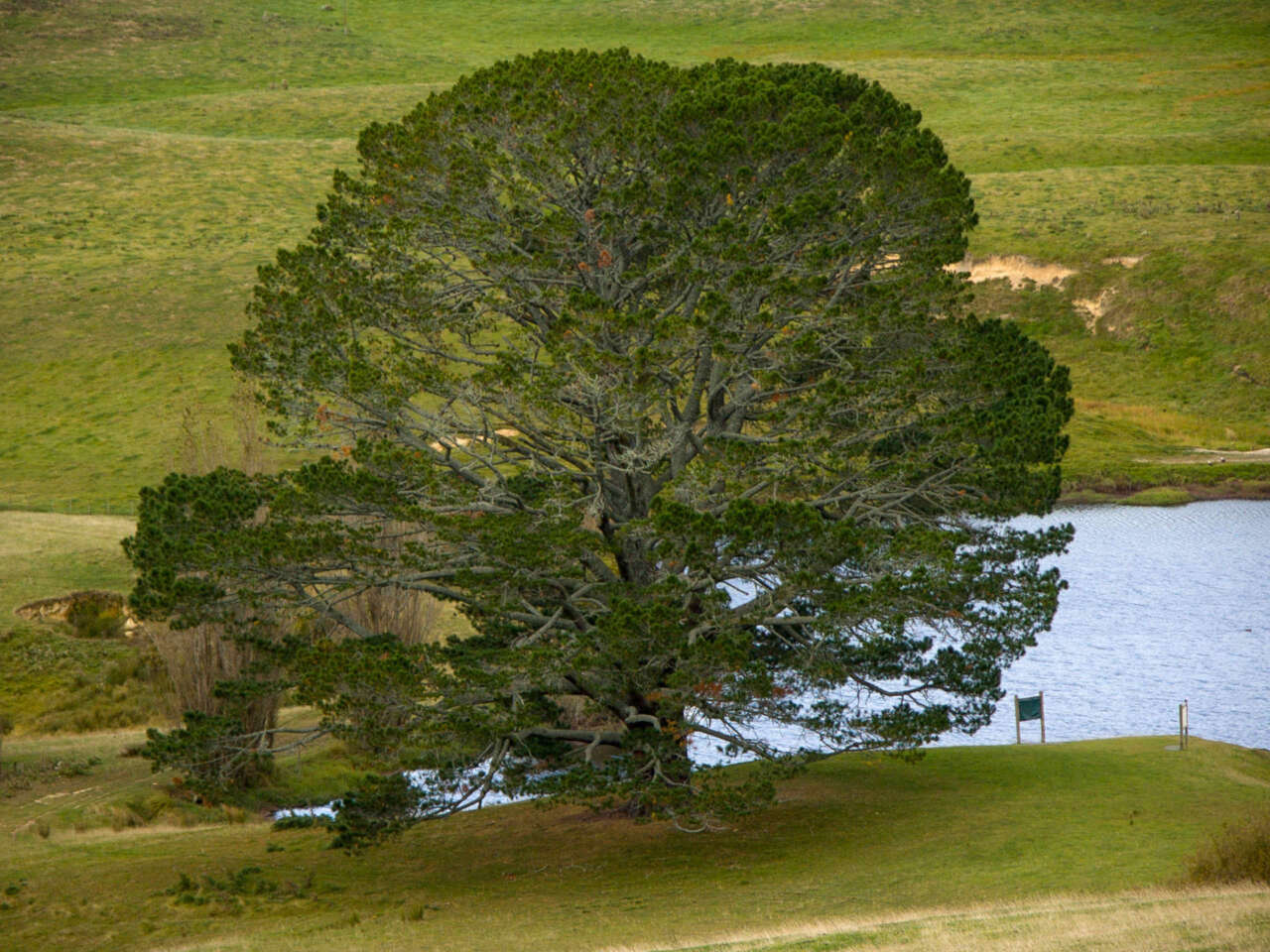
Another view of the Party Tree.
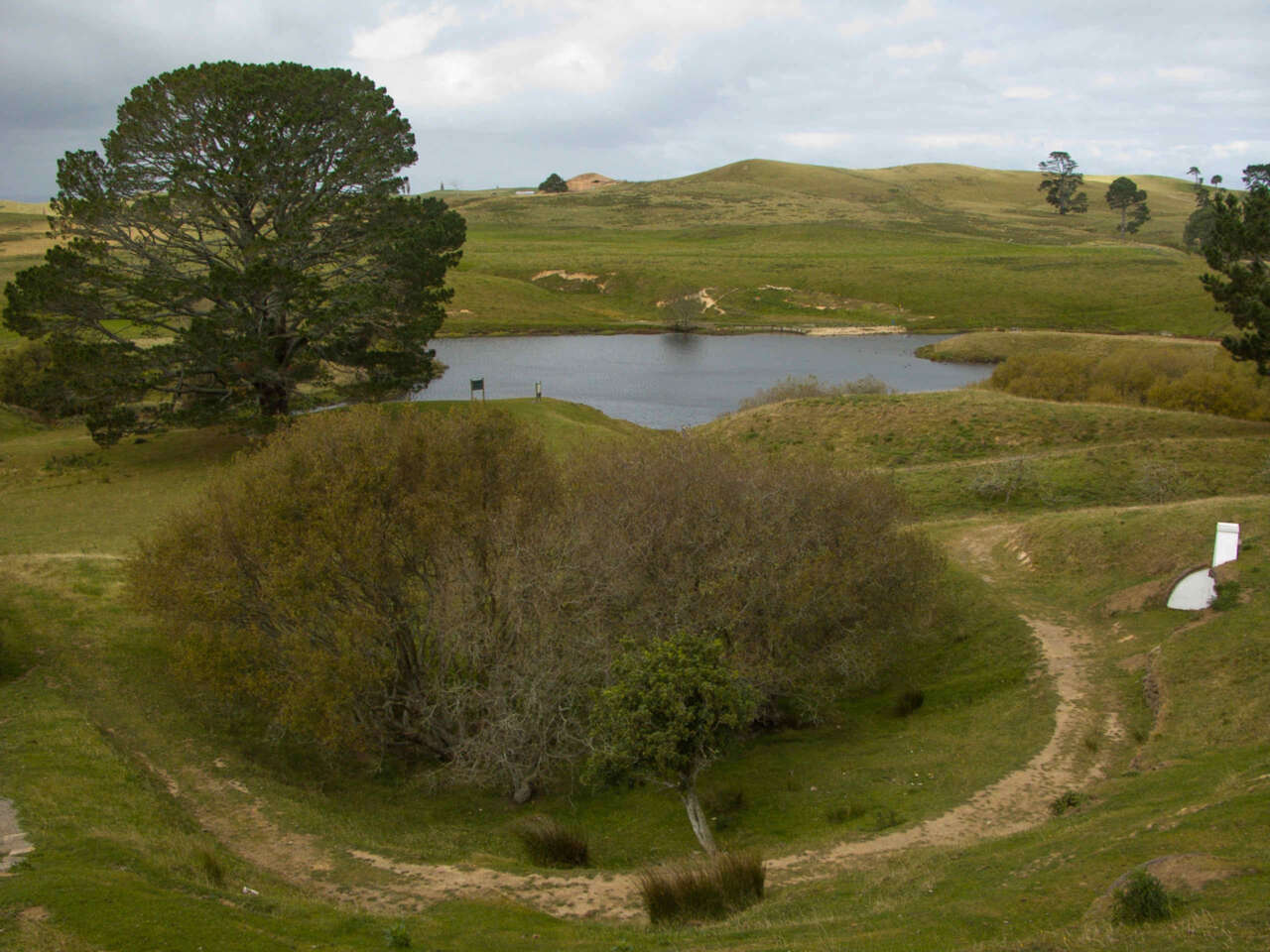
This is roughly where Bilbo’s birthday party was held.
Scenes from film:
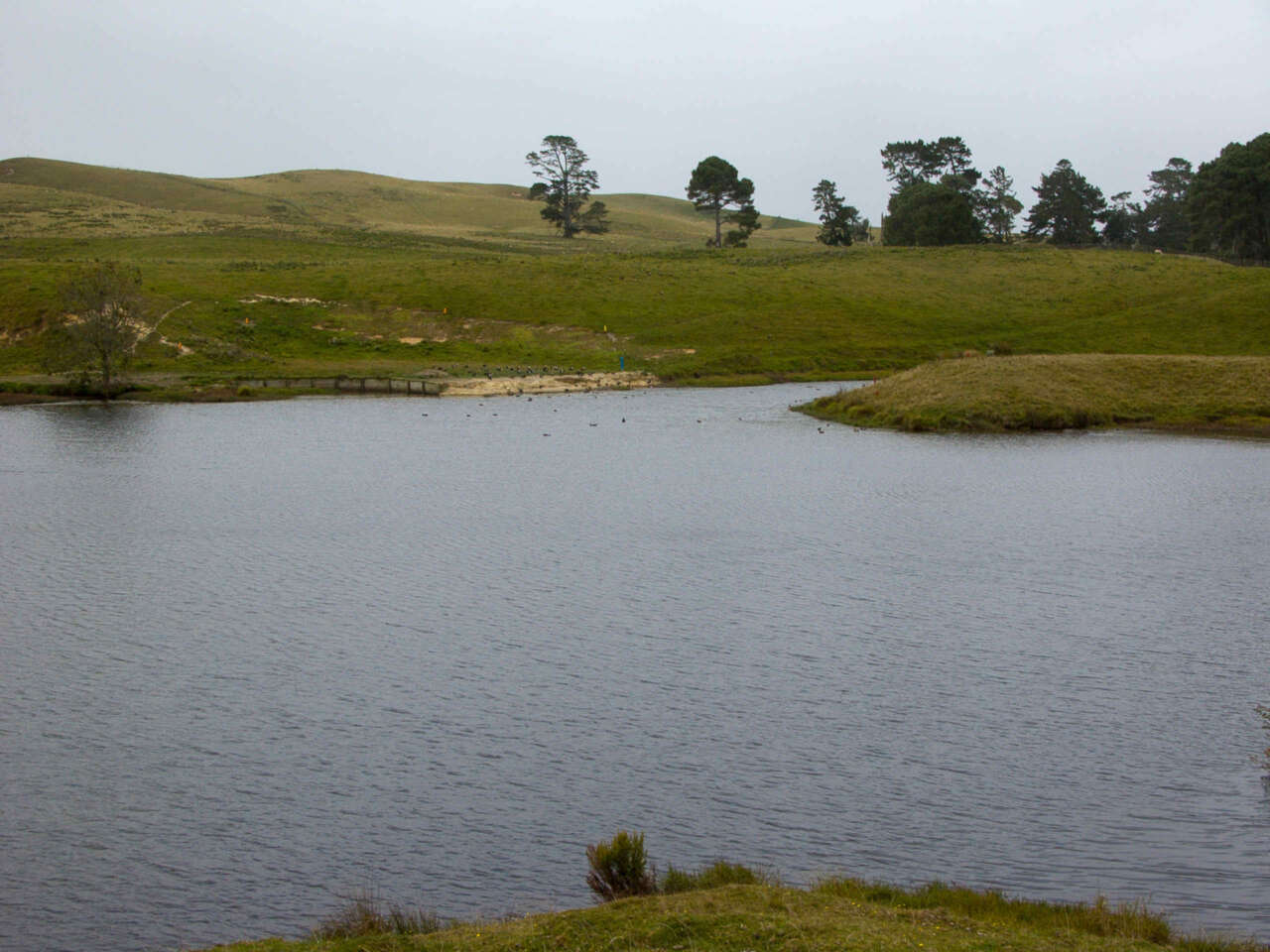
Where the Green Dragon pub, stone bridge and mill was located. Red and yellow markers on the ground denote the approximate locations of the props. The bridge was strong enough to support a vehicle! All structures were dismantled at the completion of filming.
Where the Green Dragon pub, stone bridge and mill was located. Red and yellow markers on the ground denote the approximate locations of the props. The bridge was strong enough to support a vehicle! All structures were dismantled at the completion of filming.
“The Old Grange on the west side had been knocked down, and its place taken by rows of tarred sheds. All the chestnuts were gone. The banks and hedgerows were broken.”
(LOTR, Book VI, Chapter VIII, page 1054)
Equivalent scenes from film:
The current state of Bag End (on top) and Bag Shot Row, including the Gamgee residence (the one with the chimney). The set was constructed nearly 12 months prior to filming to allow the vegetation to grow and for Hobbiton to appear “lived in.” This is contrasted with the film scene.
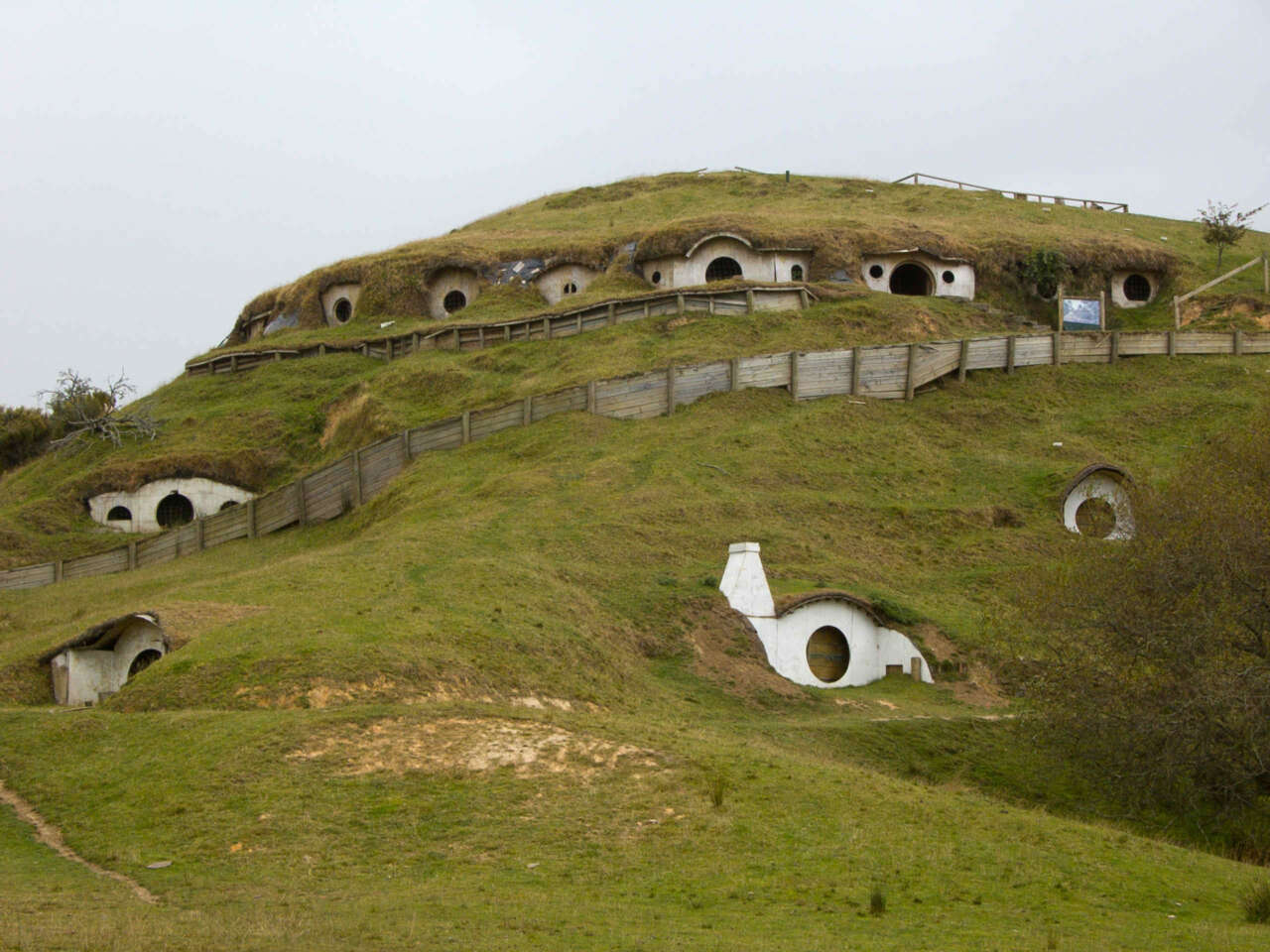
Hobbit homes 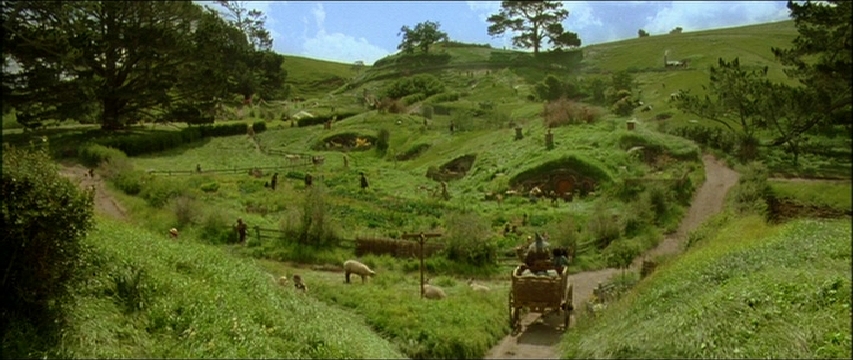
“Many of the houses that they had known were missing. Some seemed to have been burned down. The pleasant row of old hobbit-holes in the bank that used to run down bright to the water’s edge were rank with weeds..”
(LOTR, Book VI, Chapter VIII, page 1041)
Close up of Sam Gamgee’s residence (real, vs film).
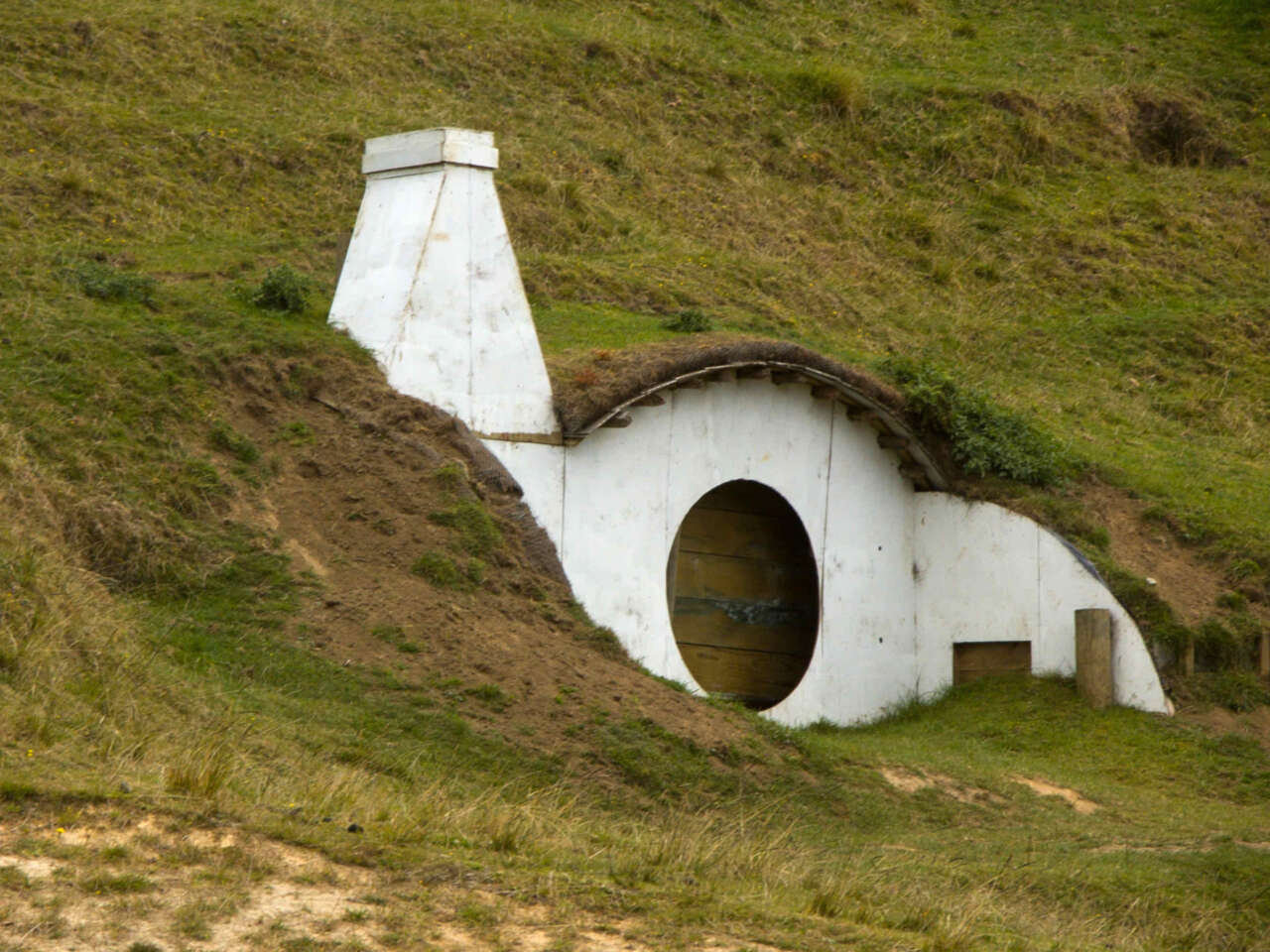
Hobbit homes 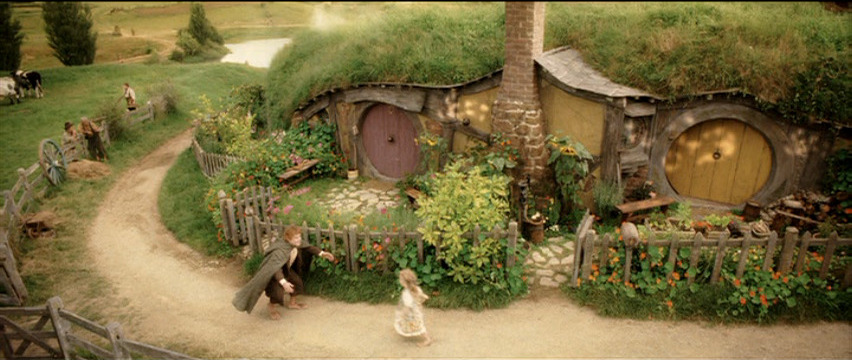
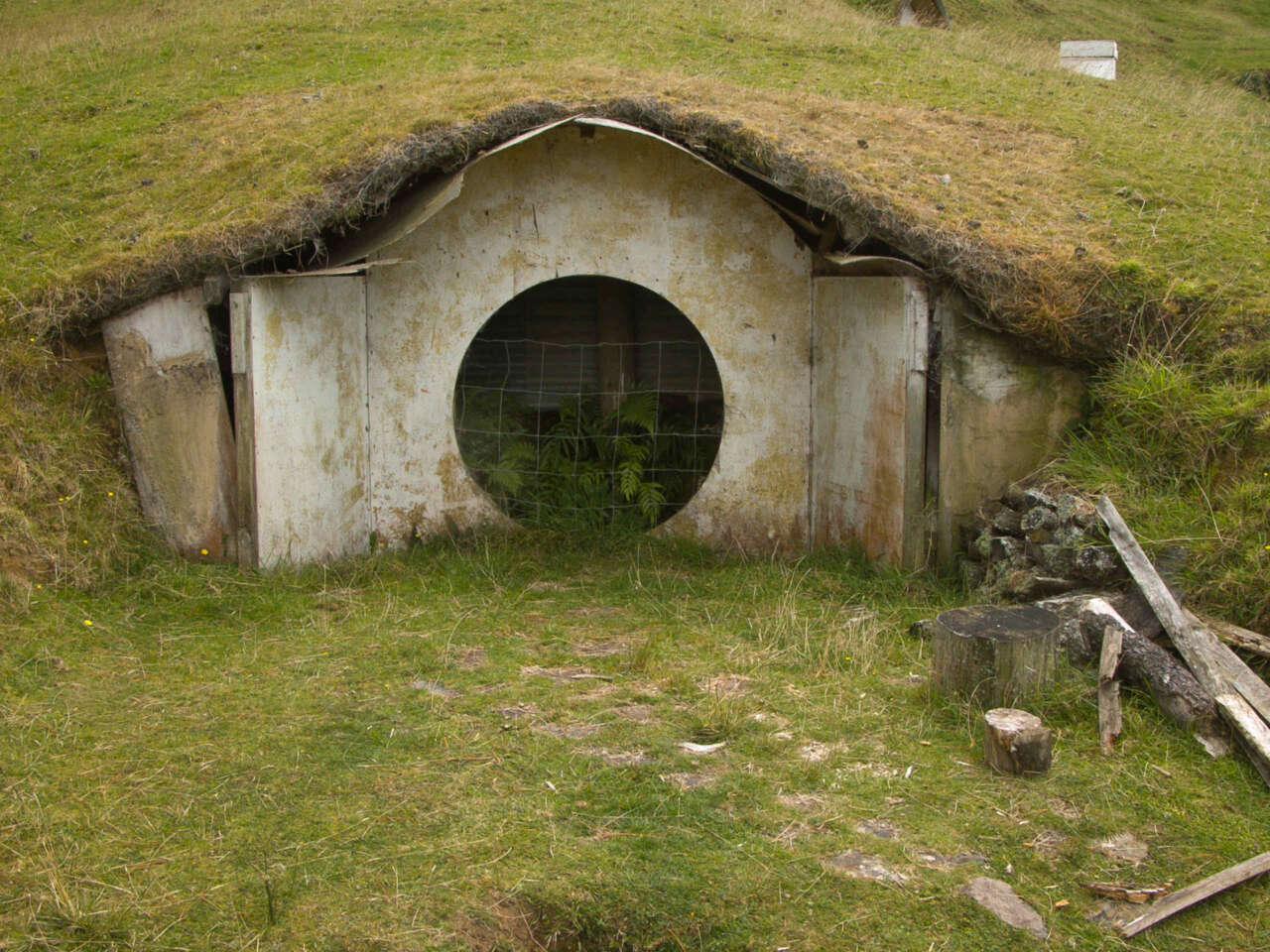
37 hobbit holes were constructed, but only some of these survive today. The bulldozers were about to demolish the remaining, but fortunately bad weather (and good sense) stopped them.
This is how Bag End looks like today. You can walk in and stand just behind the round door, but that’s about it.
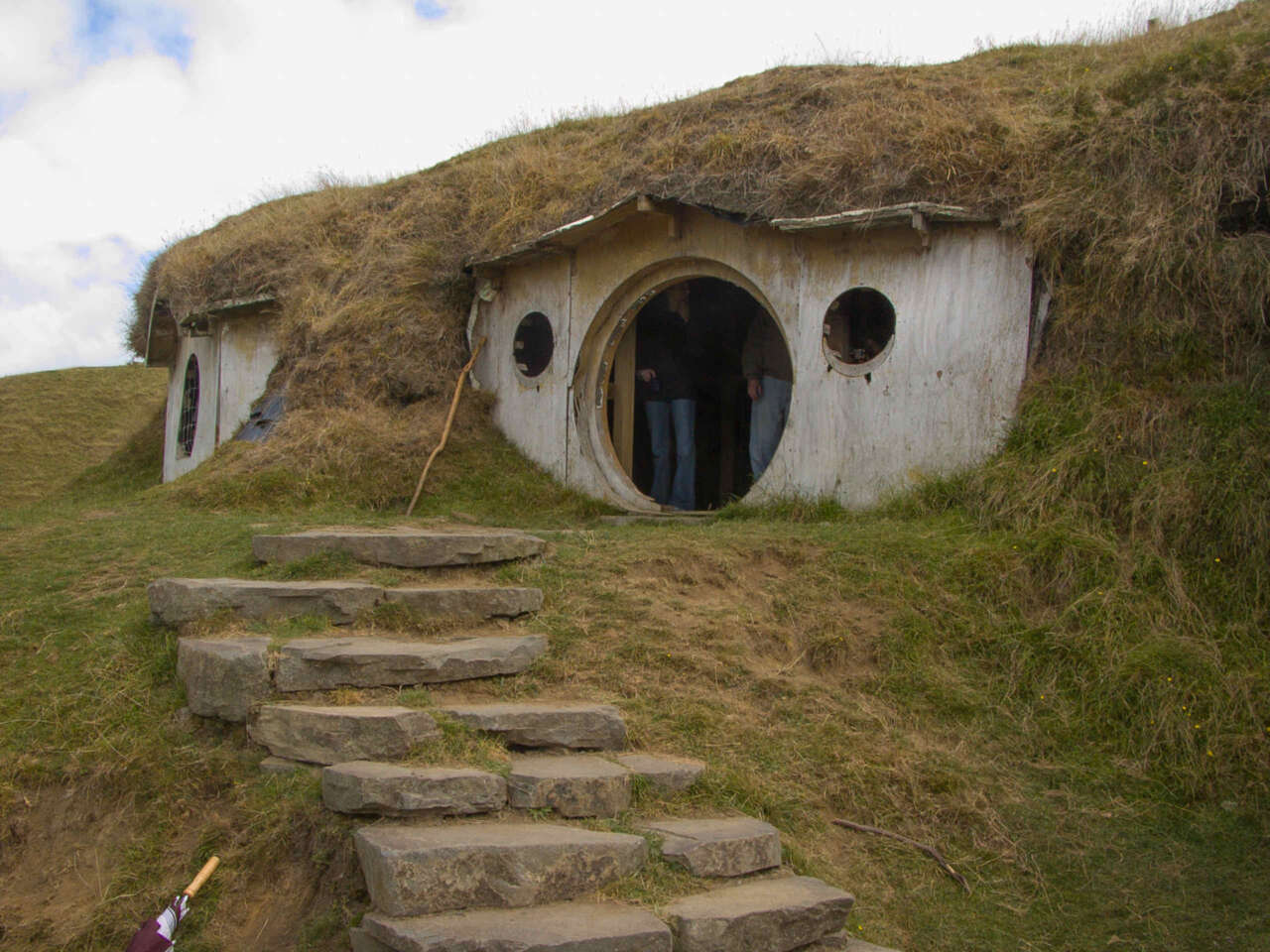
Hobbit homes 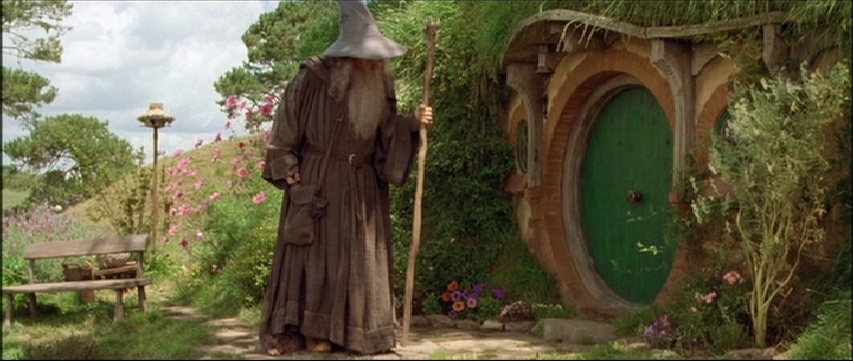
“The door was scarred; the bell-chain was dangling loose, and the bell would not ring. Knocking brought no answer. At length they pushed and the door yielded. They went in. The place stank and was full of filth and disorder: it did not appear to have been used for some time.”
(LOTR, Book VI, Chapter VIII, page 1055)
This is the view from inside Bag End’s round doorway, looking towards the Party Tree.
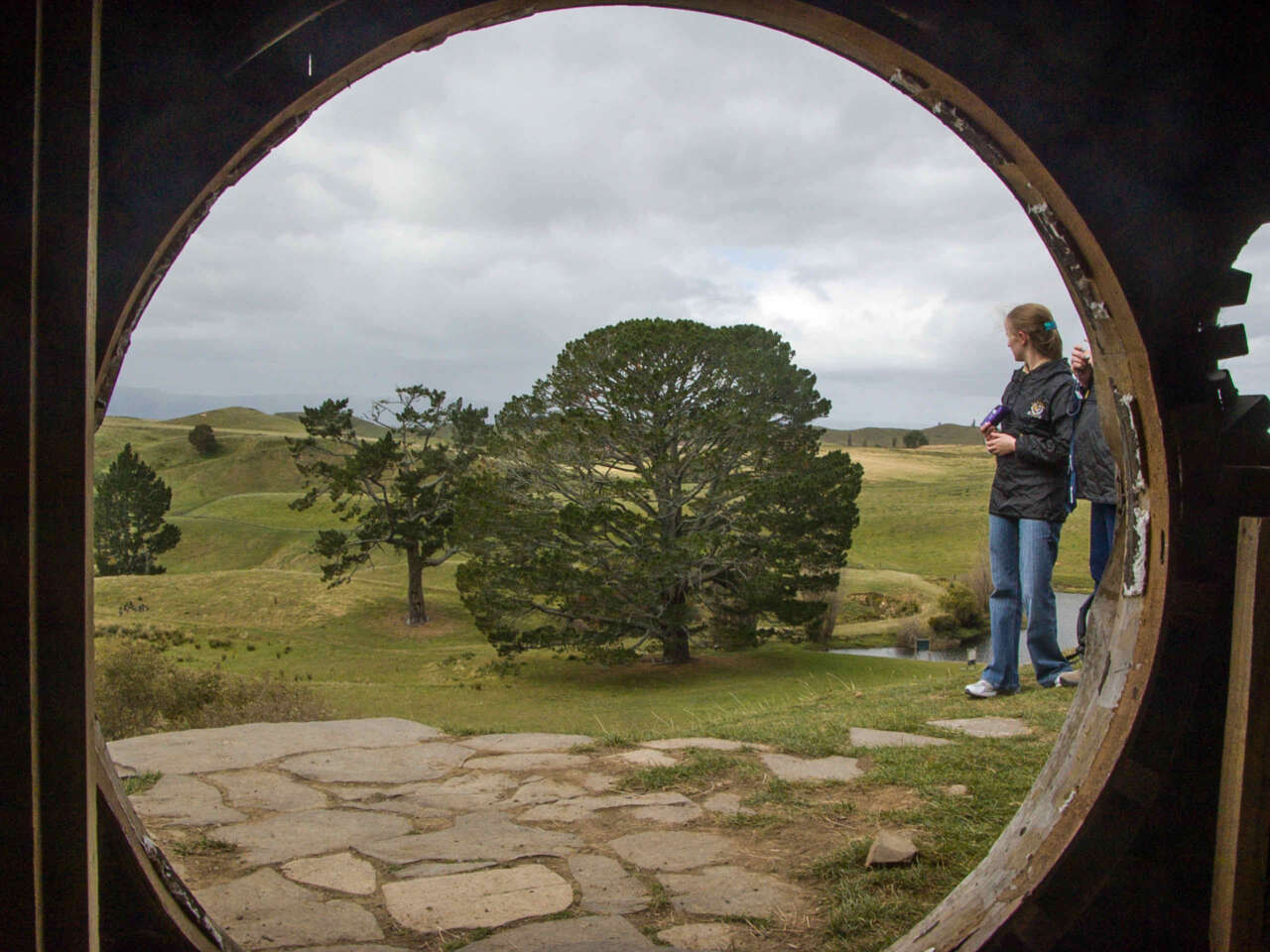
Hobbiton 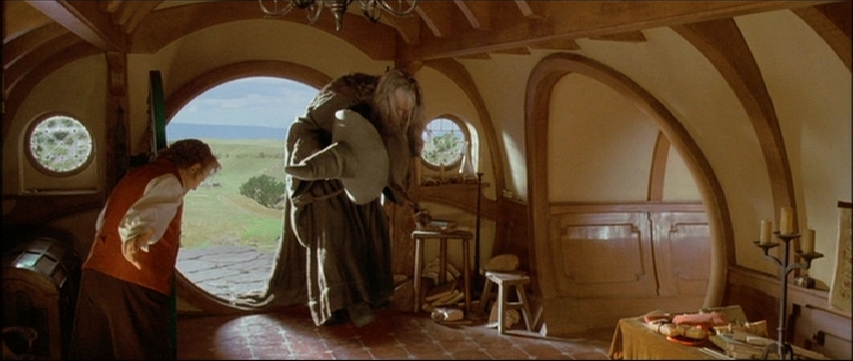
“Inside Bag End, Bilbo and Gandalf were sitting at the open window of a small room looking out west on to the garden. The late afternoon was bright and peaceful. The flowers glowed red and golden: snap-dragons and sunflowers, and nasturtians trailing all over the turf walls and peeping in at the round windows.”
(LOTR, Book I, Chapter I, page 37)
They chopped up this oak tree, reassembled it on top of Bag End. Each branch was numbered and chopped, and bolted together with fake leaves (from Taiwan) added.
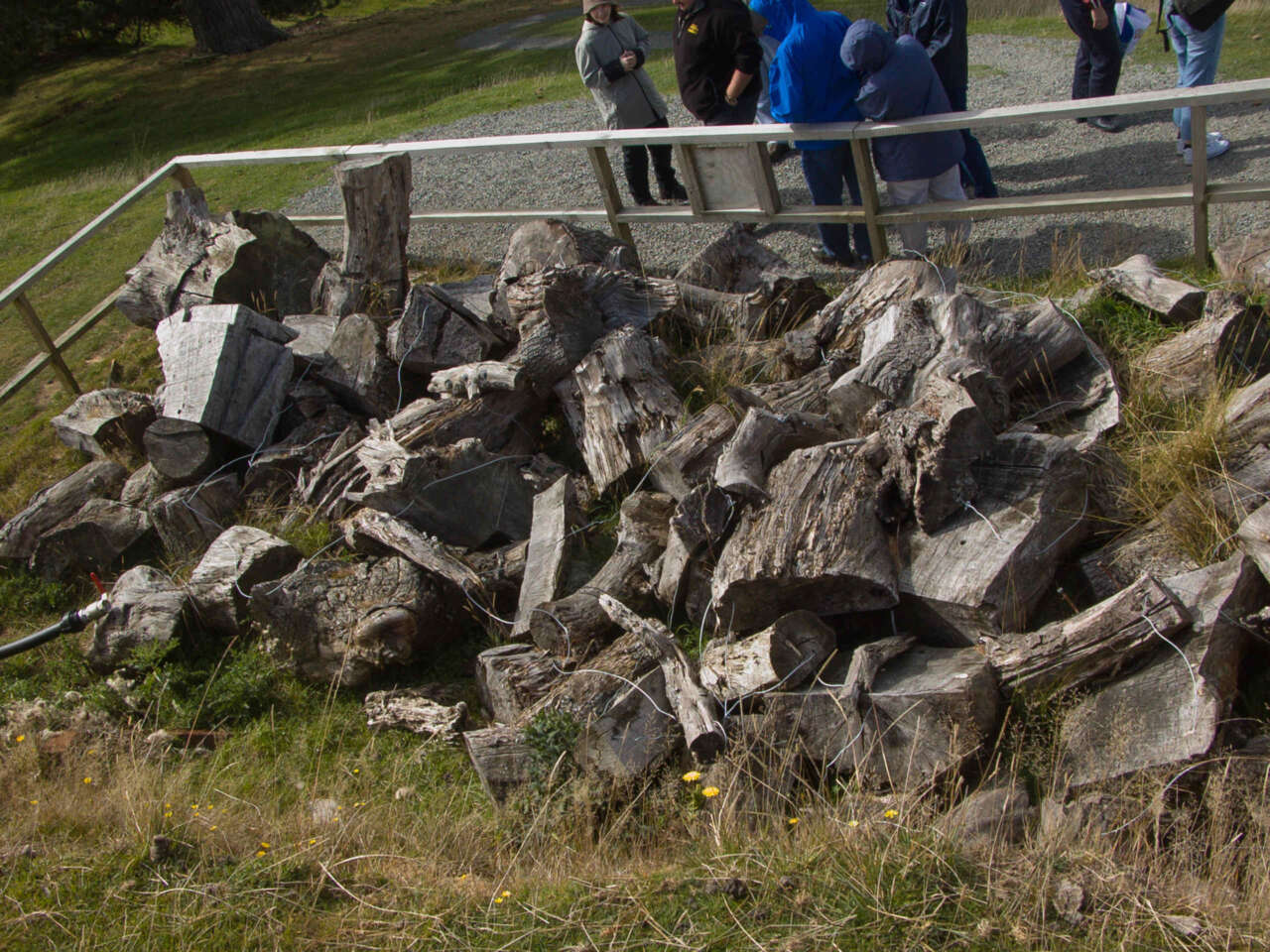
Remains of tree 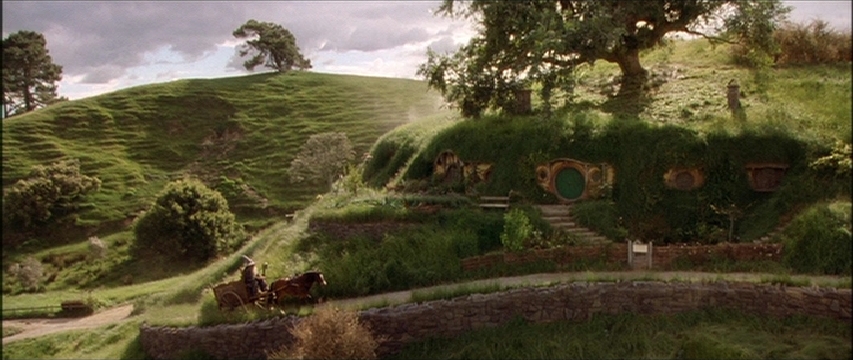
Full set of photos:
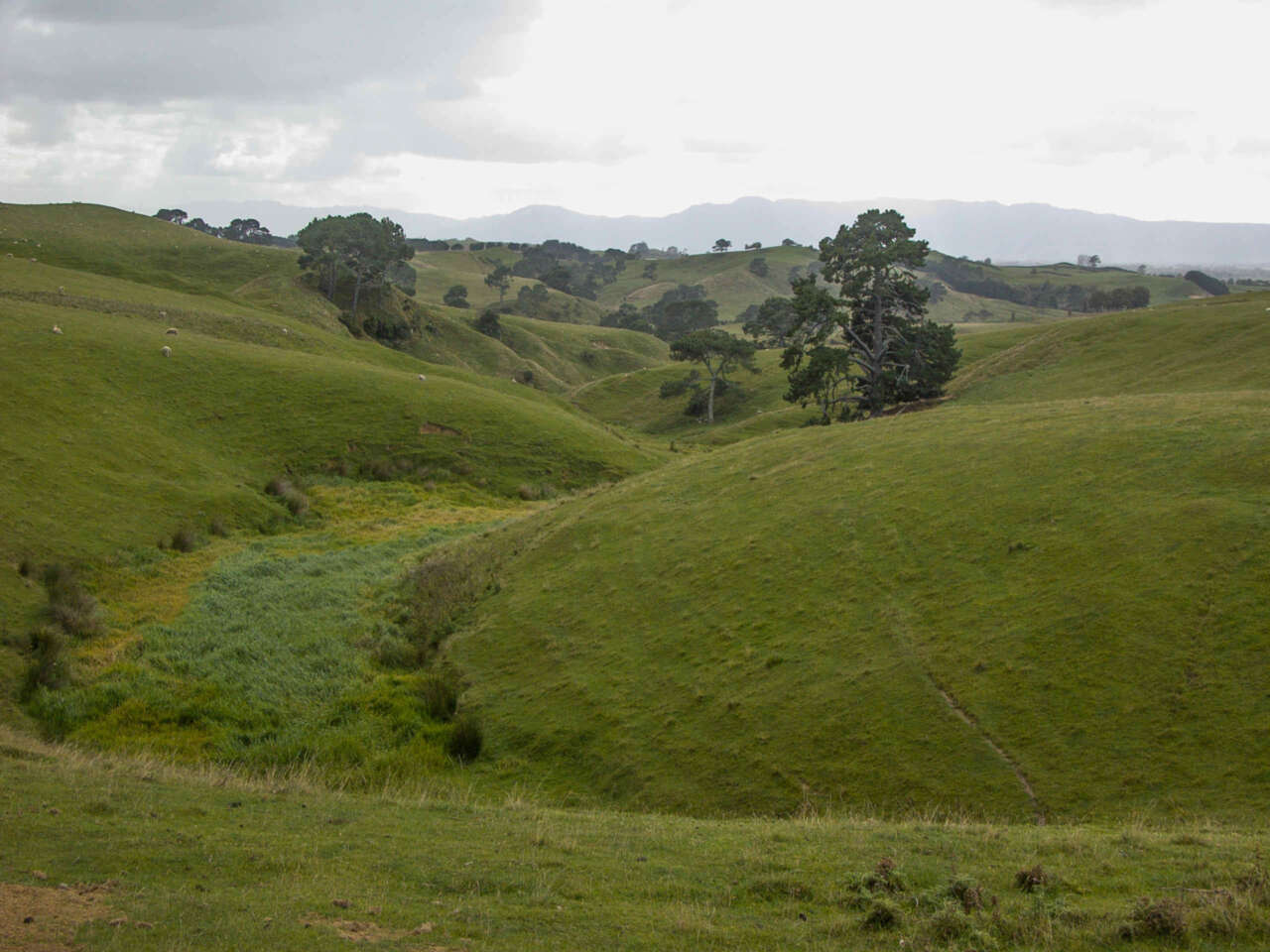
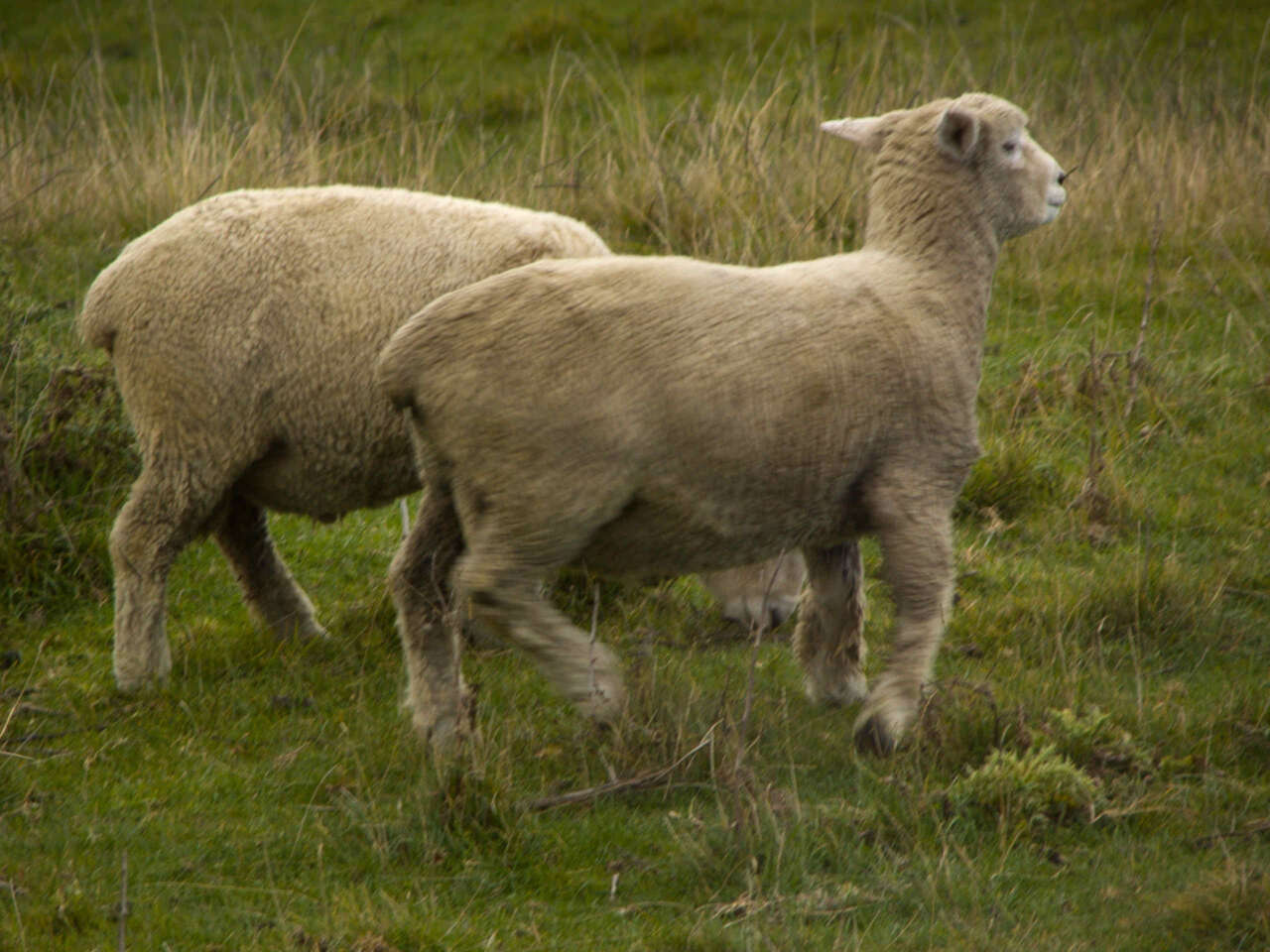
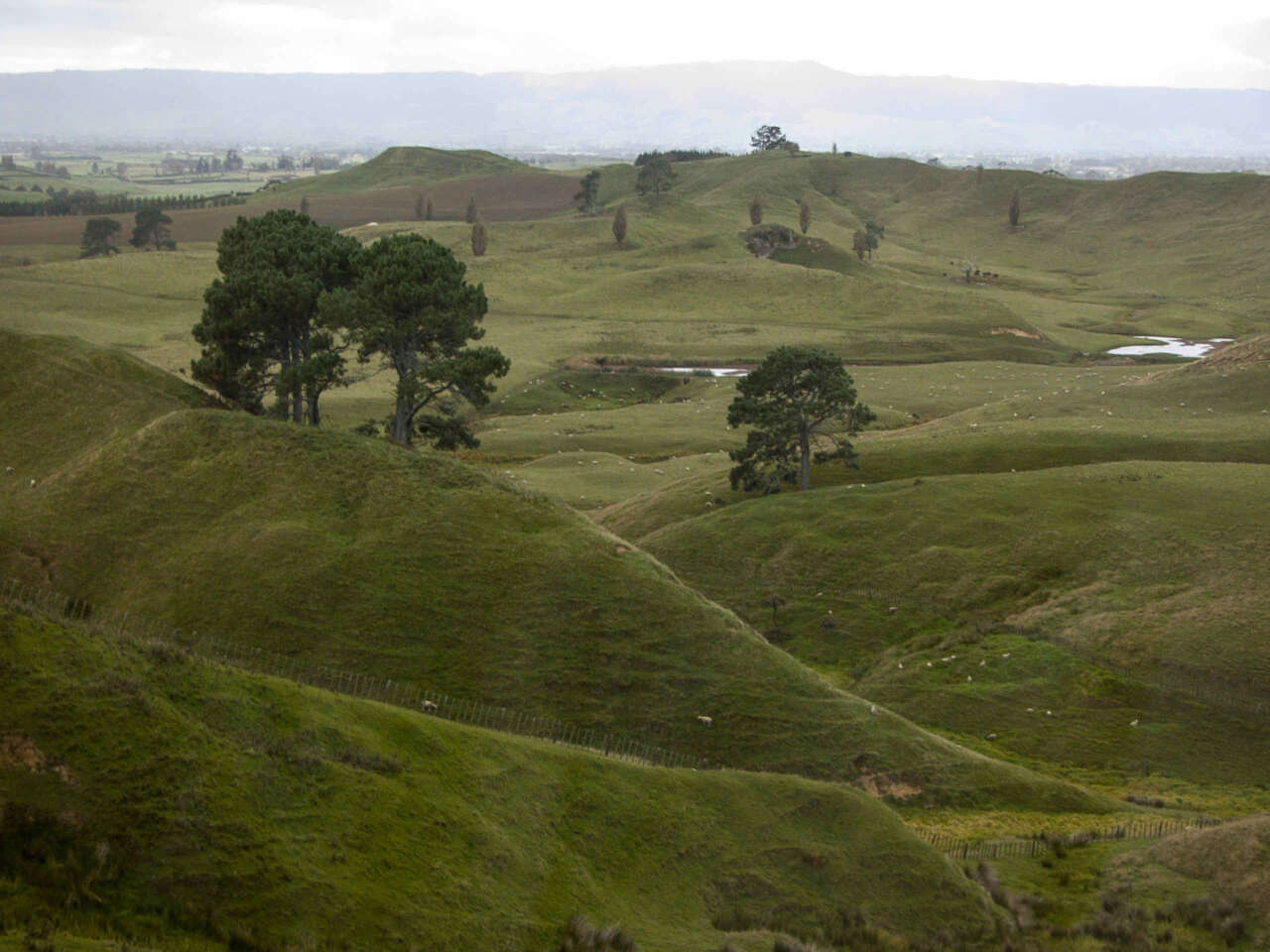


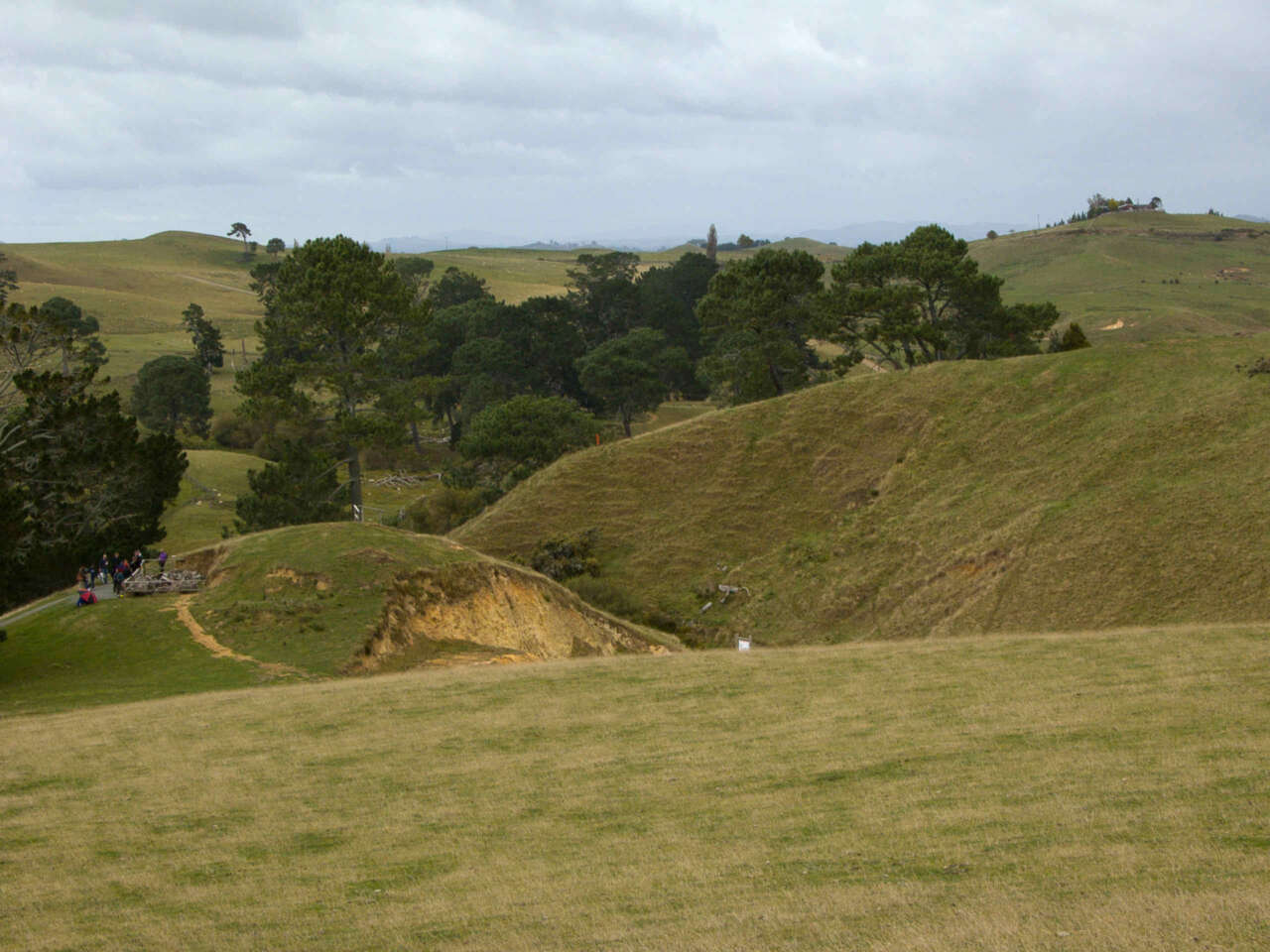
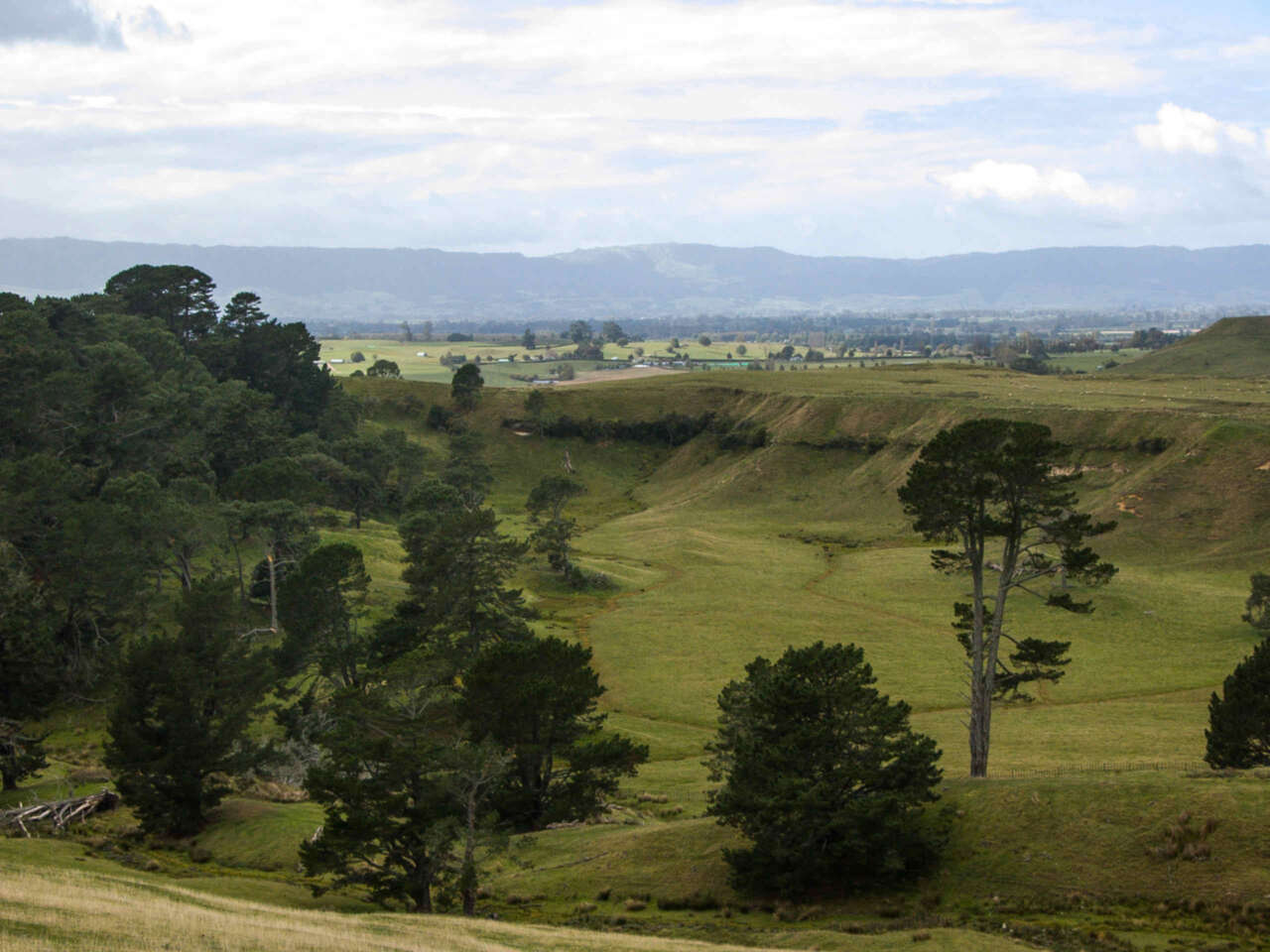
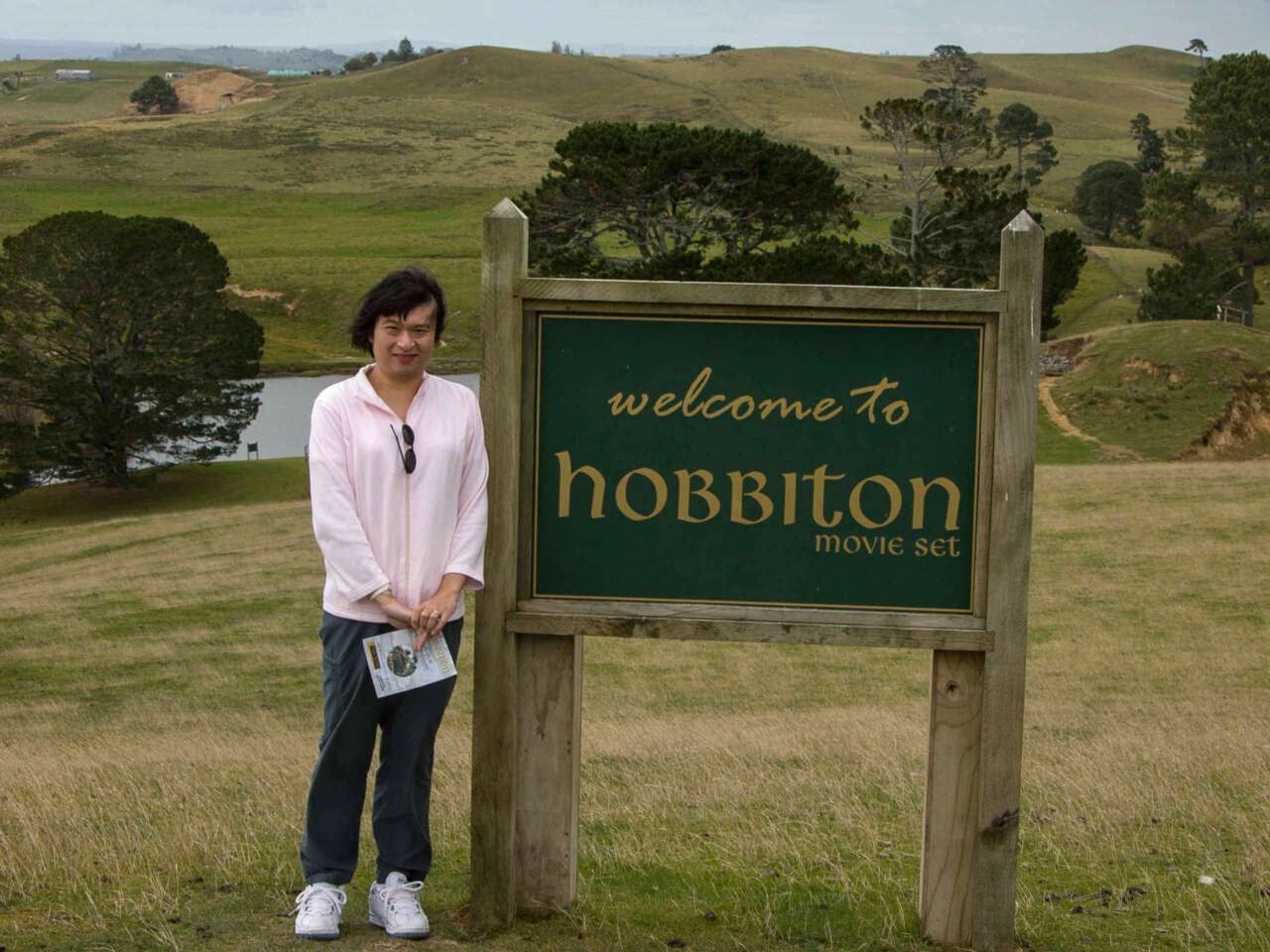
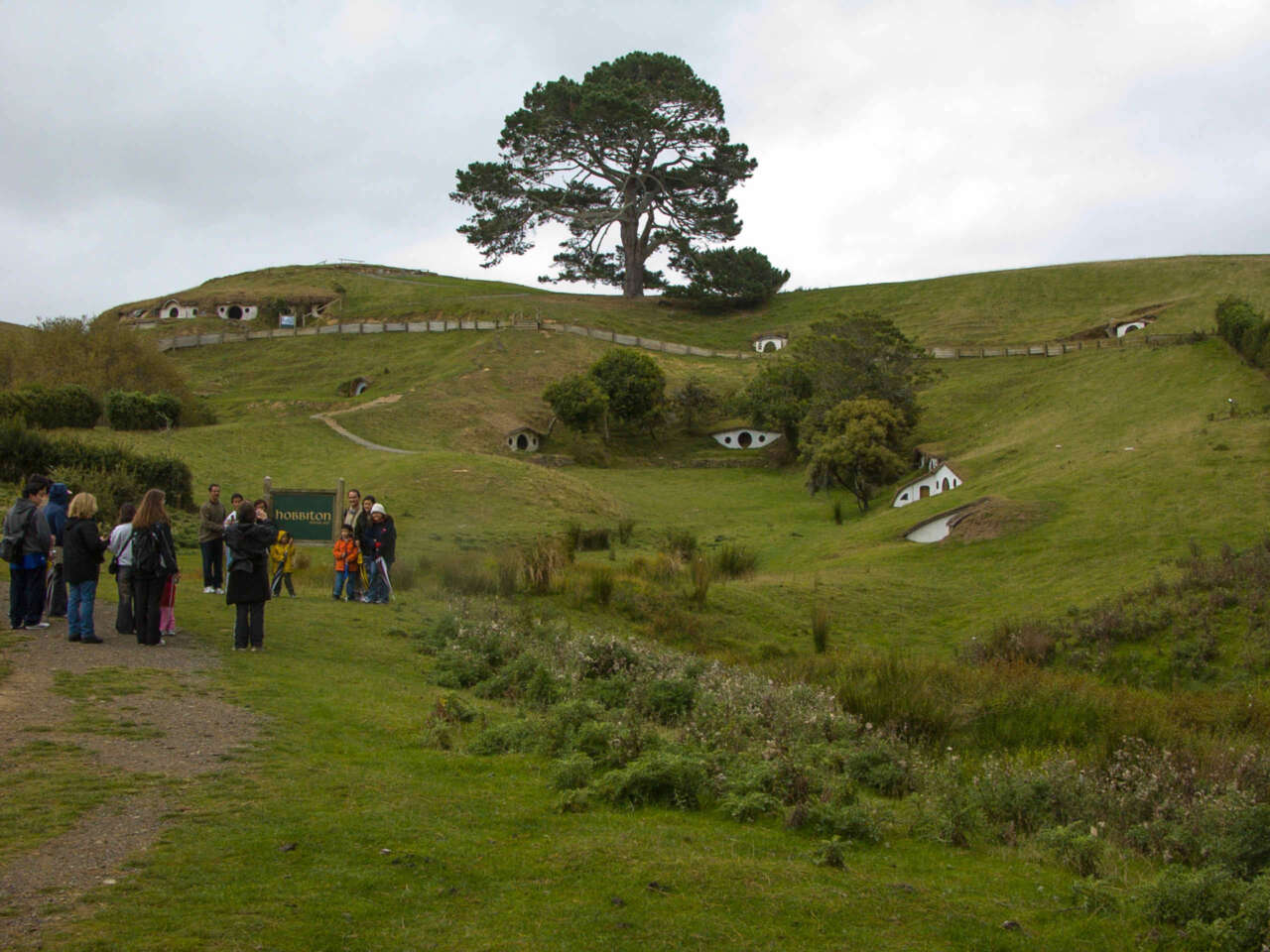
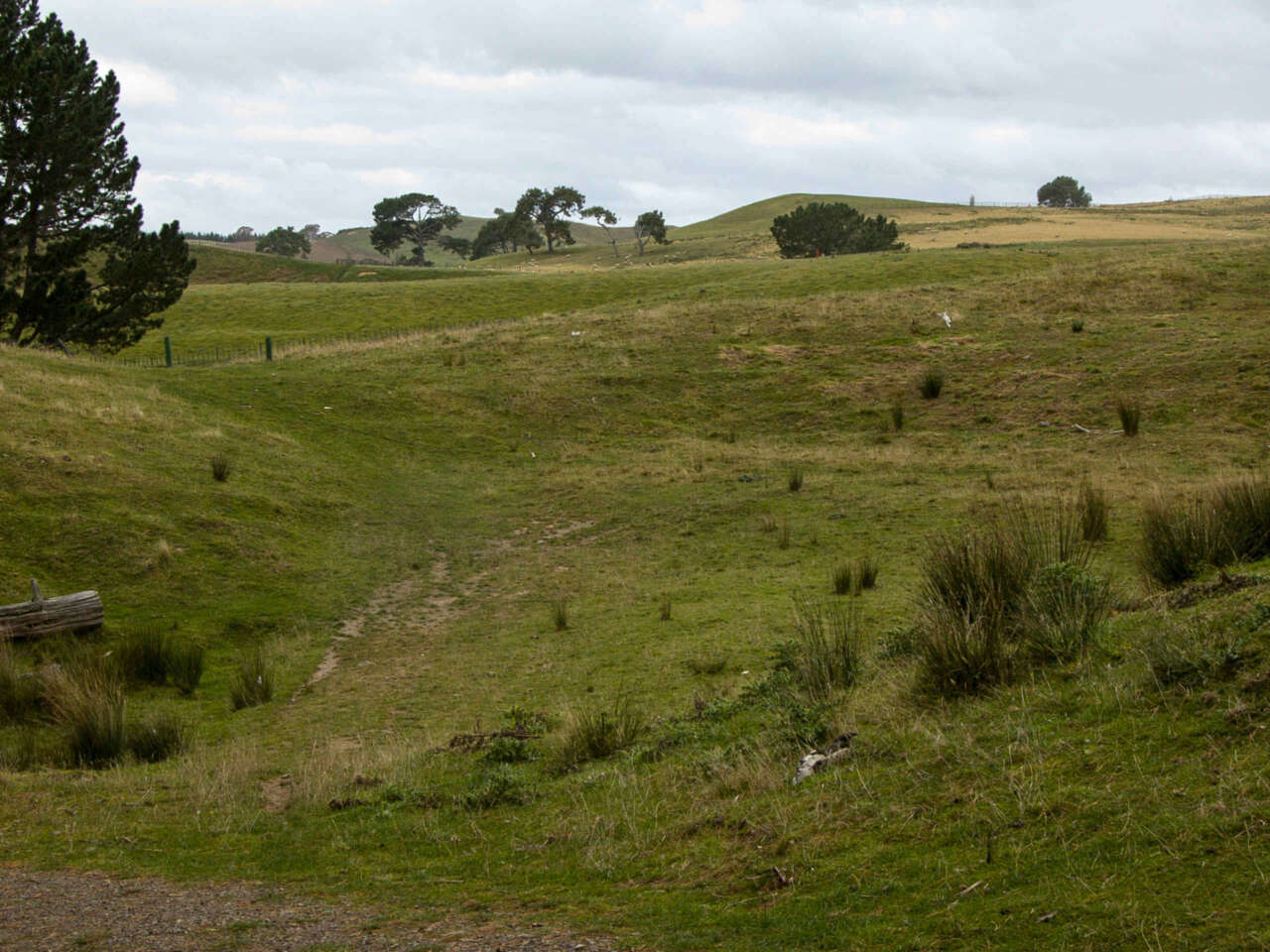



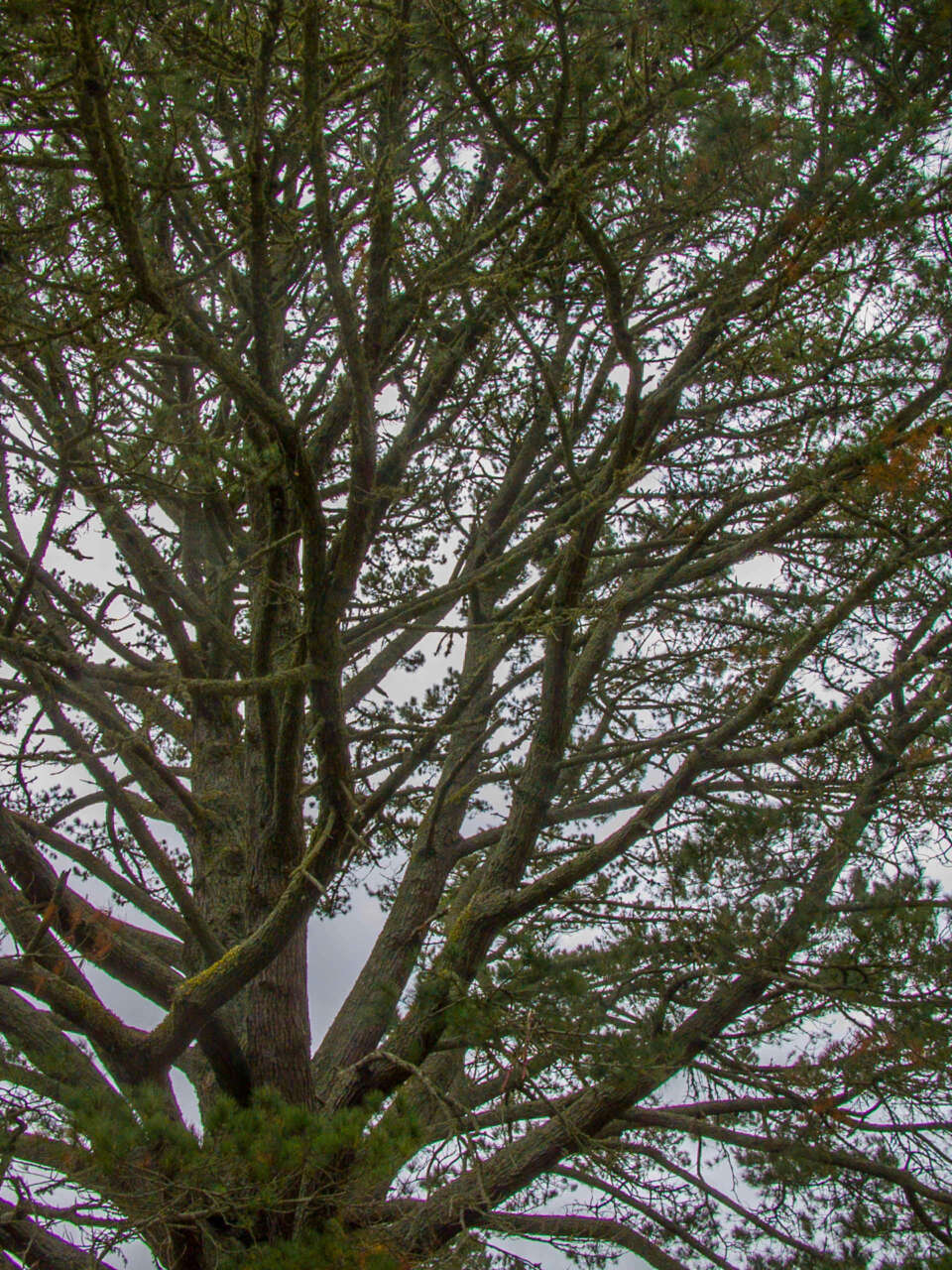

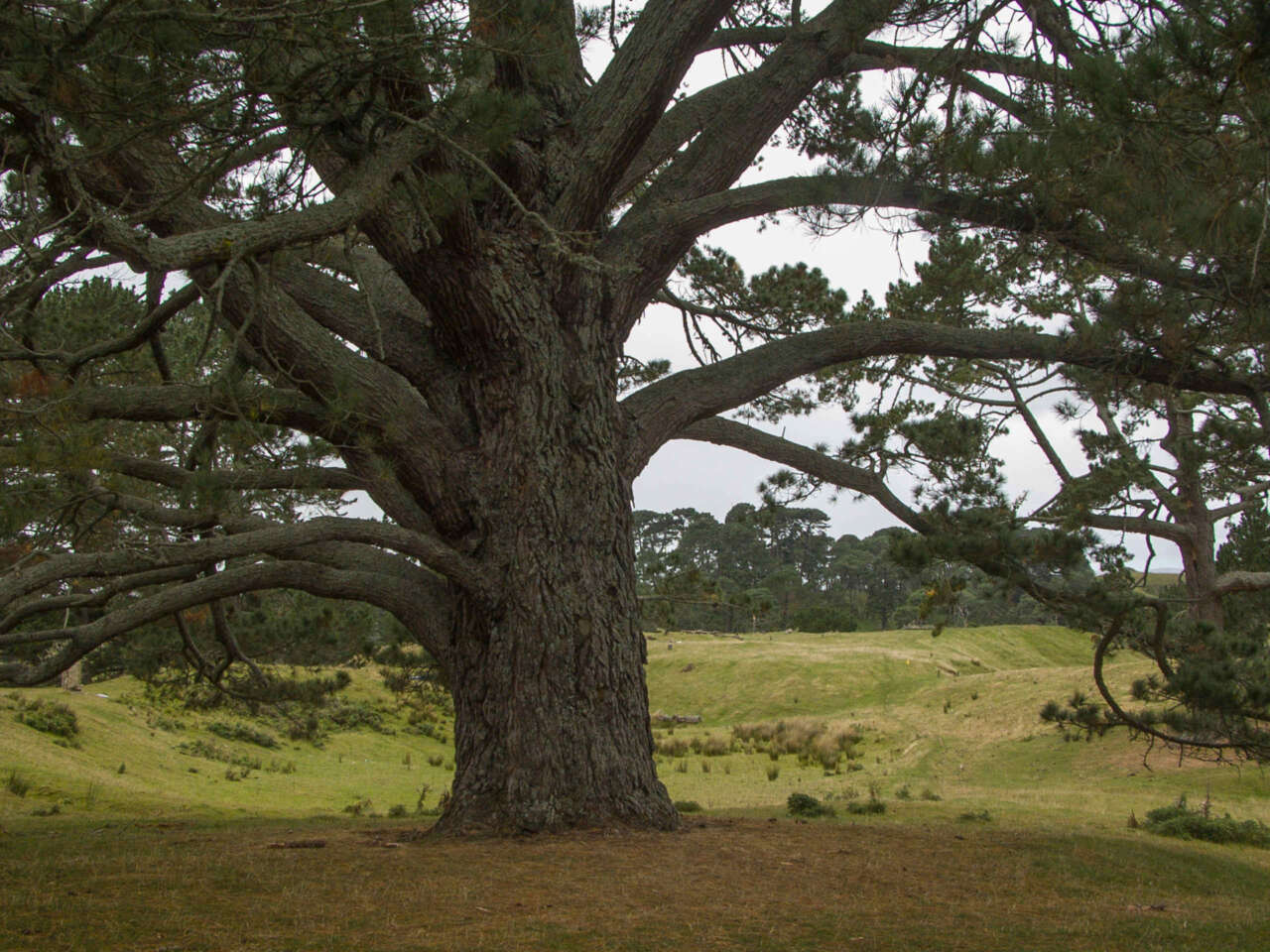
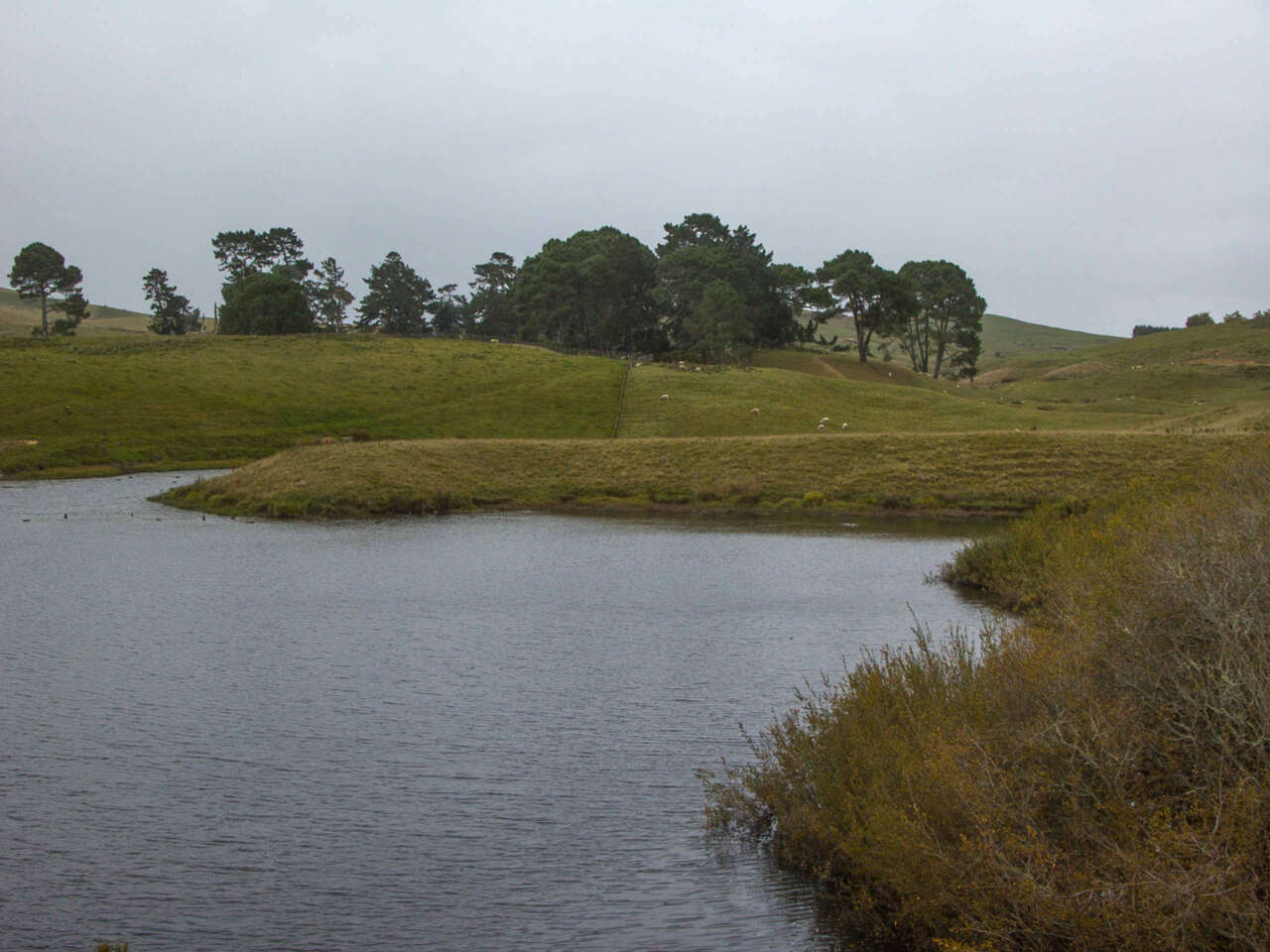

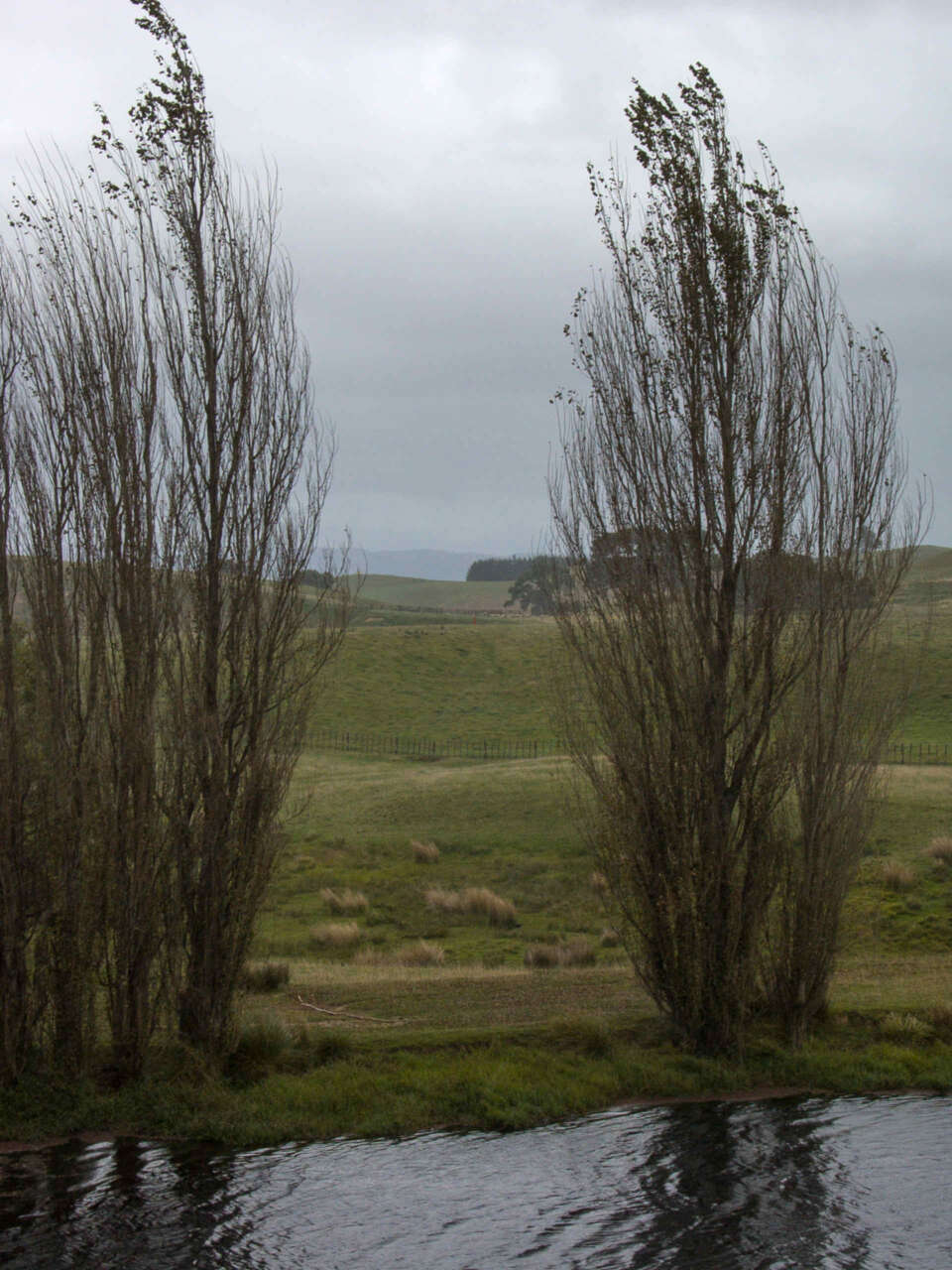
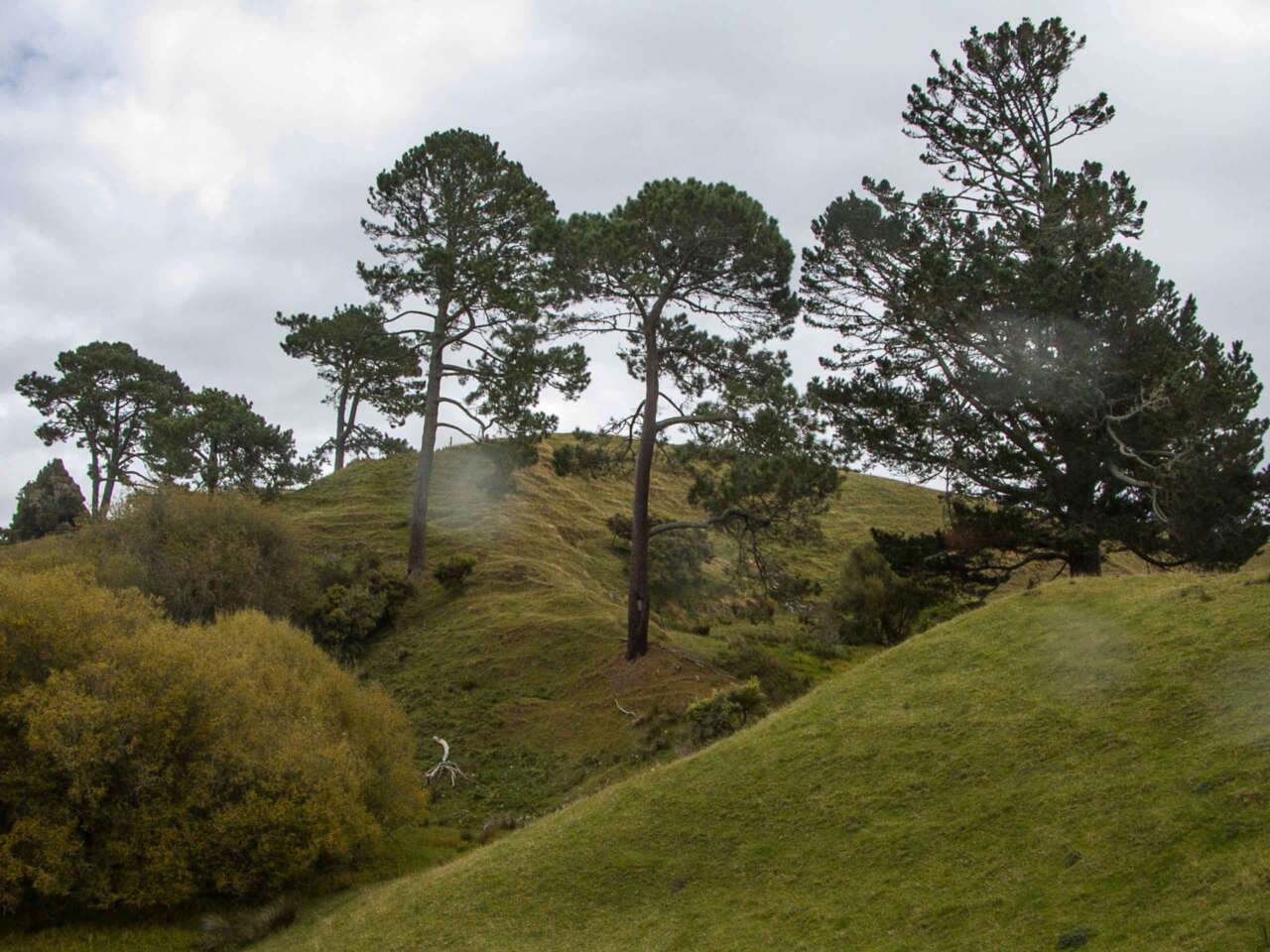


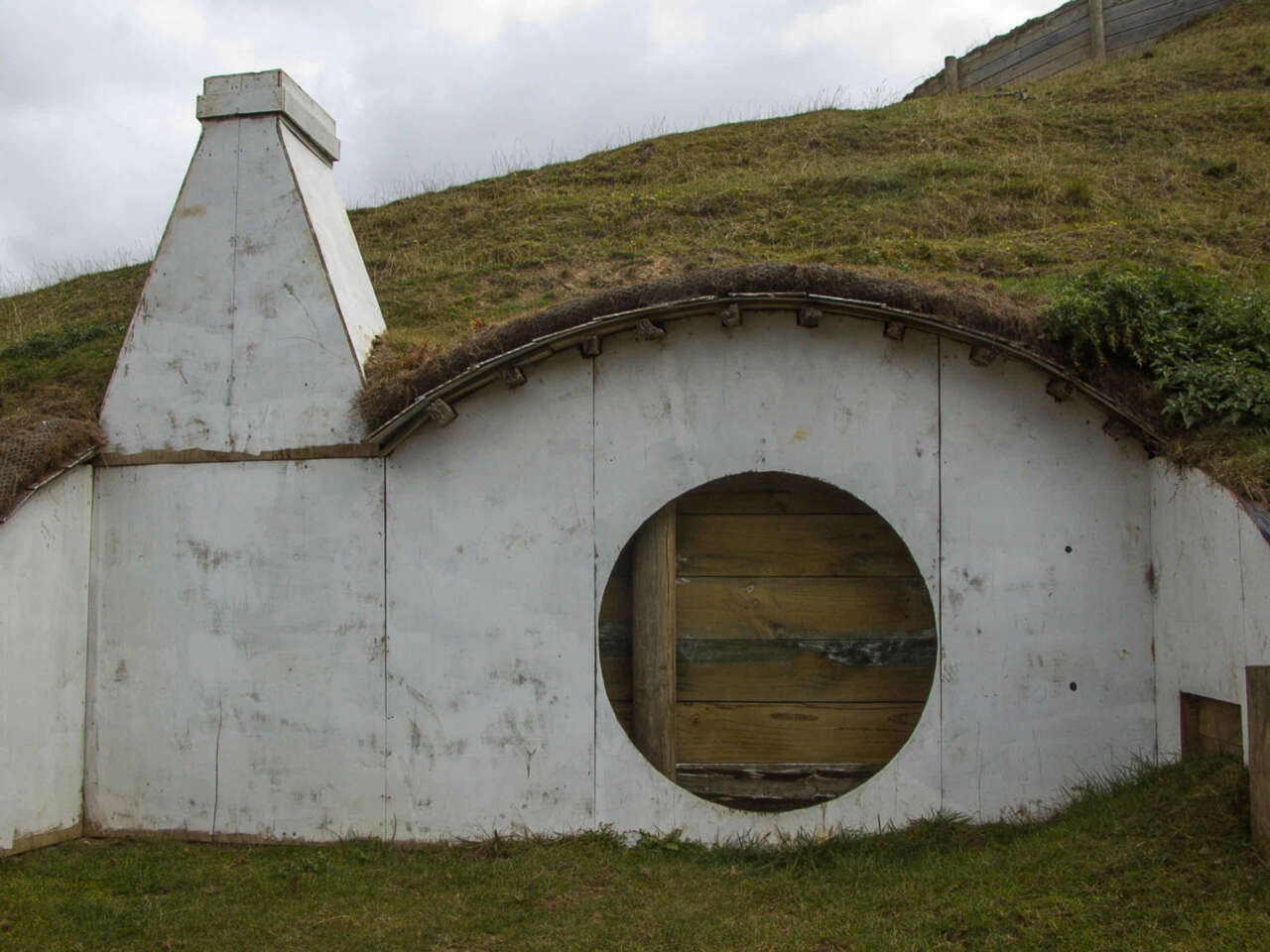
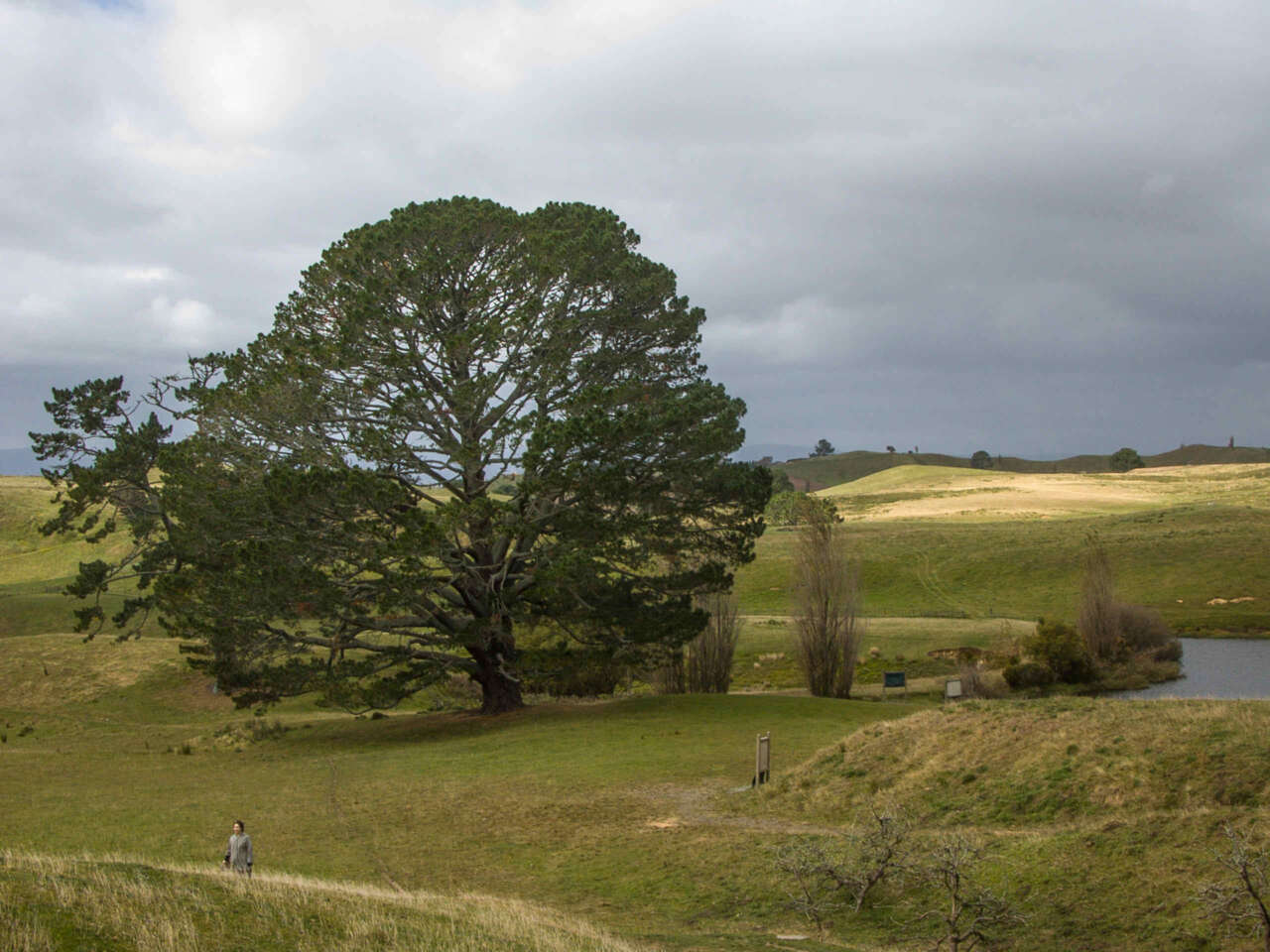
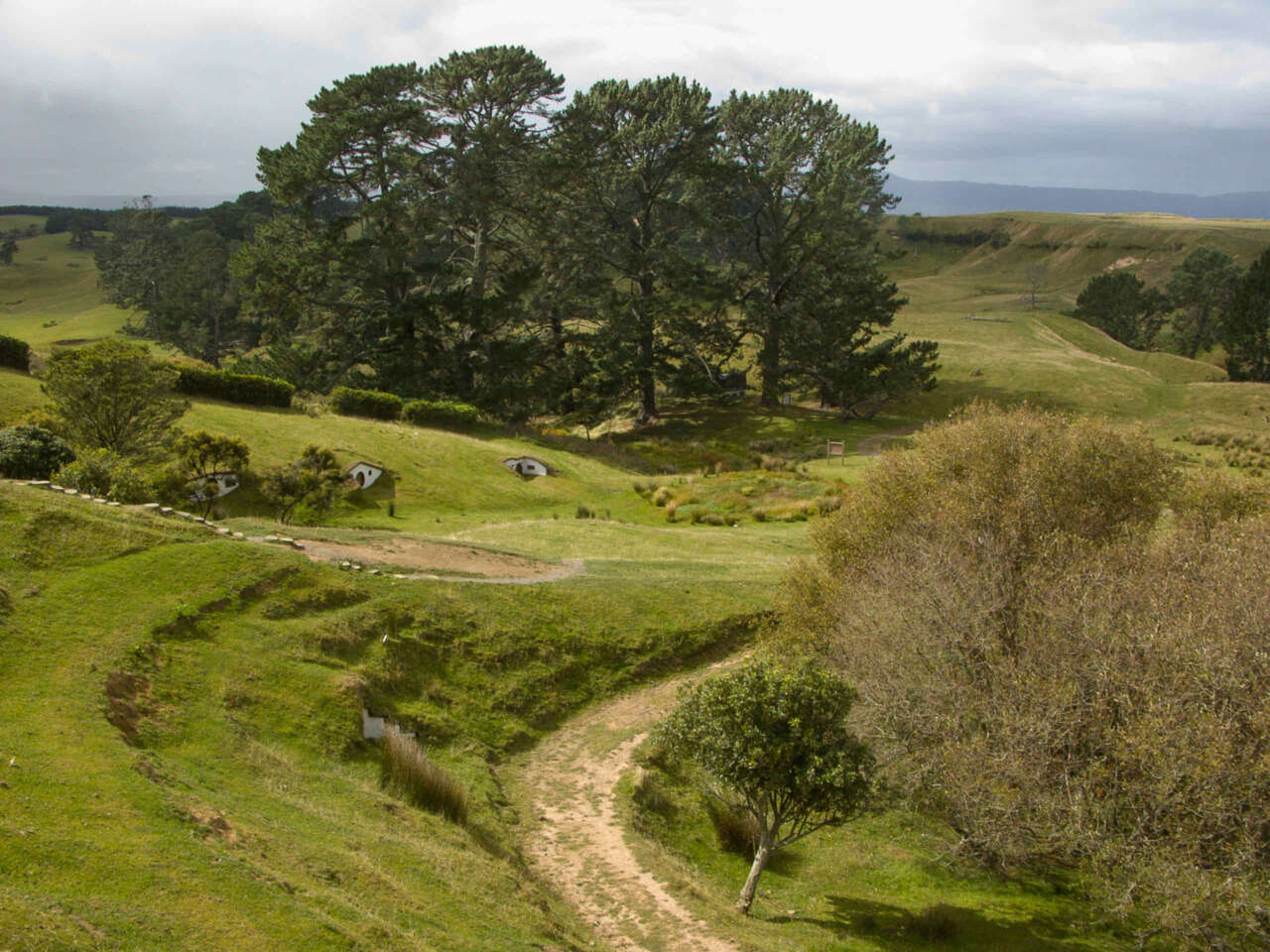

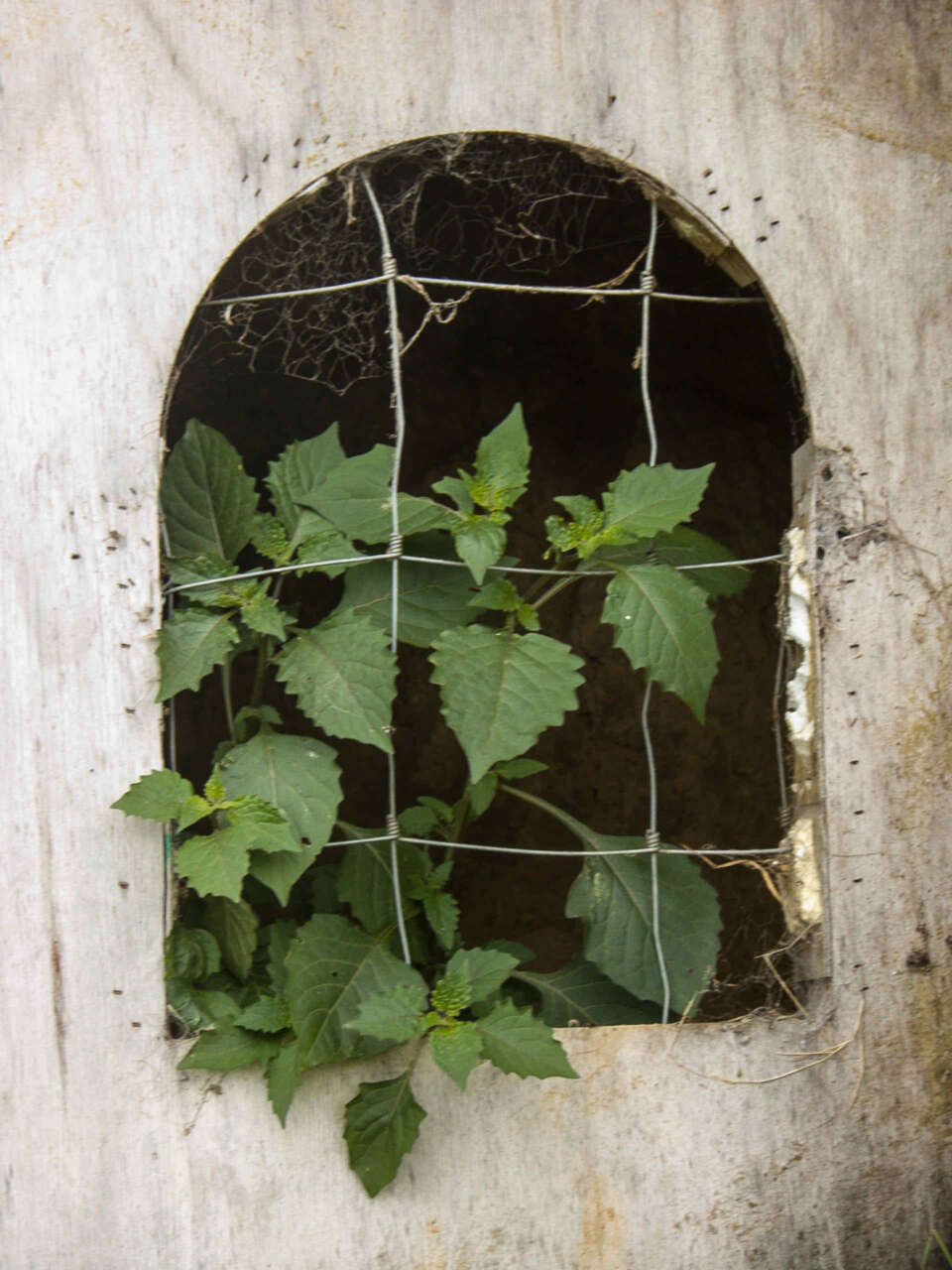


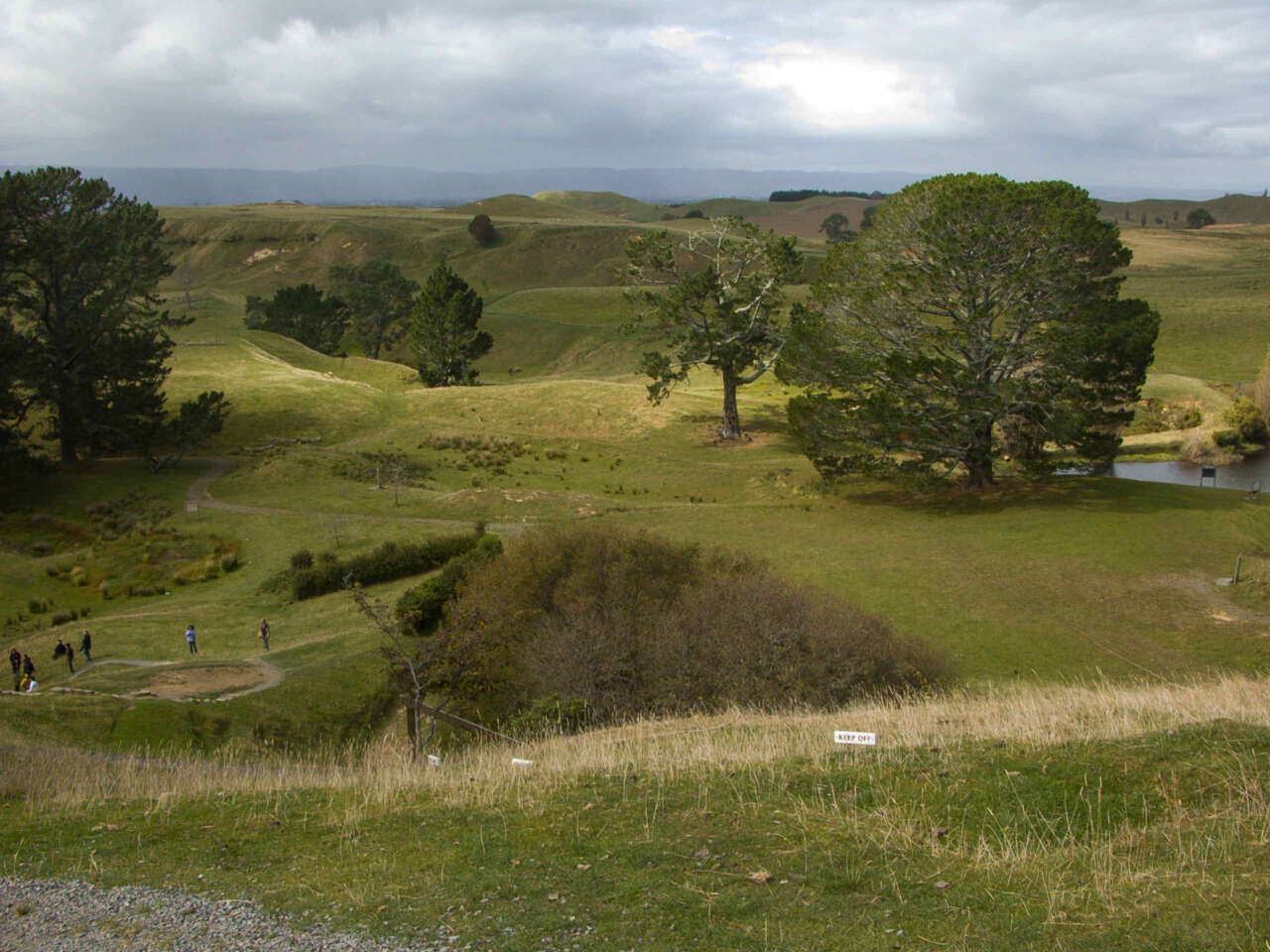

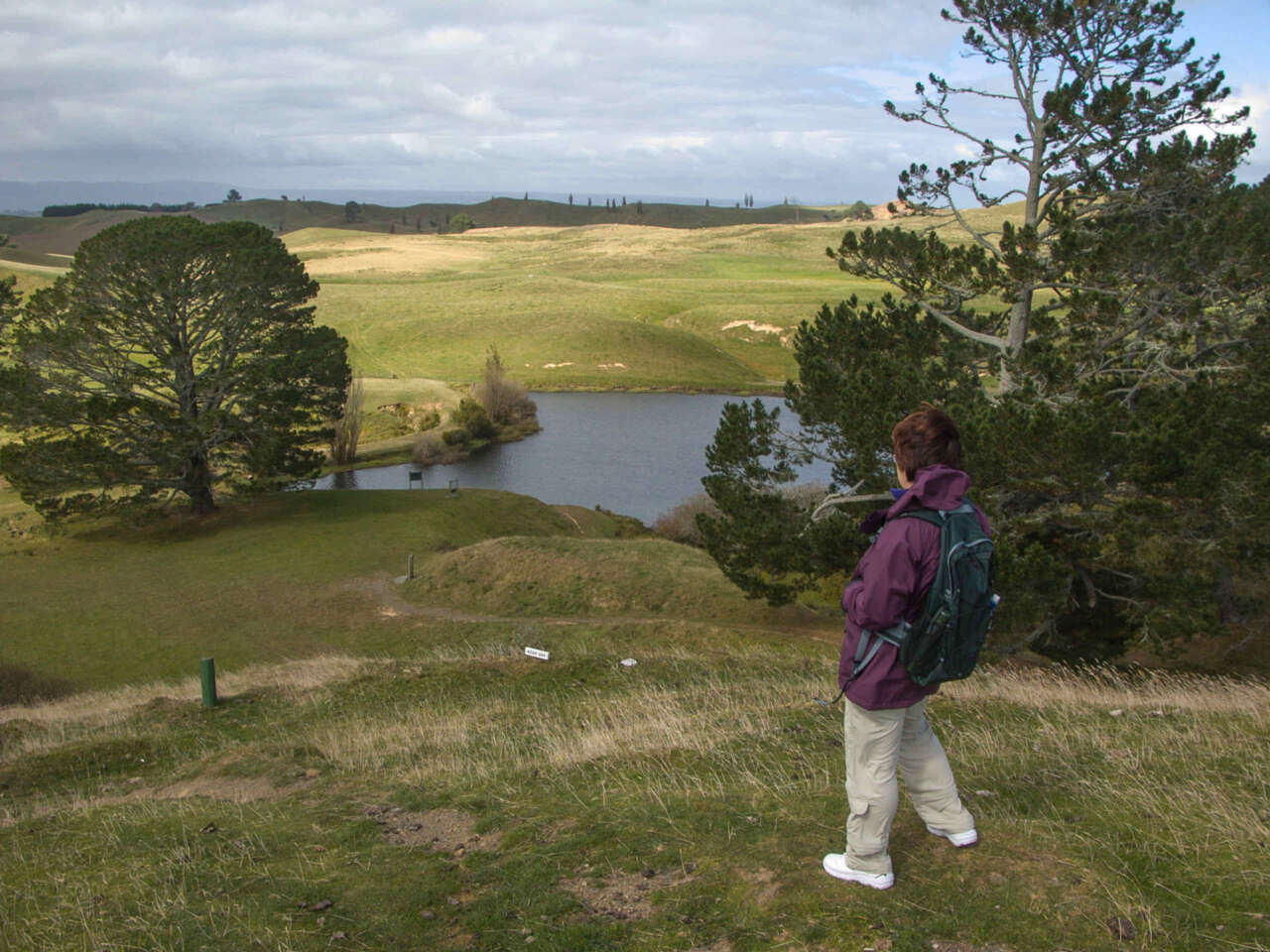
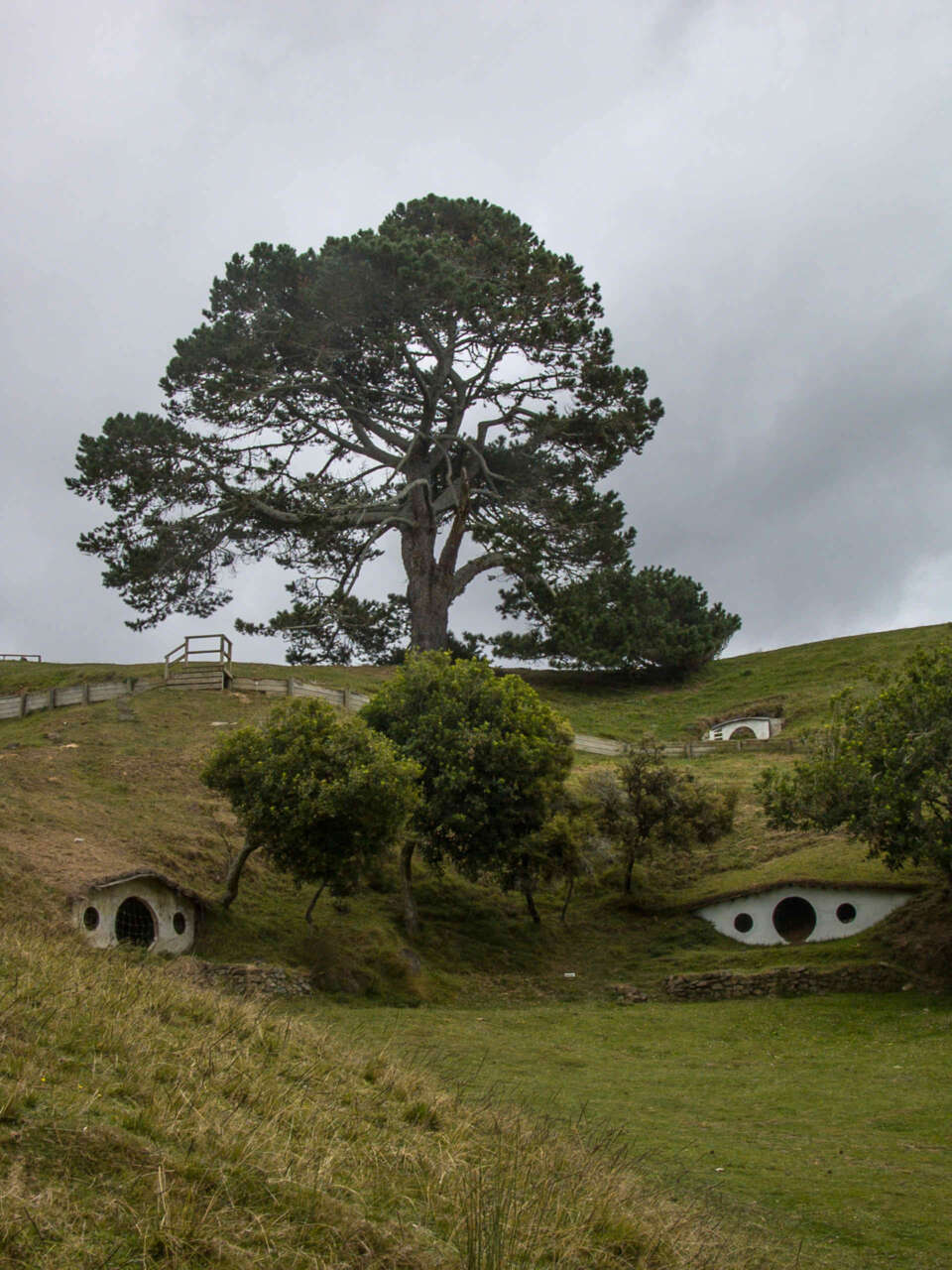
Rotorua
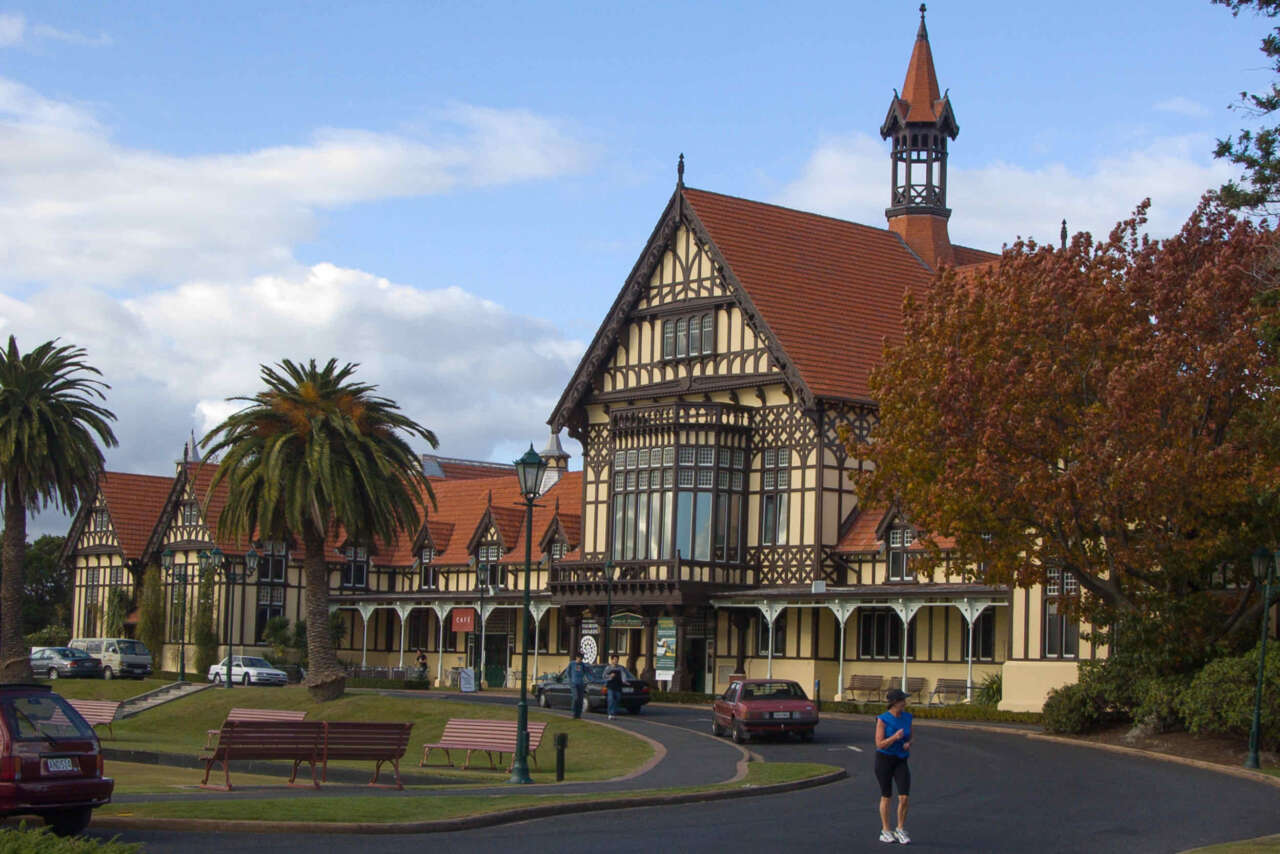
This is the Rotorua Museum of Art & History (Te Whare Taonga O Te Arawa). It was originally a bath house.
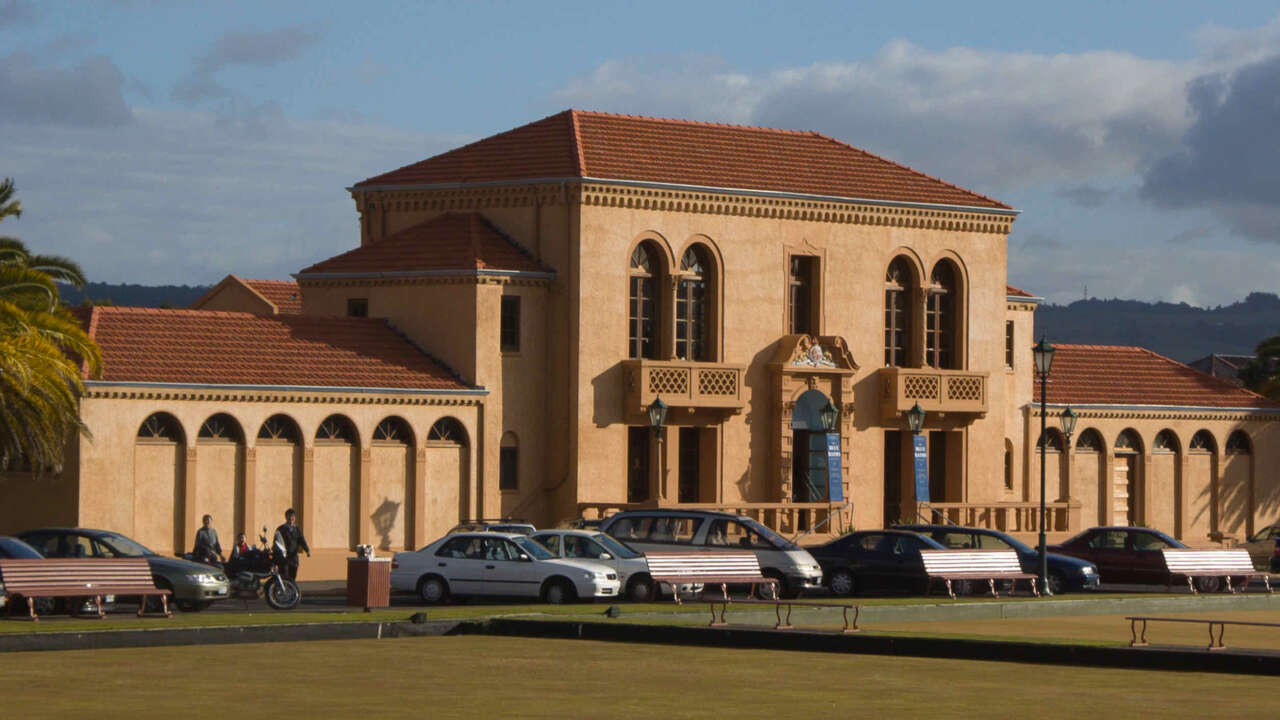
This is the Blue Baths, first opened in 1933 and recently restored.
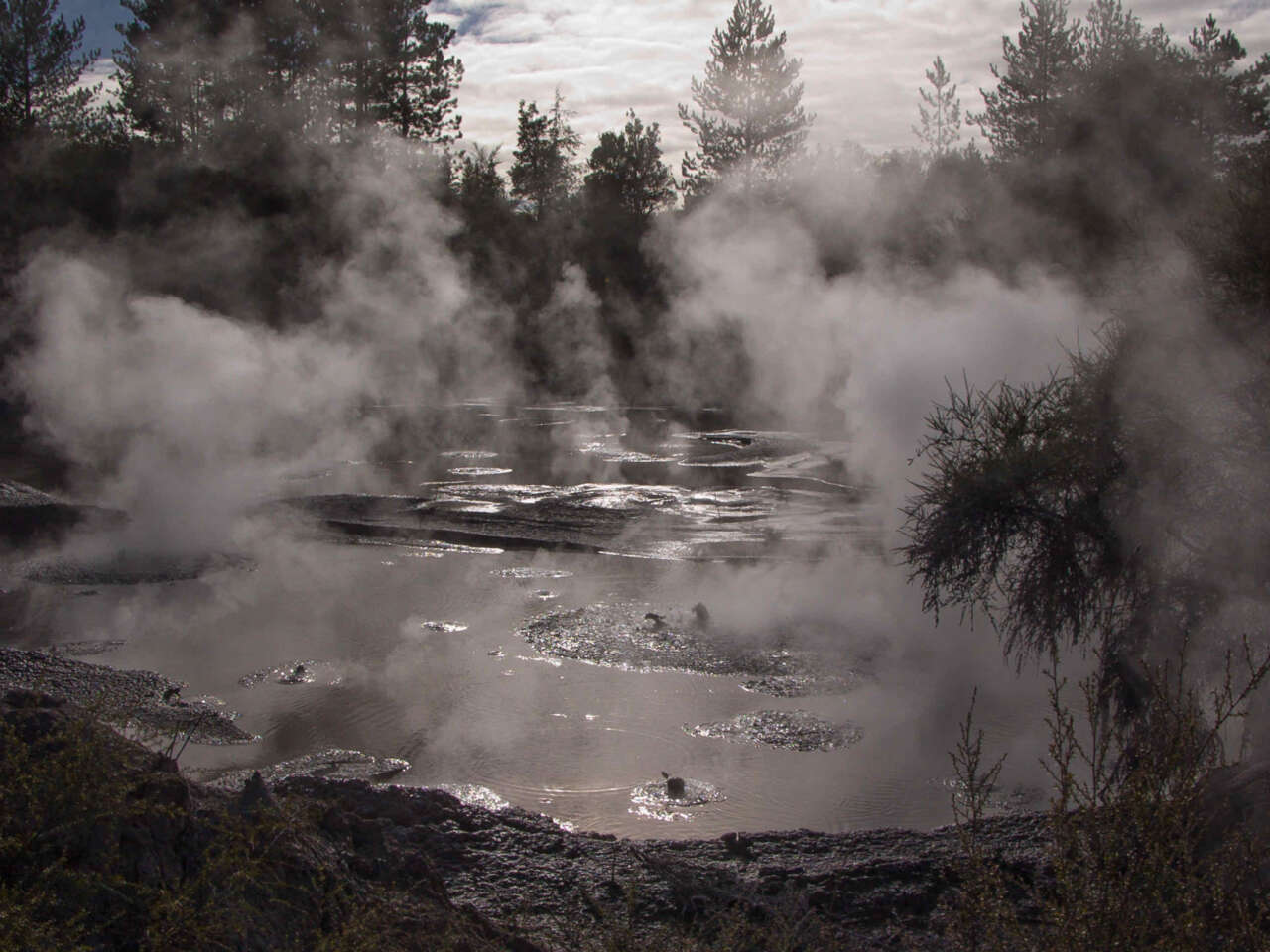
Despite the seemingly calm and pleasant-looking surface, this lake actually has hot, bubbling water!
Full set of photos:
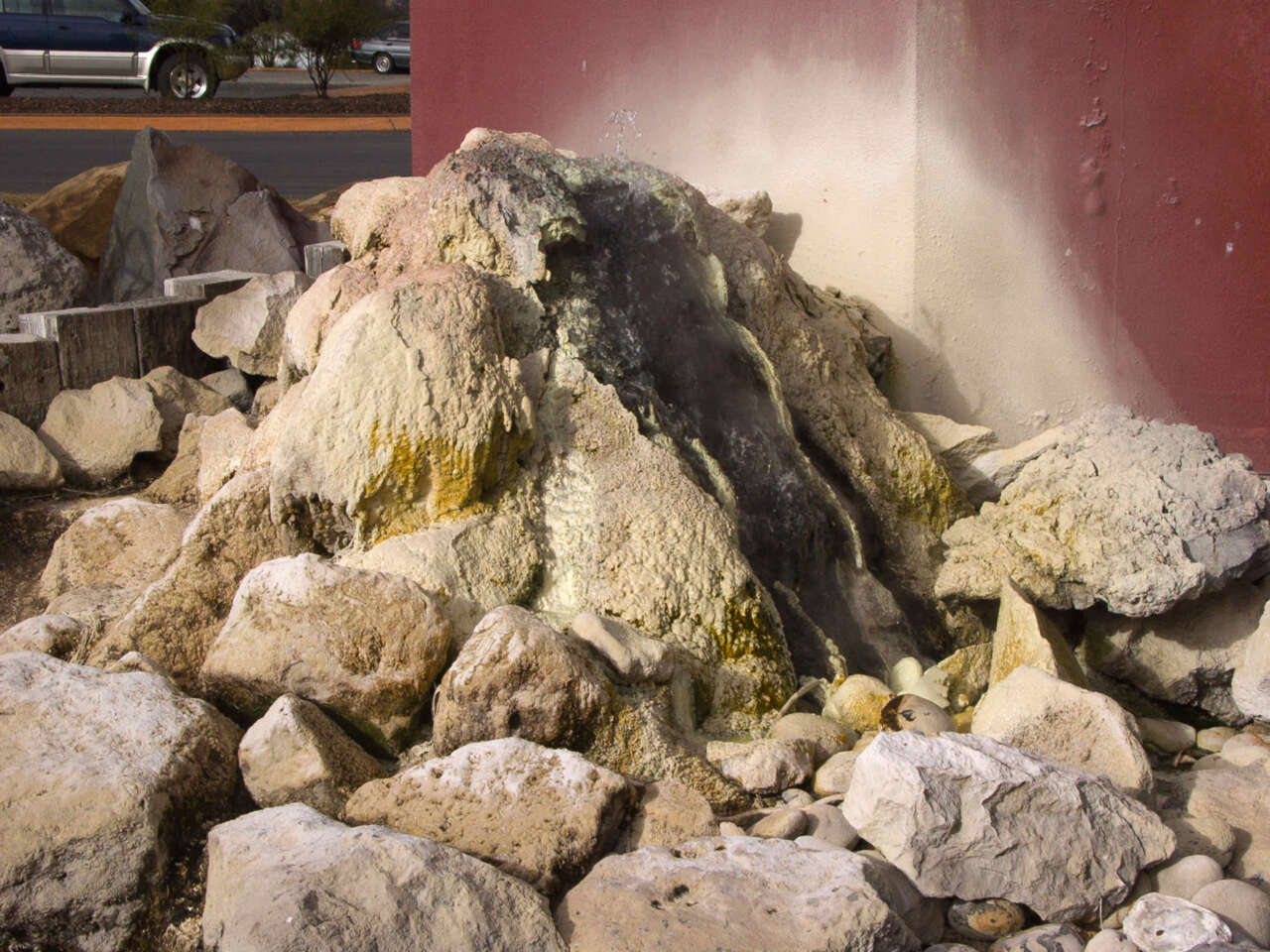
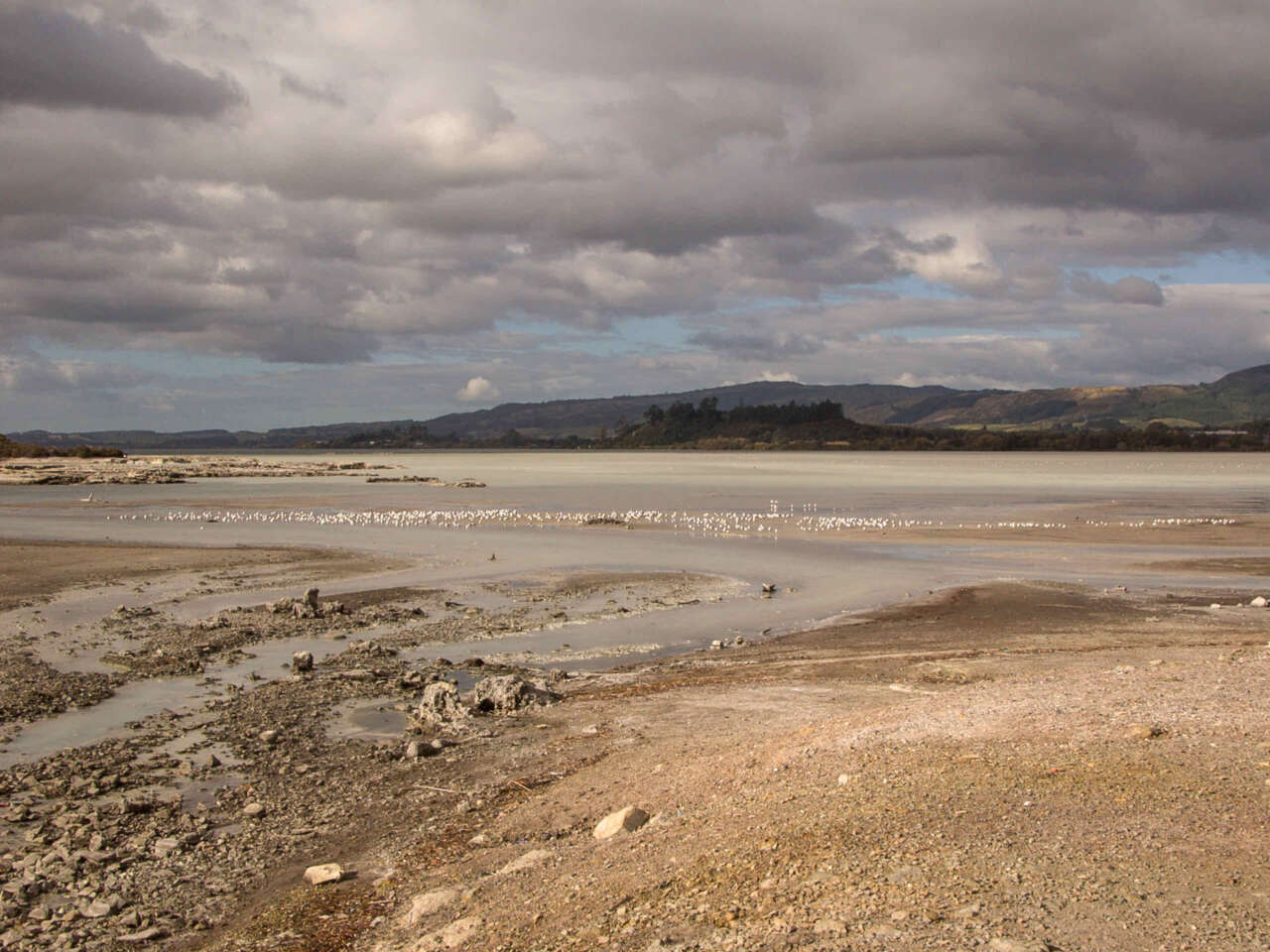
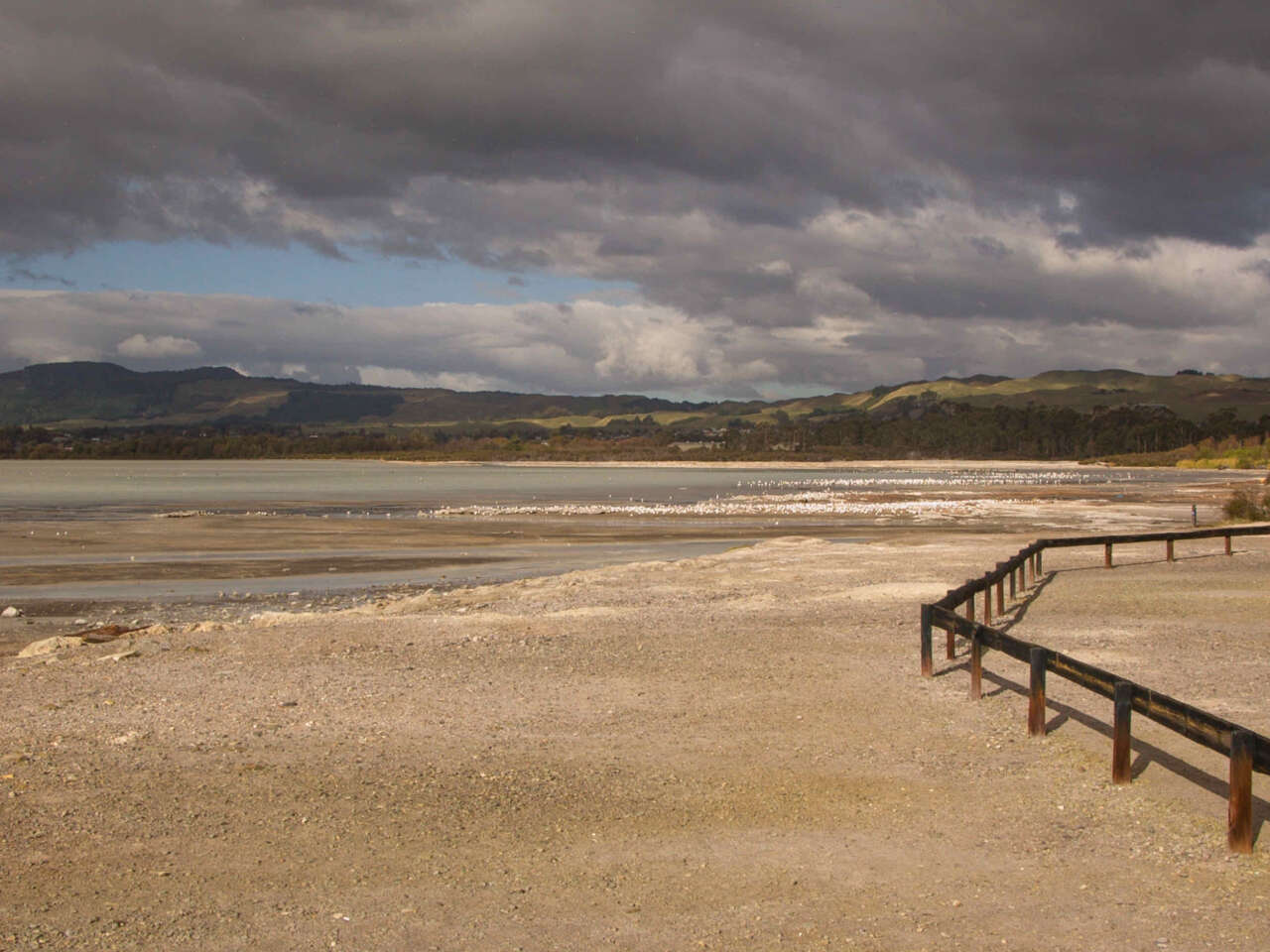
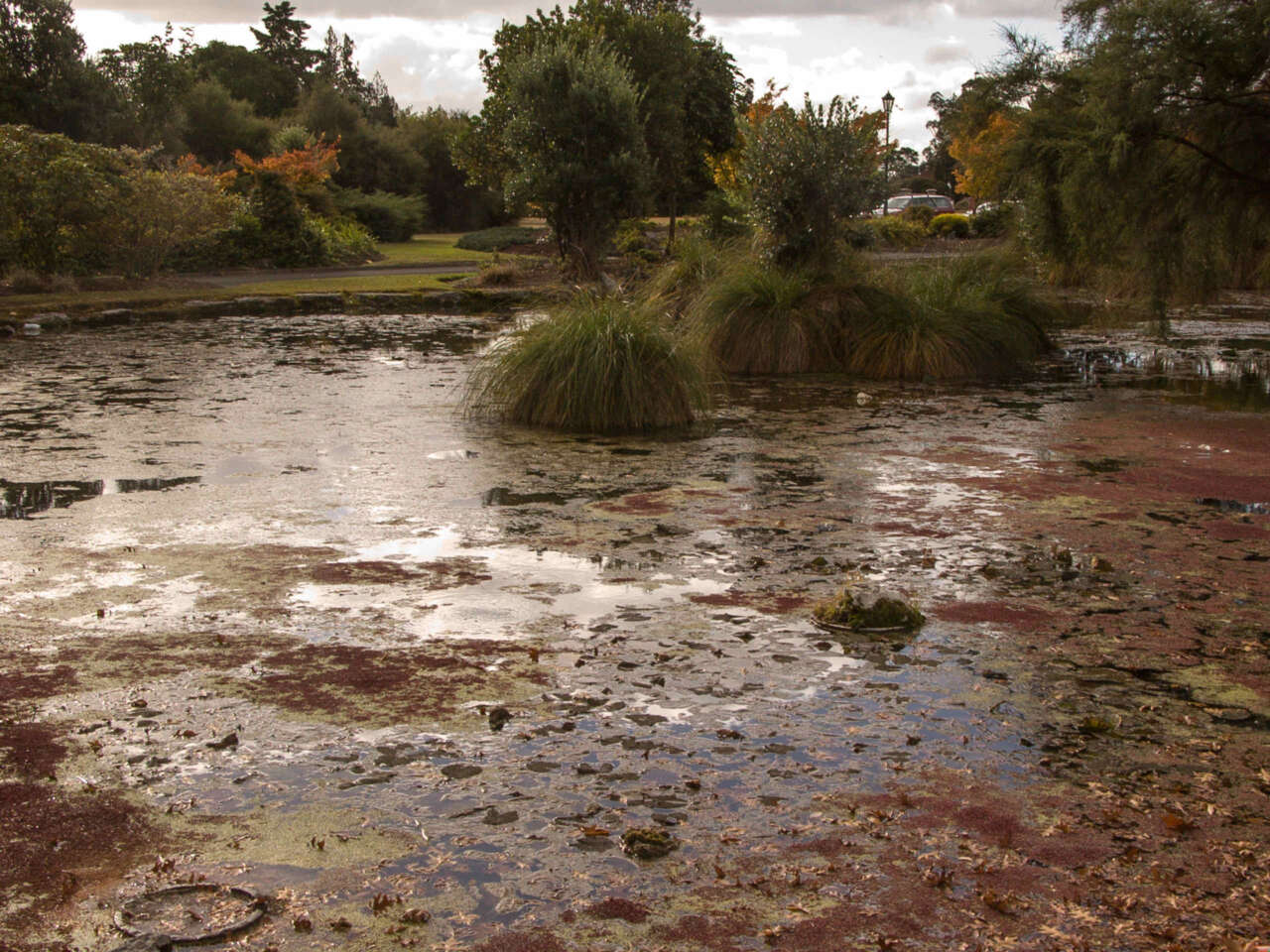
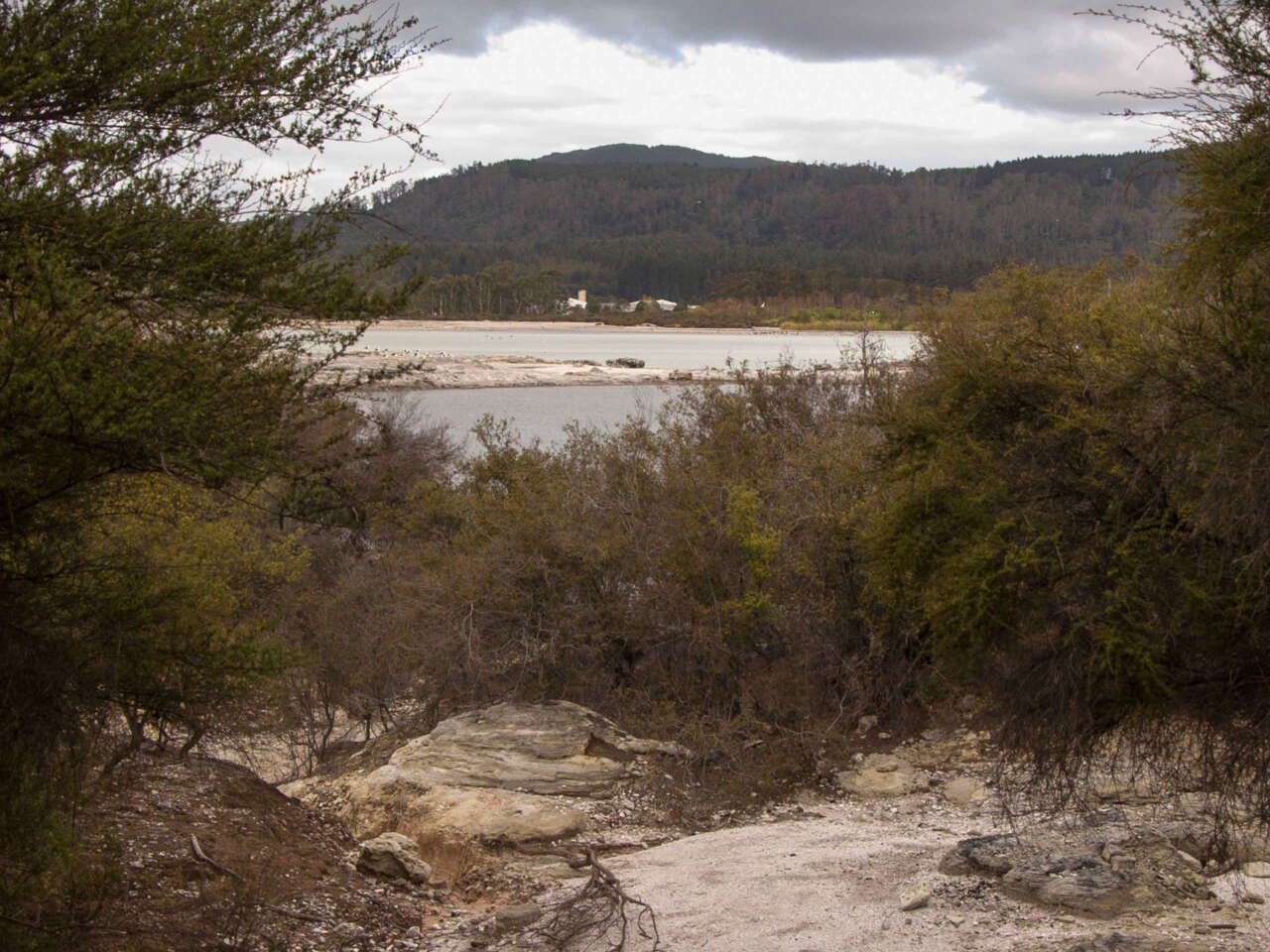
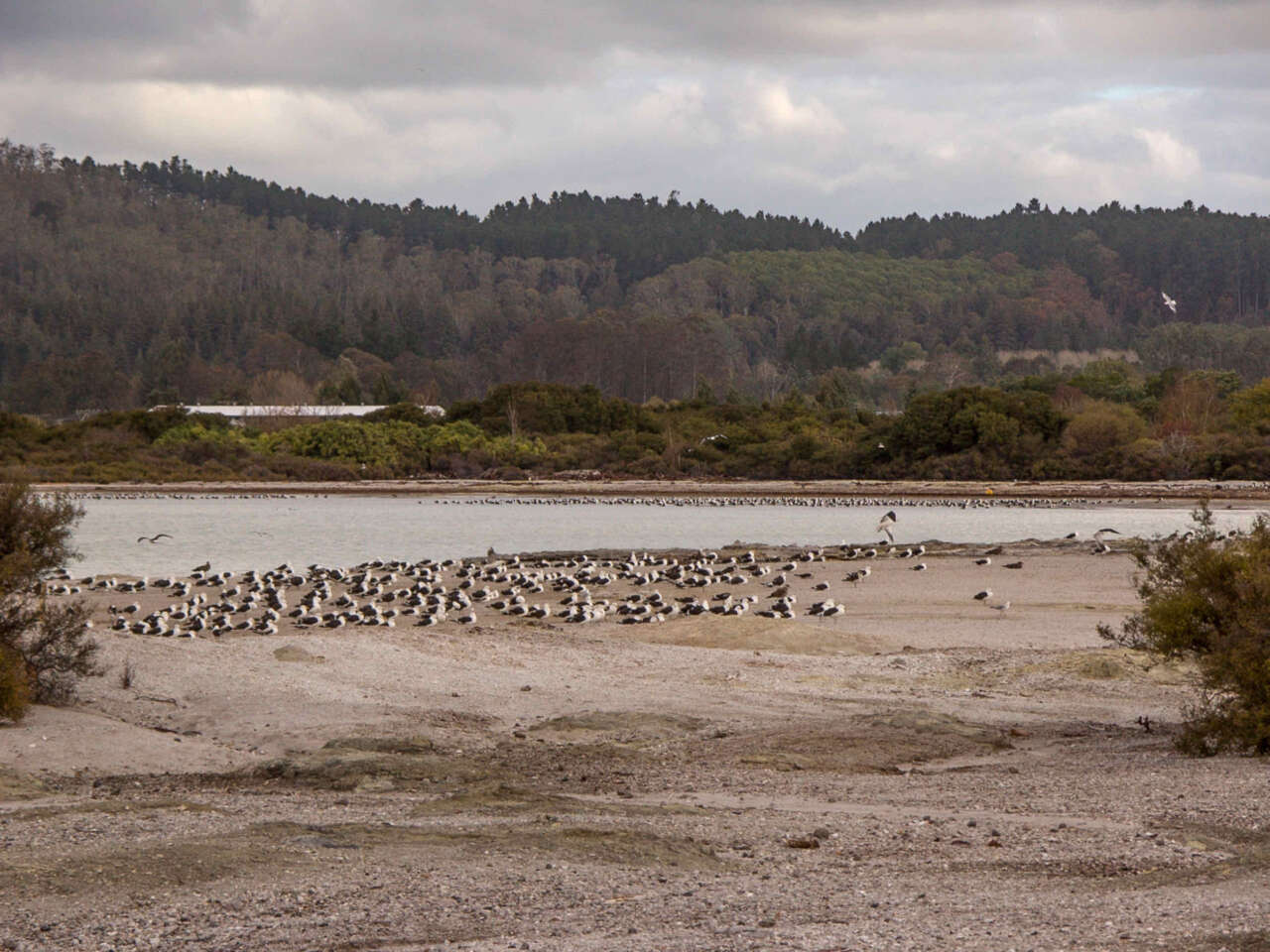
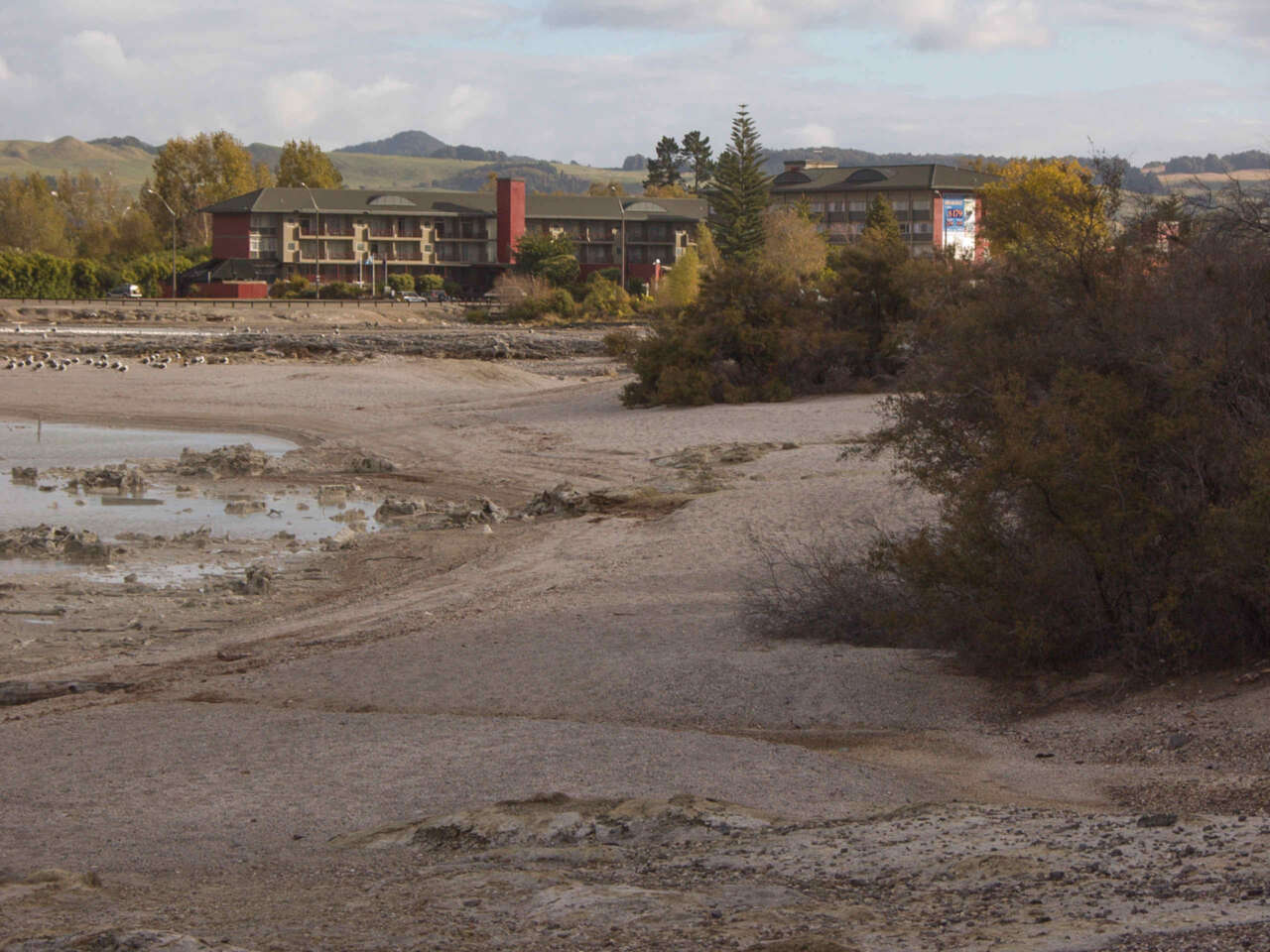

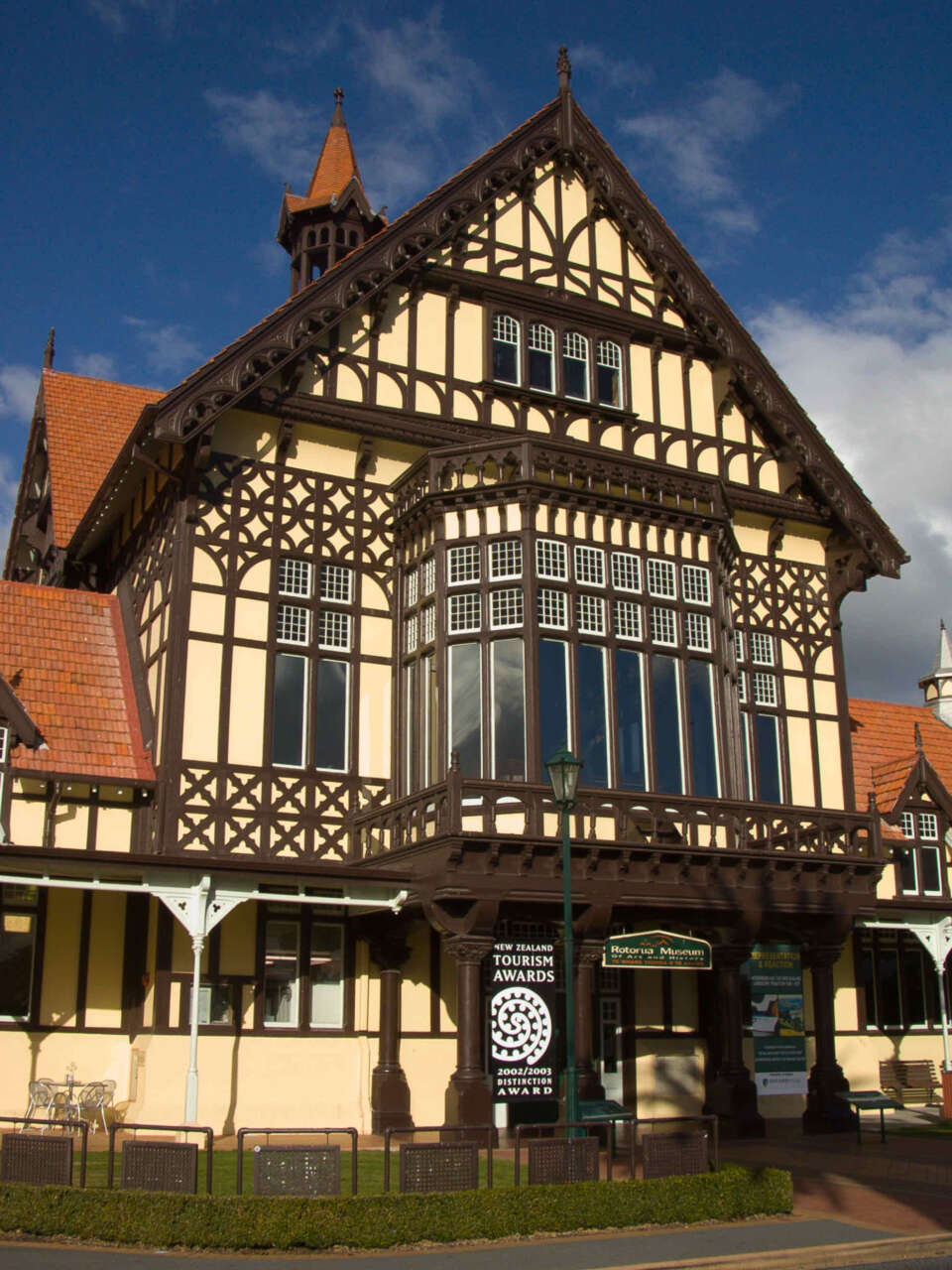
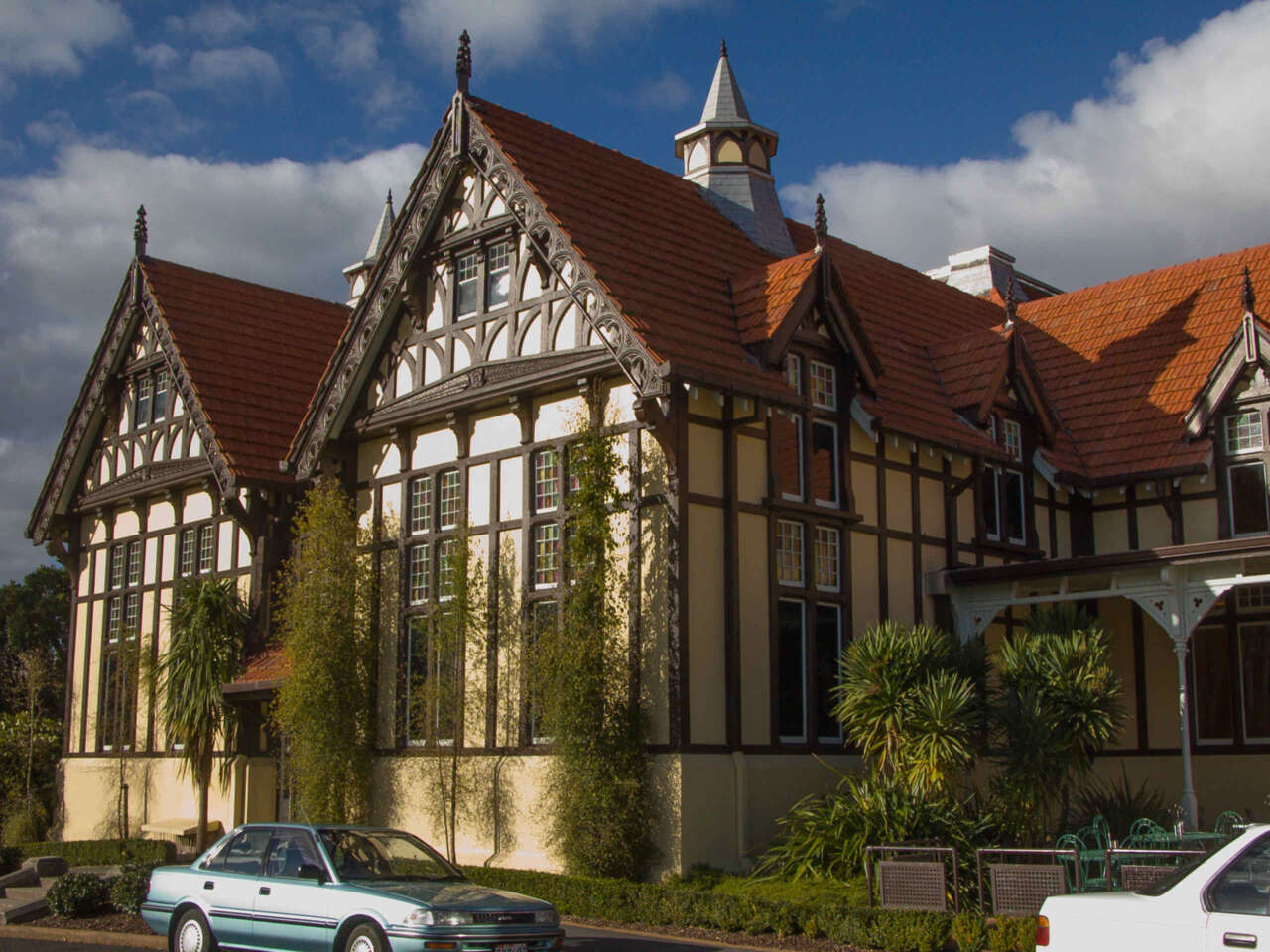
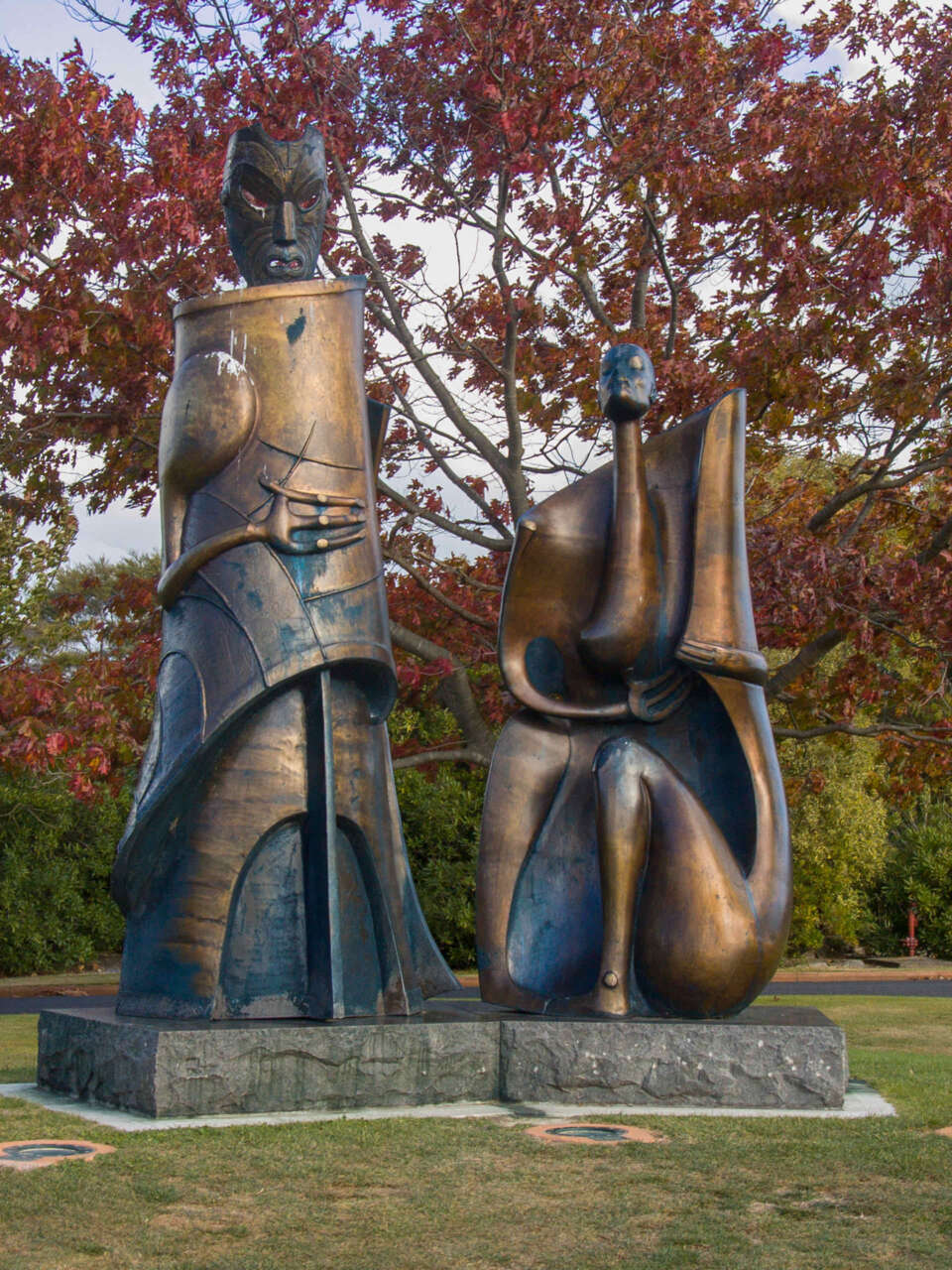

Tamaki Maori Village
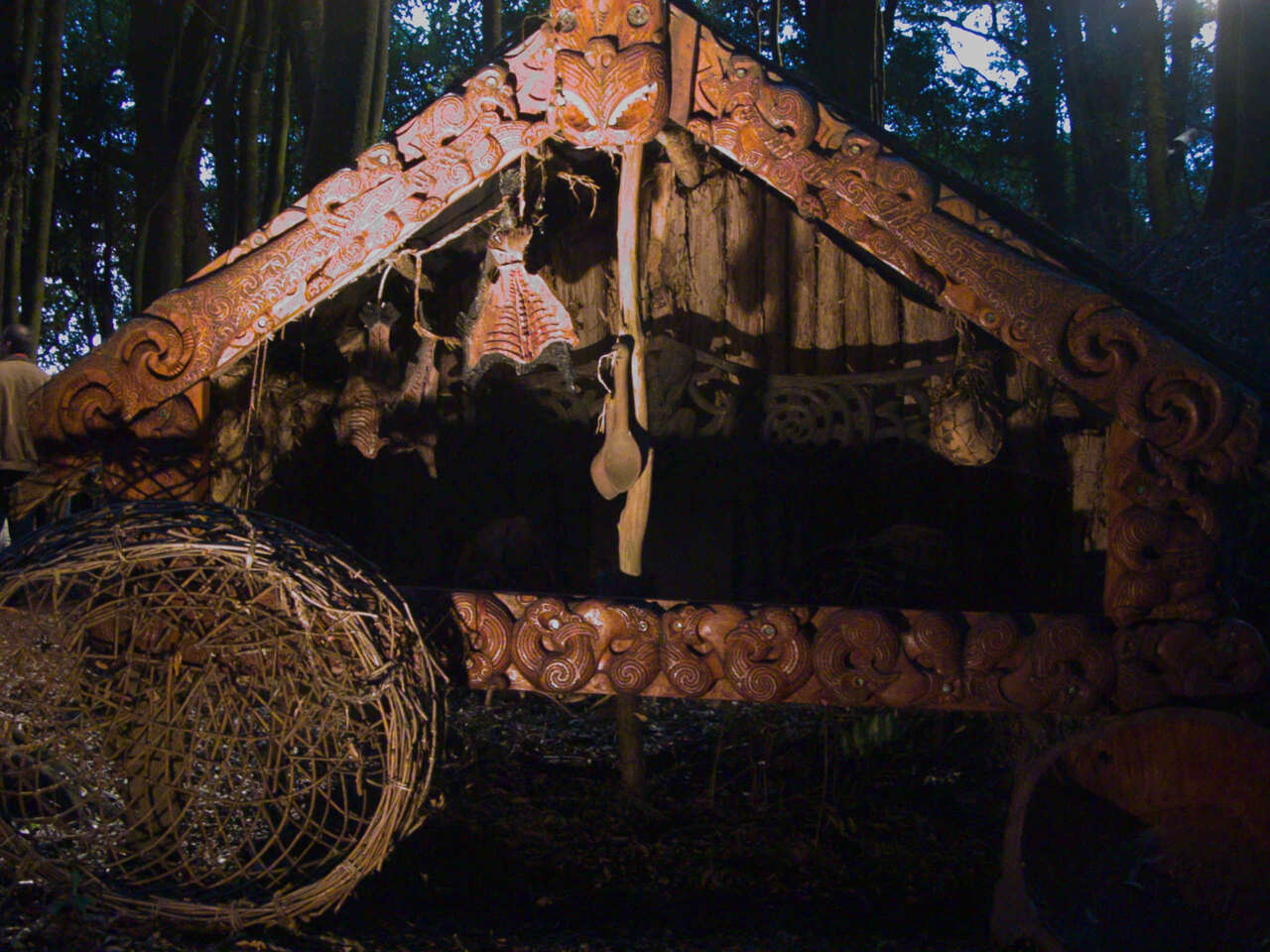
The Tamaki Maori Village is a recreation of a pre-European Maori Village on the outskirts of Rotorua.
A Maori welcoming ritual – called “Te Wero” or The Challenge.
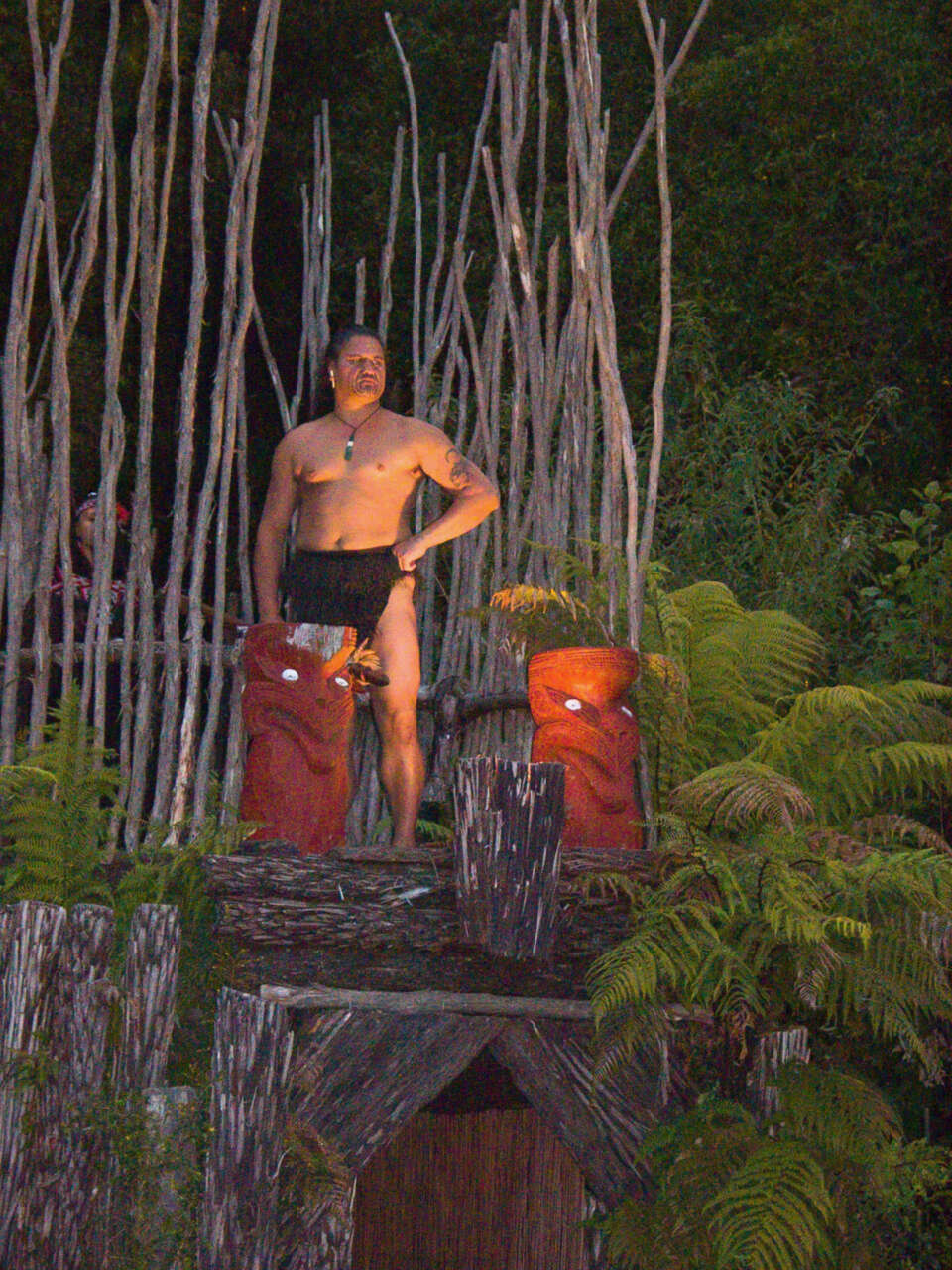
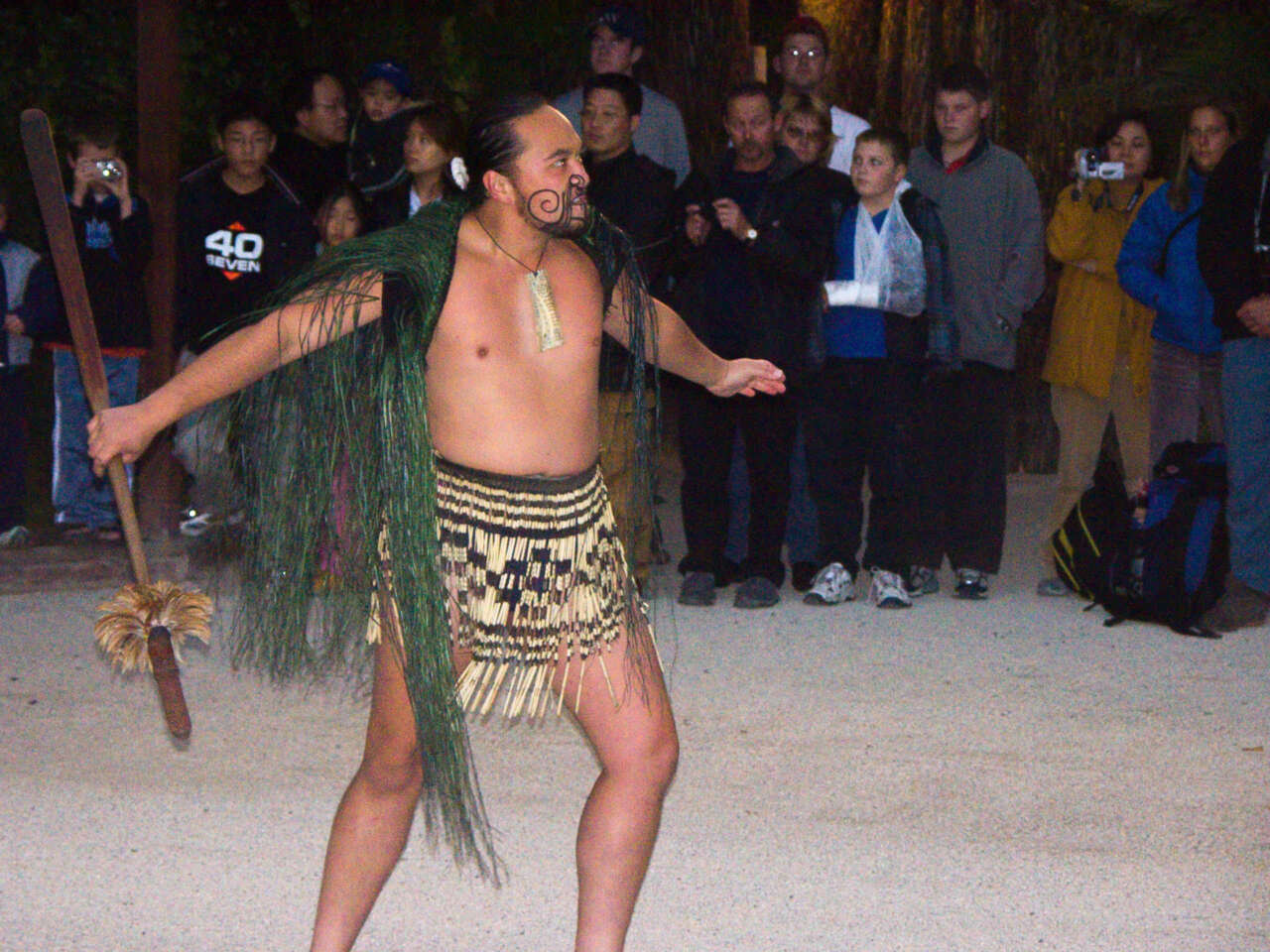
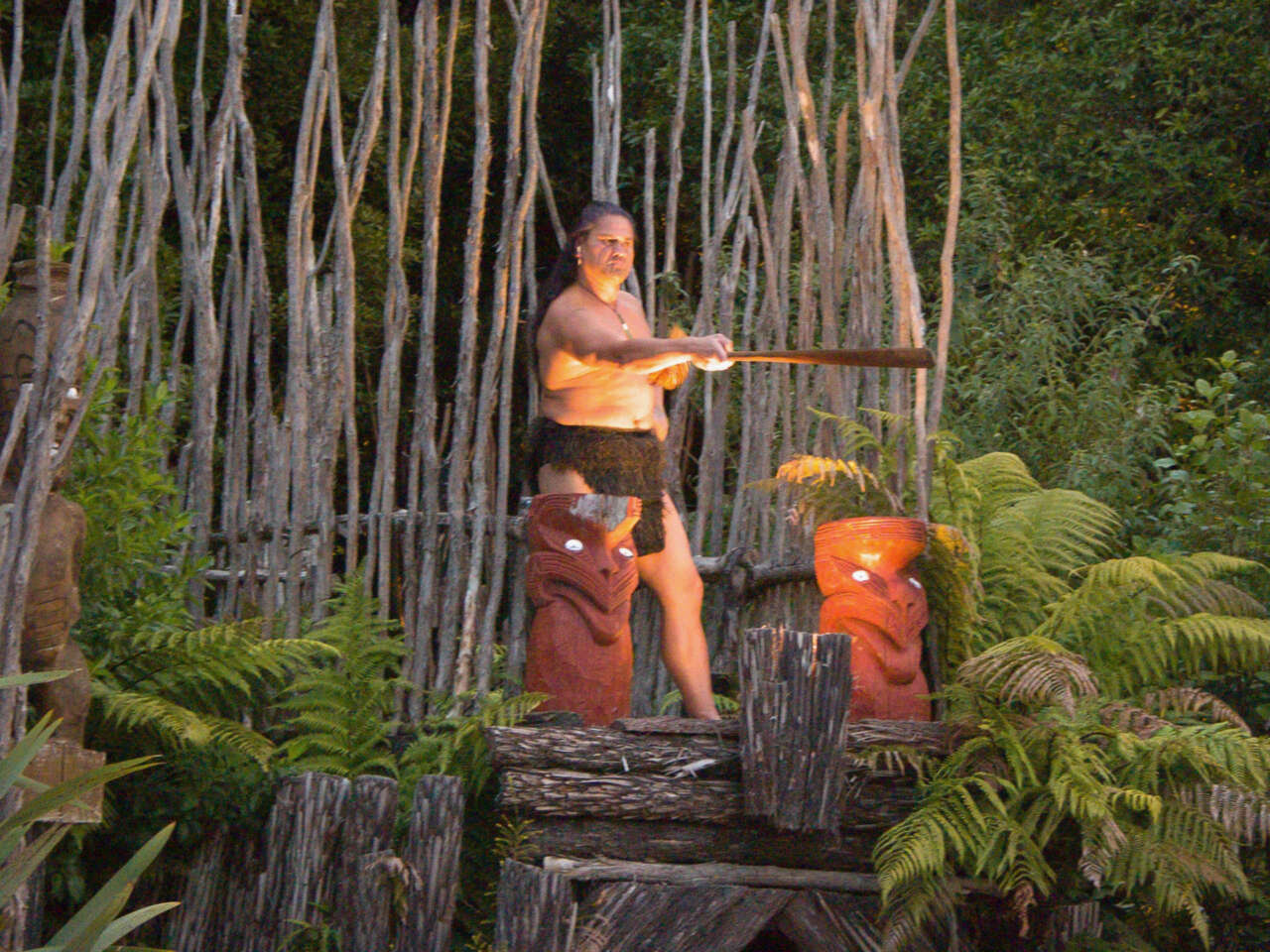
We also get treated to a variety of song, dance and explanations of values and lifestyle/traditions of Maori tribes. This is part of the “Powhiri” or welcome dance.
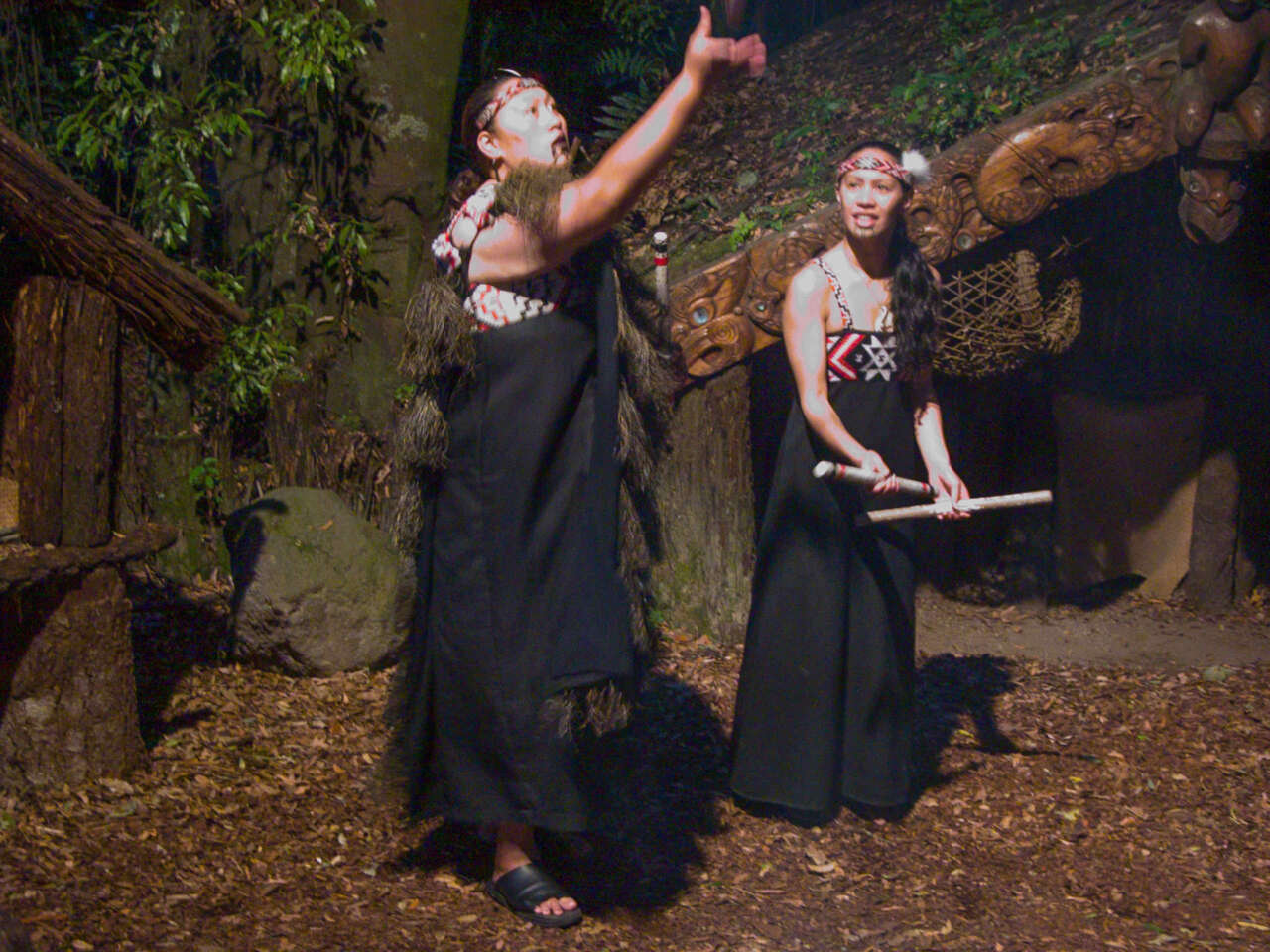
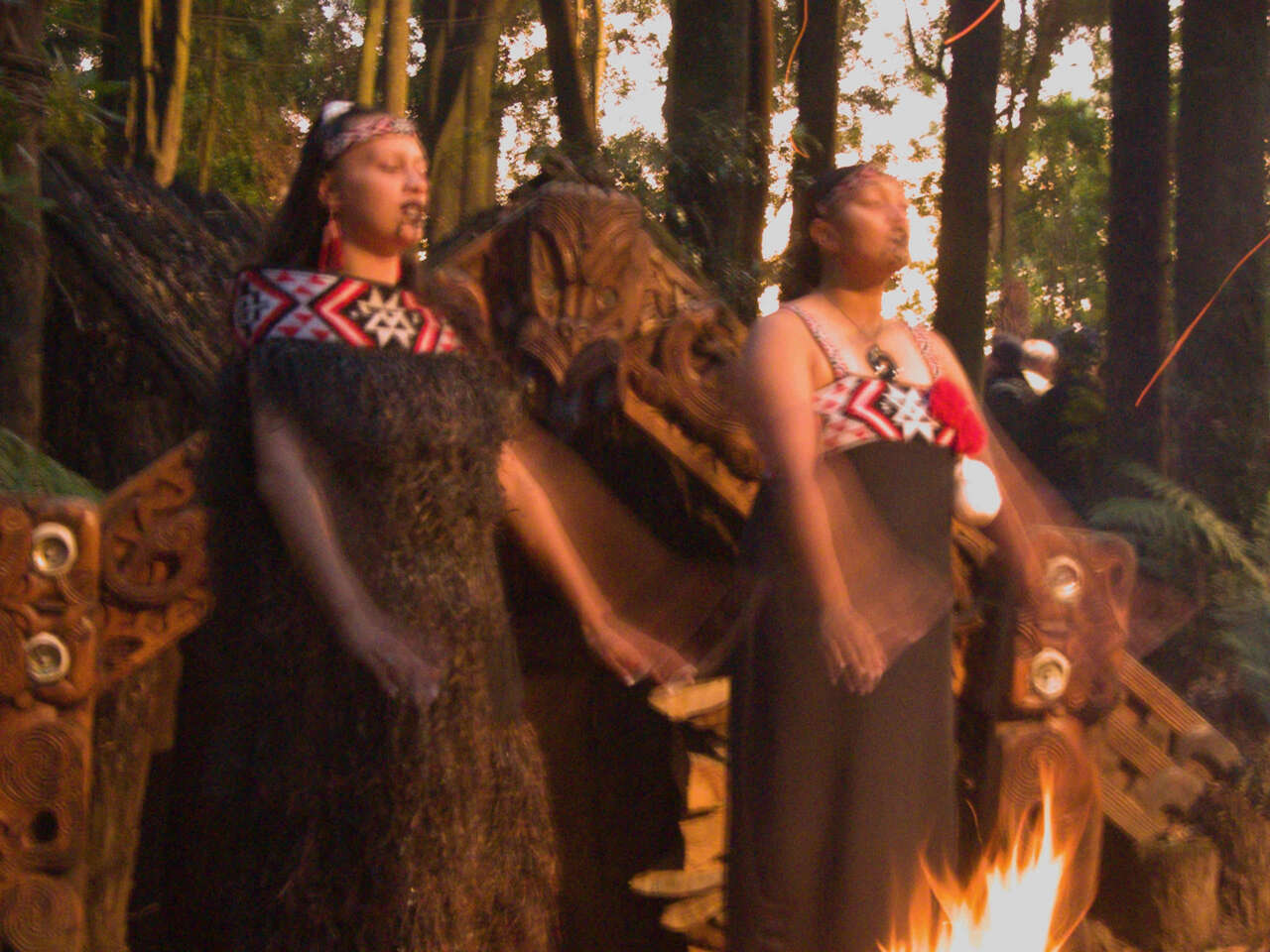
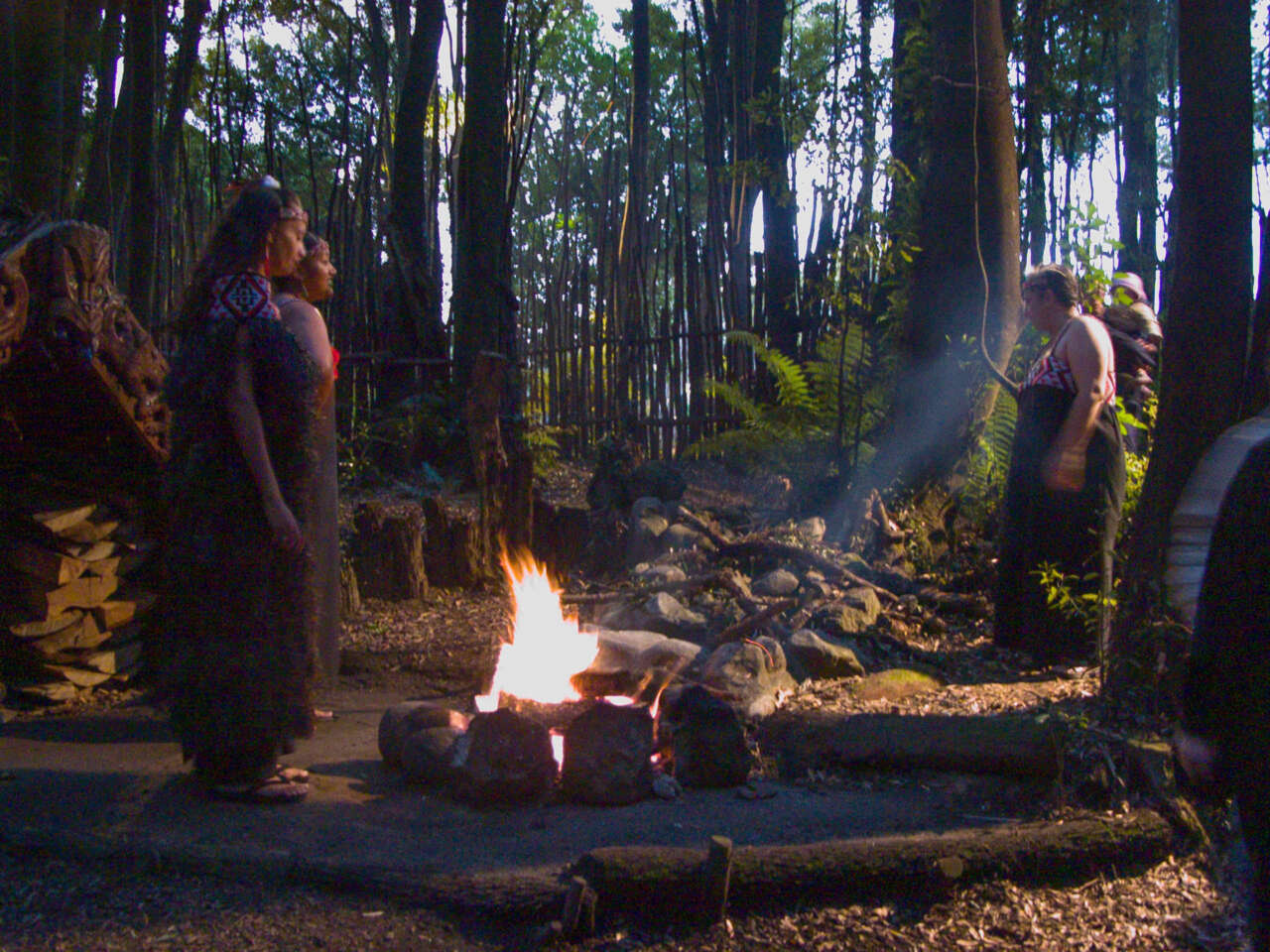
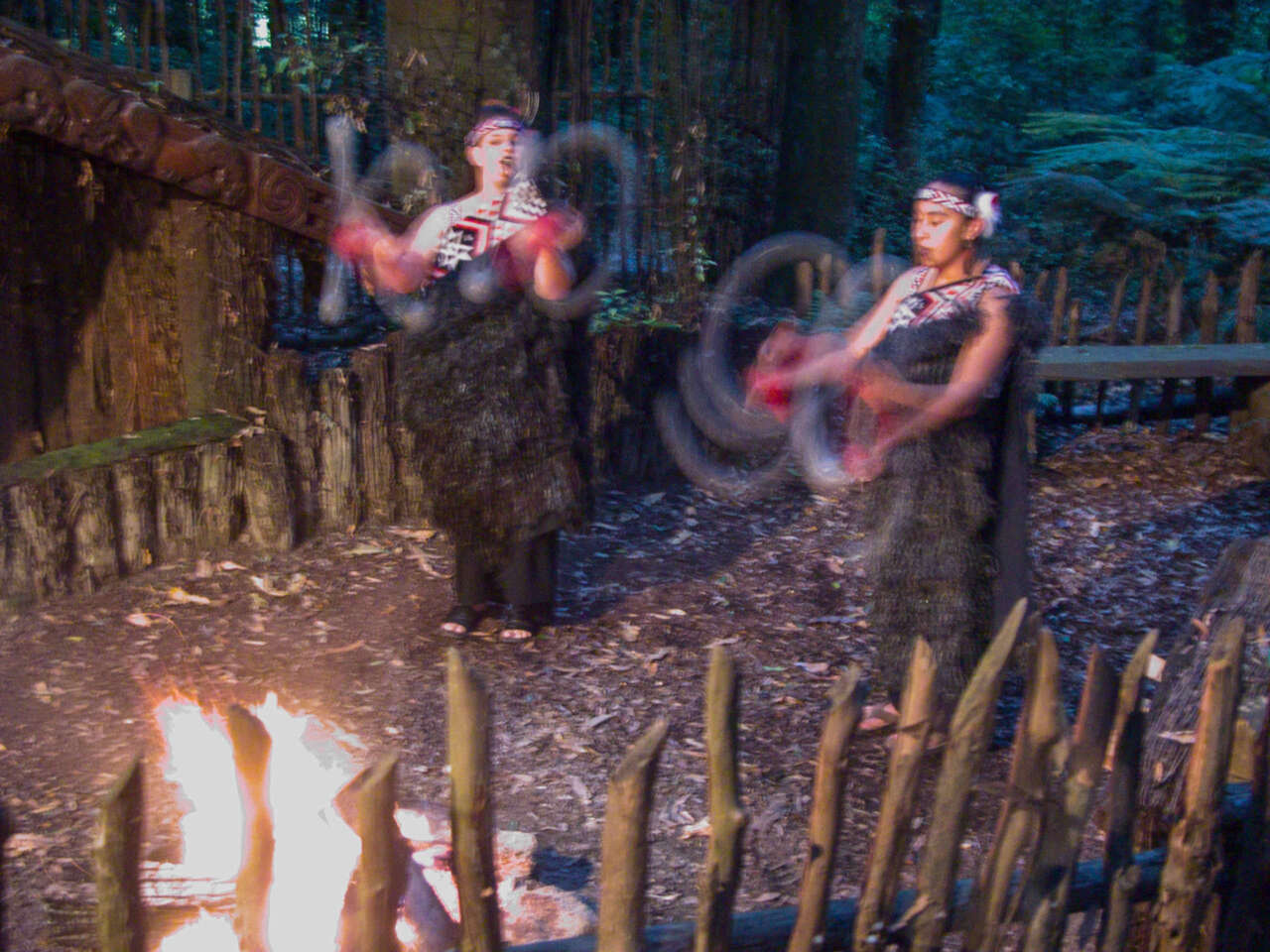
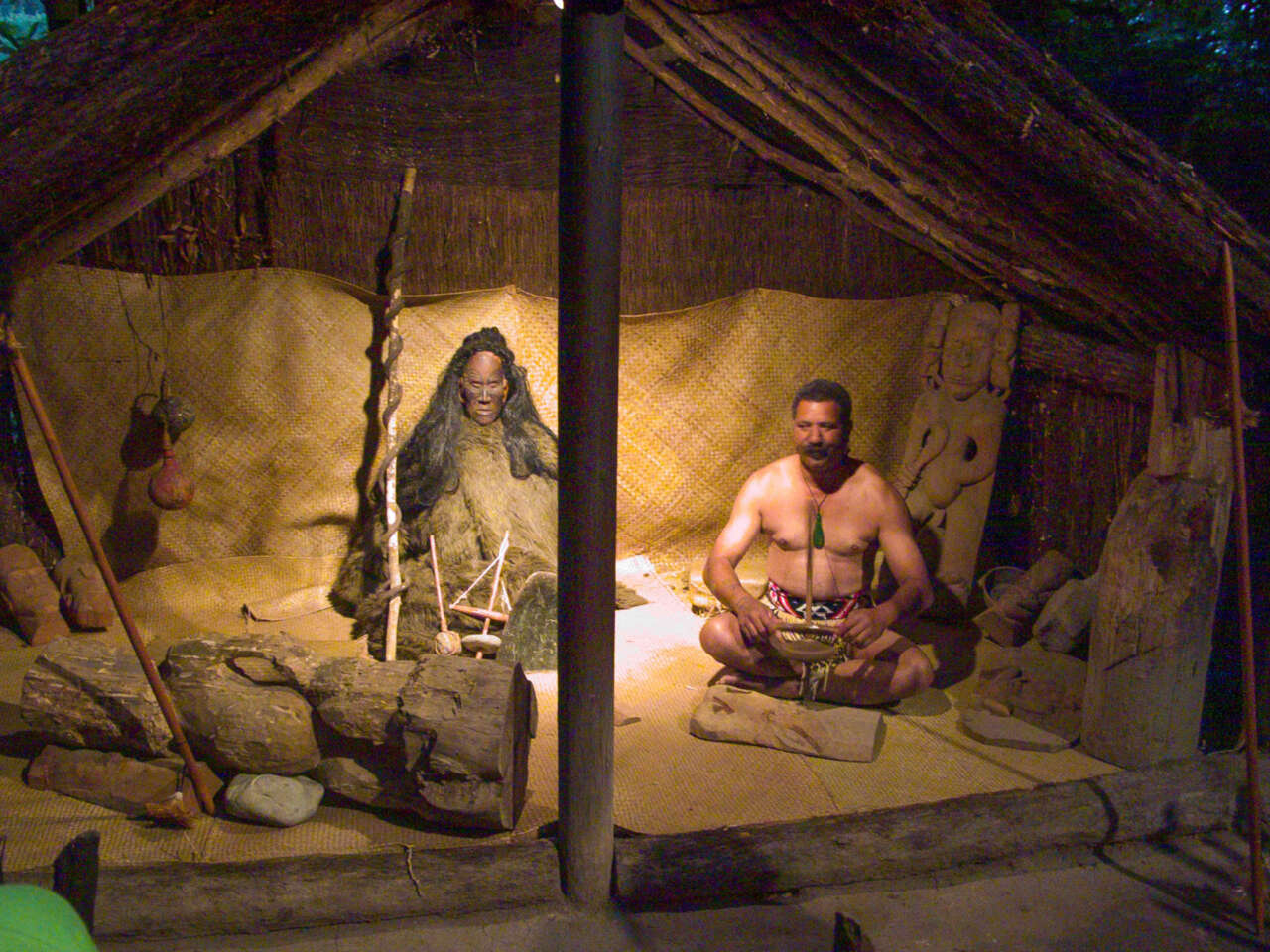
A member of the tribe reciting a chant.
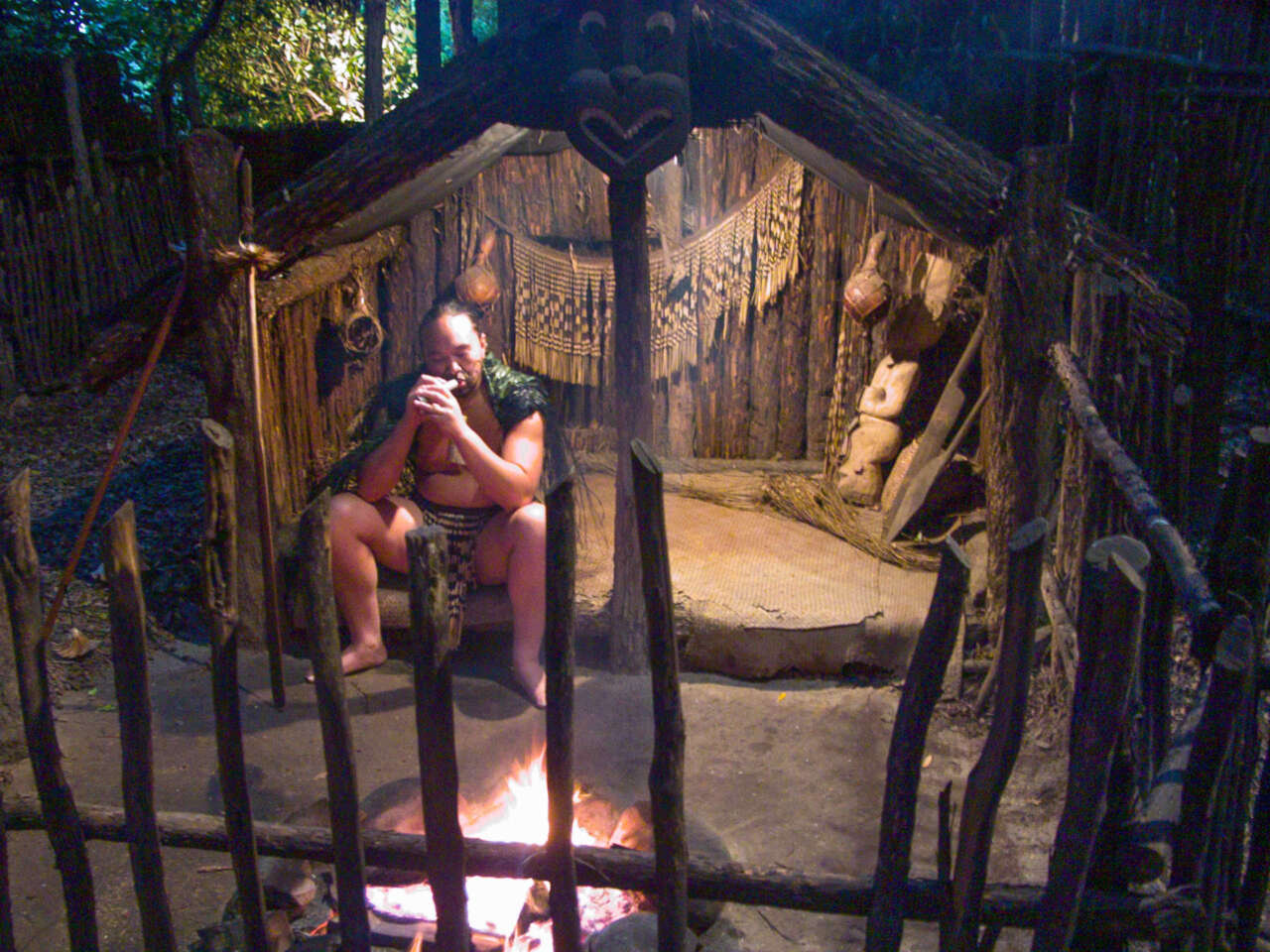
The Chief of the tribe playing on his flute. We also learnt a few Maori words: “Kia Ora” (hello), and “Paki Paki” (clap your hands).
Full set of photos:
